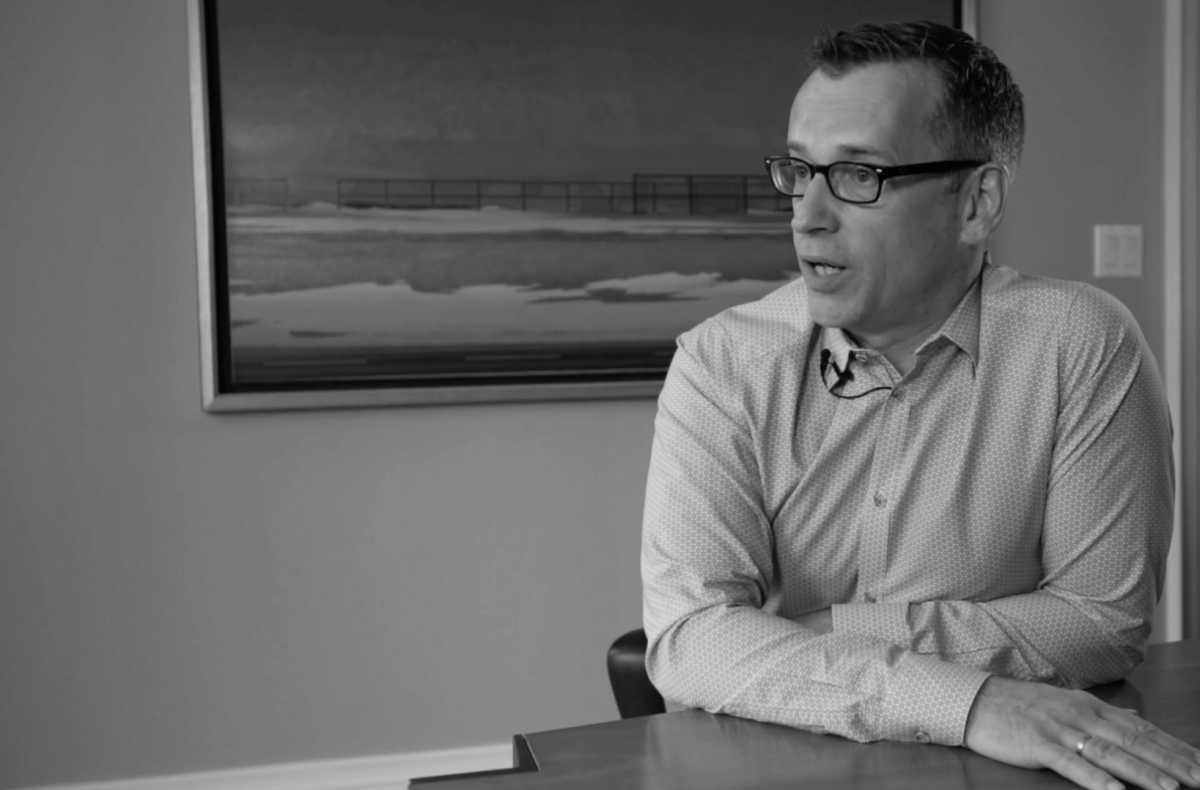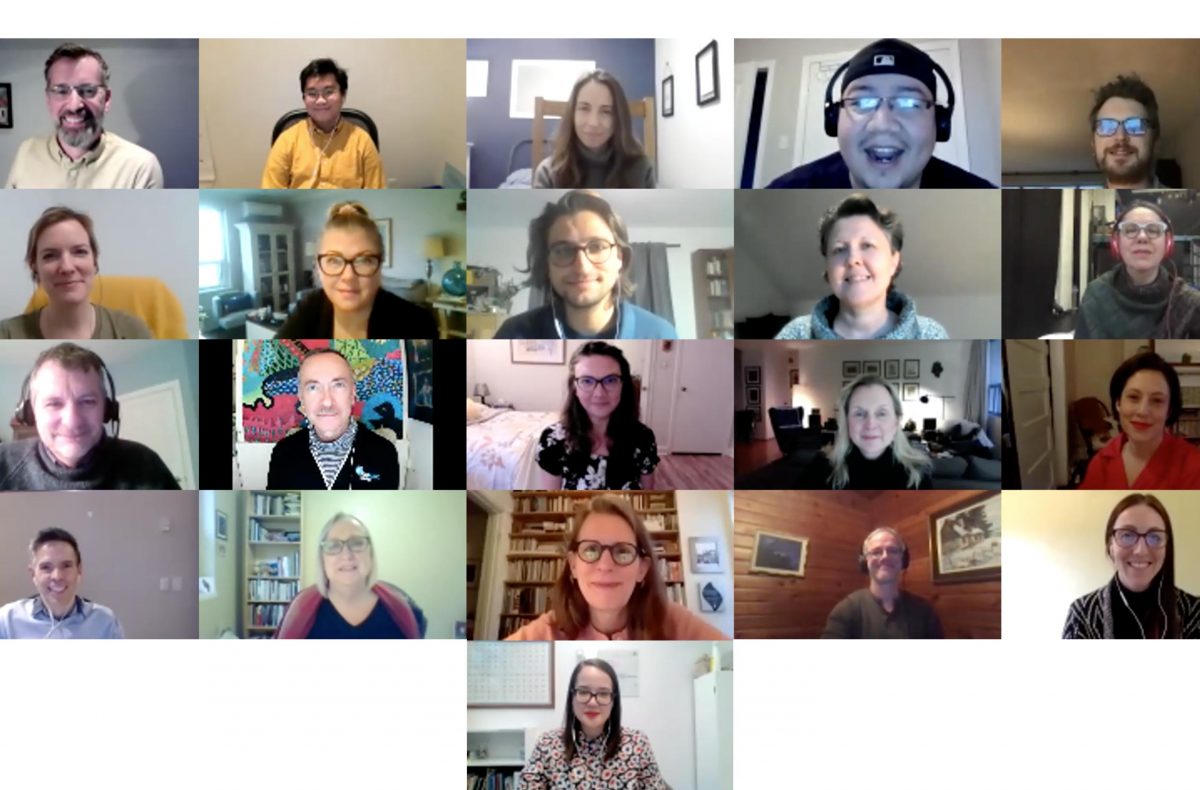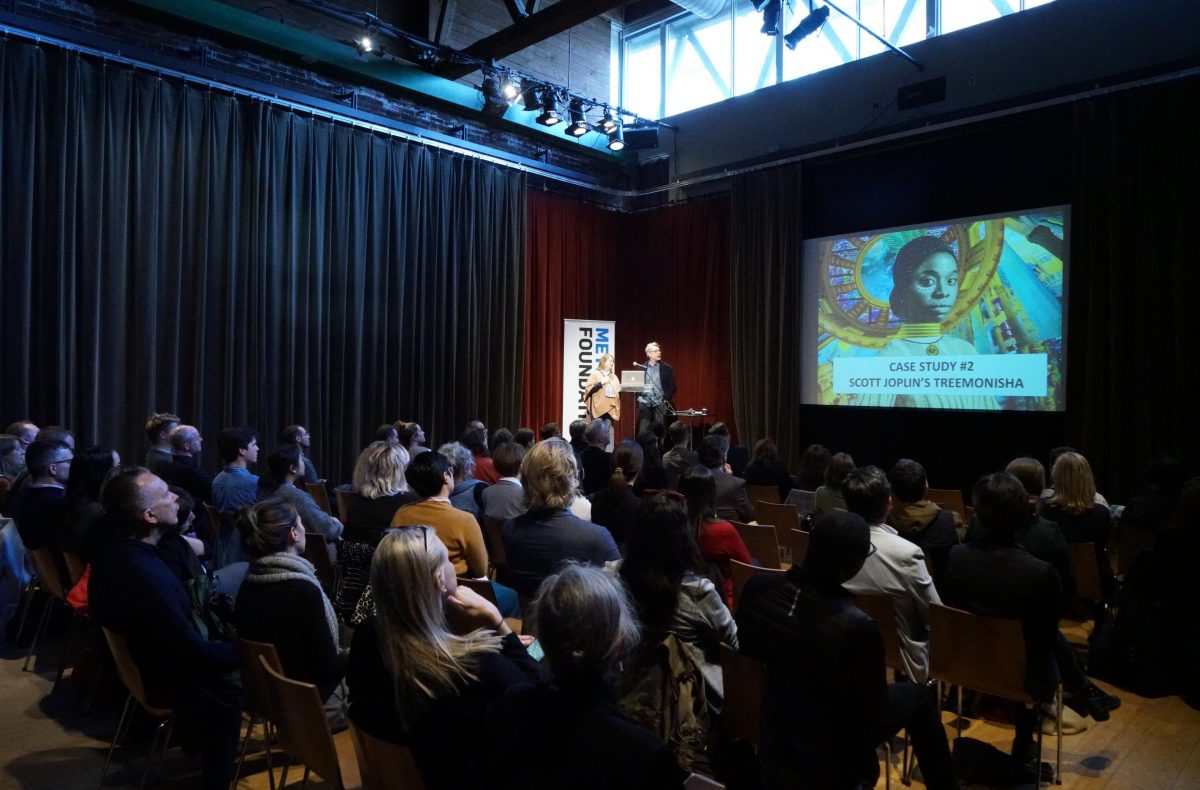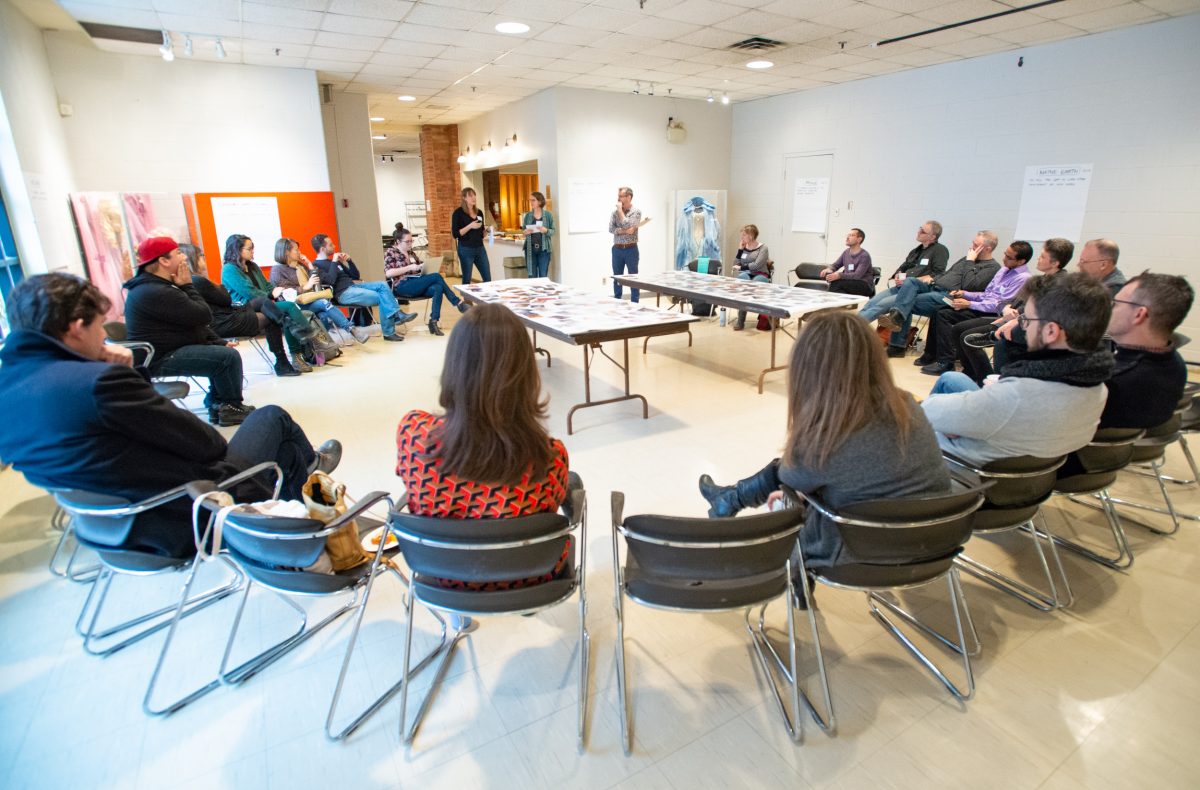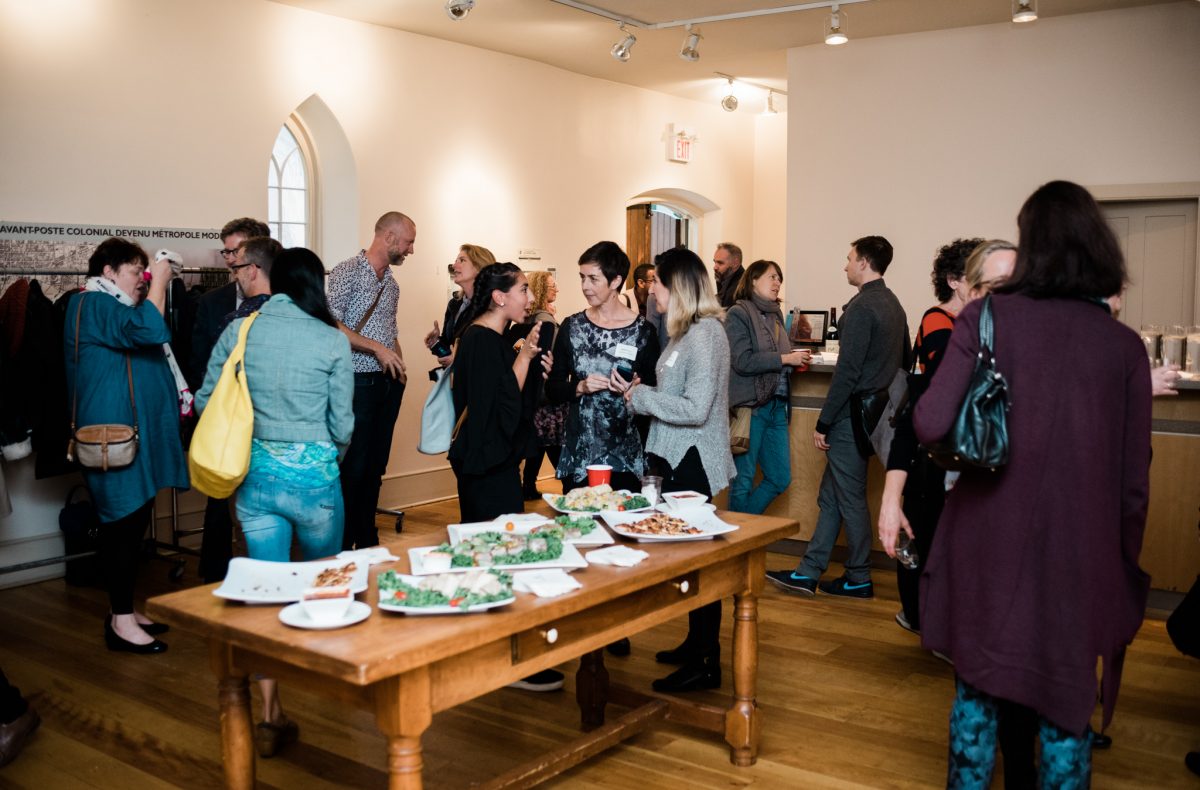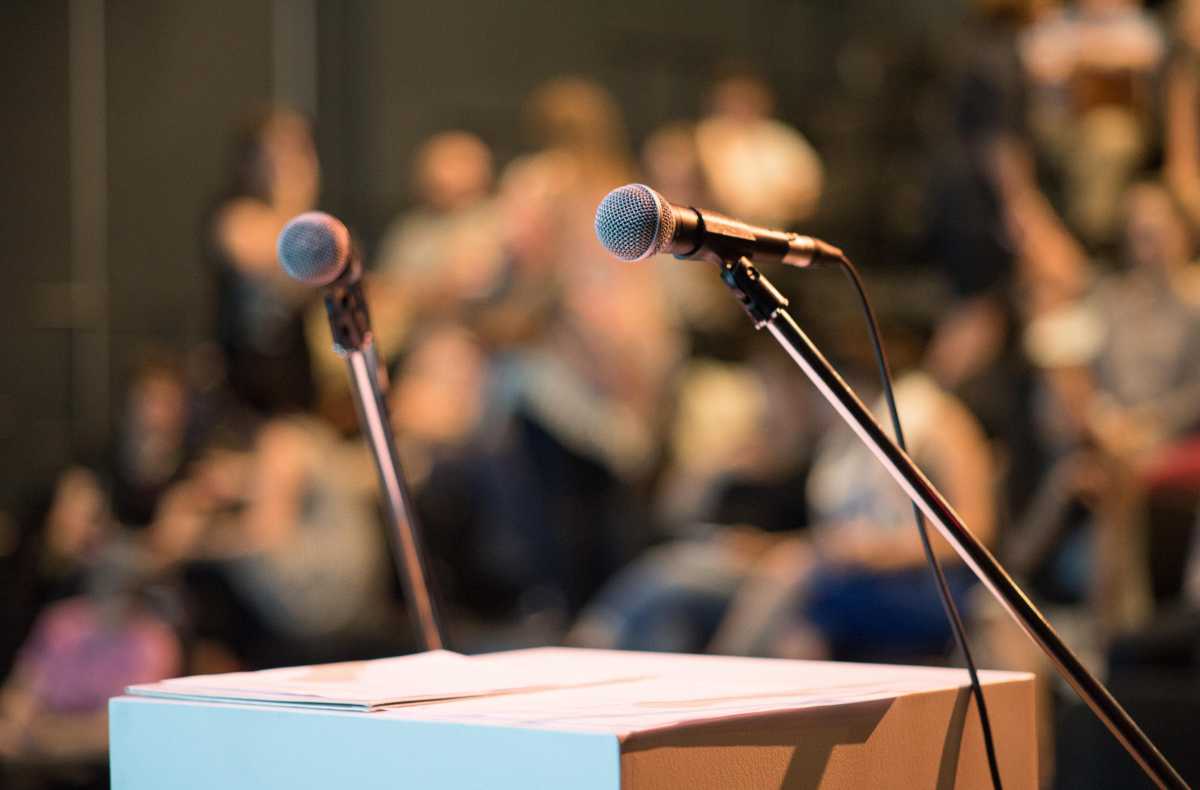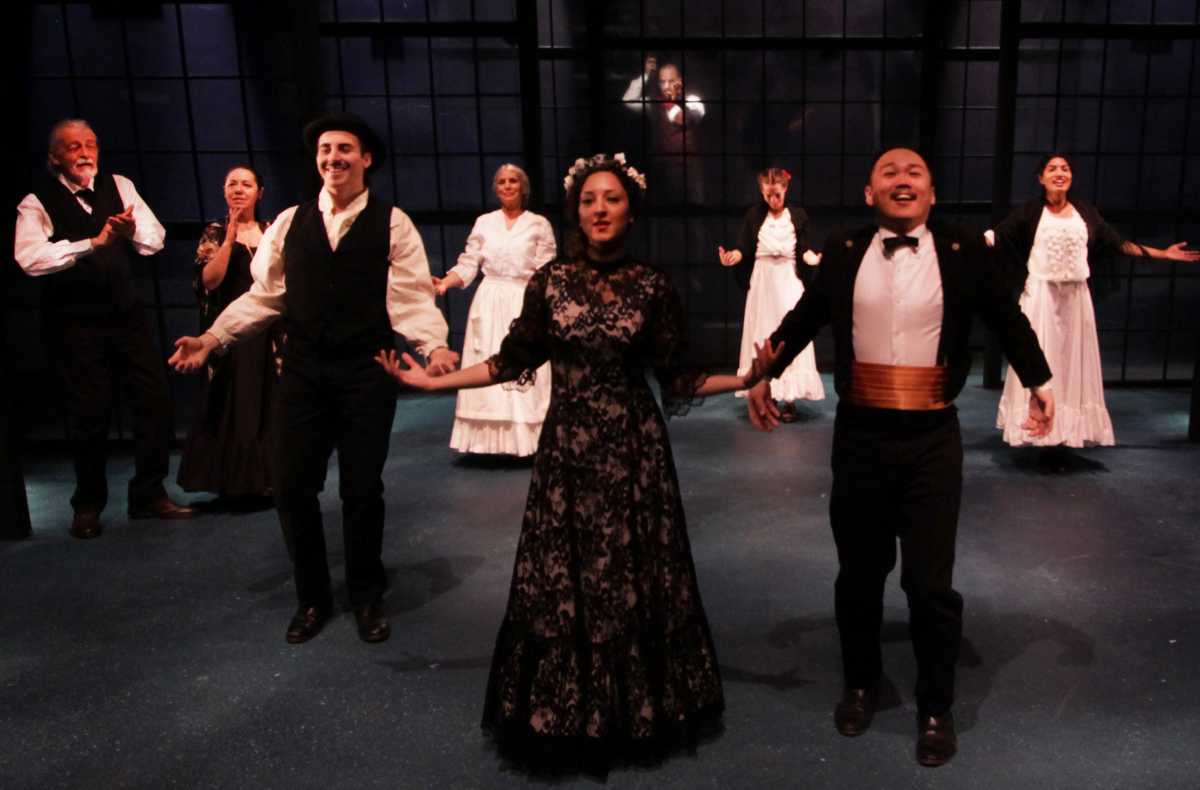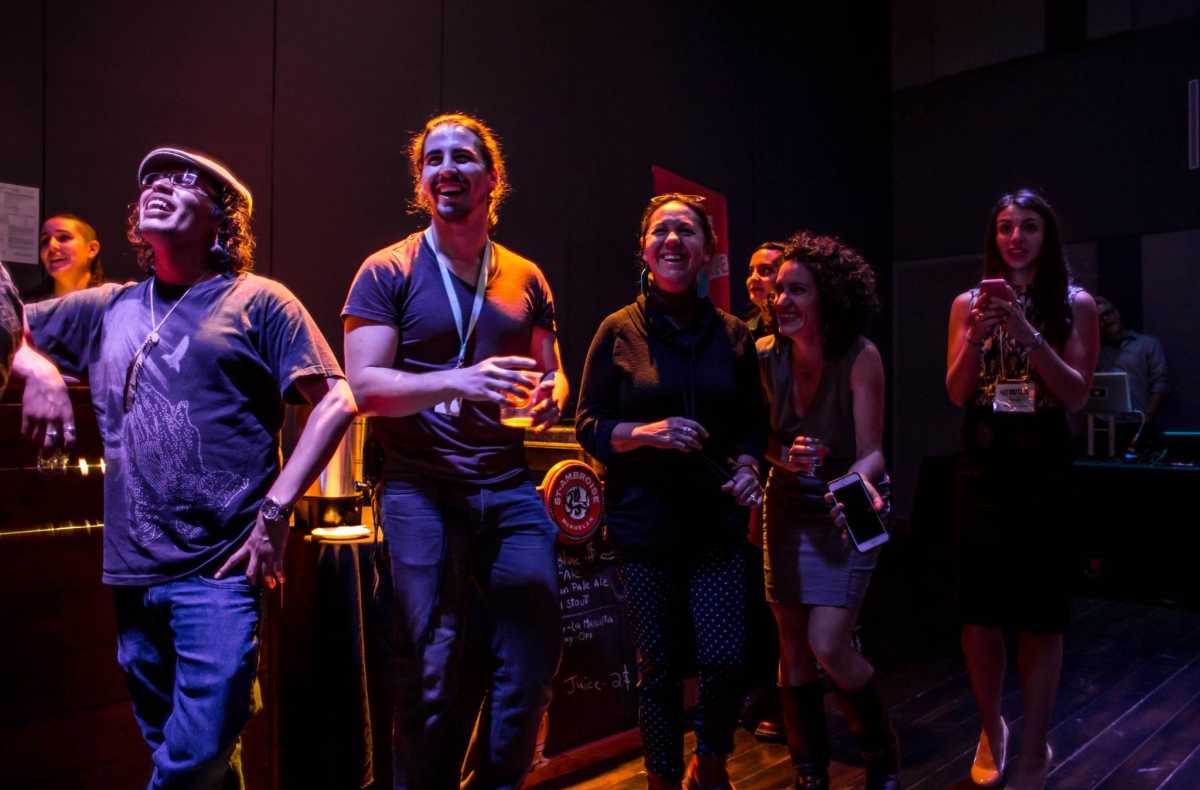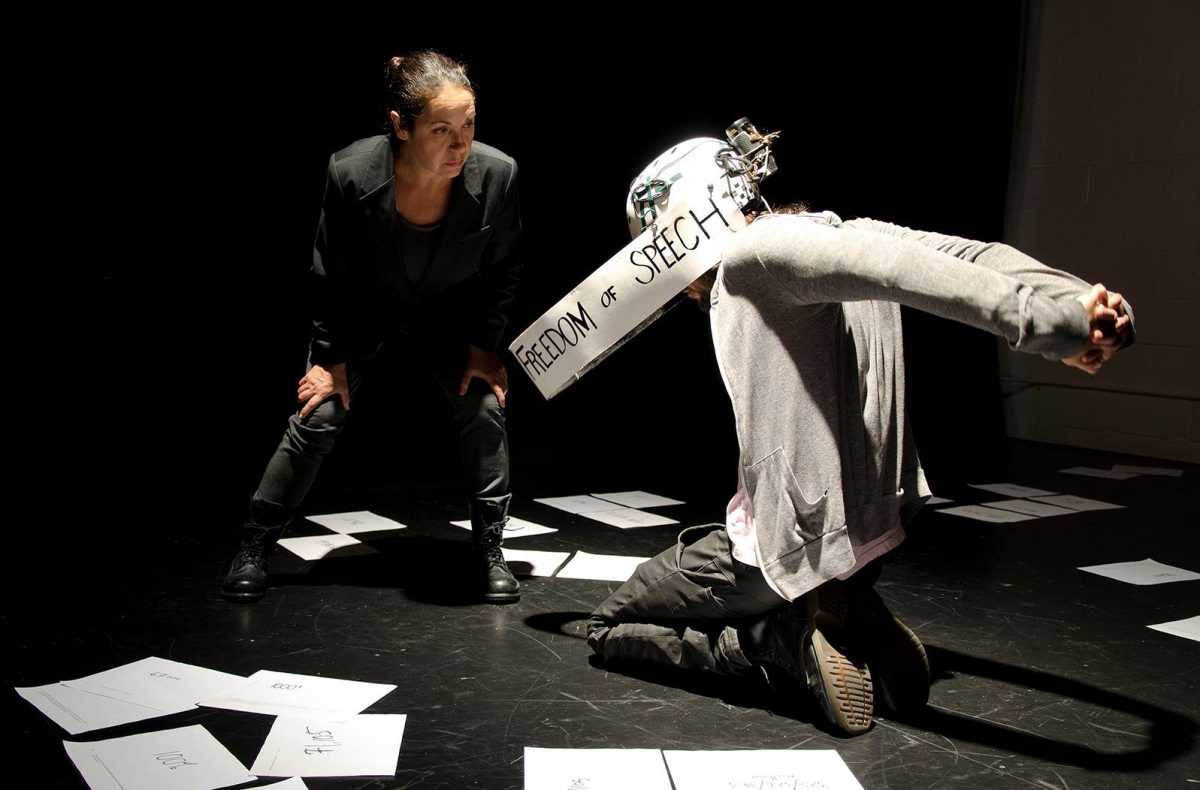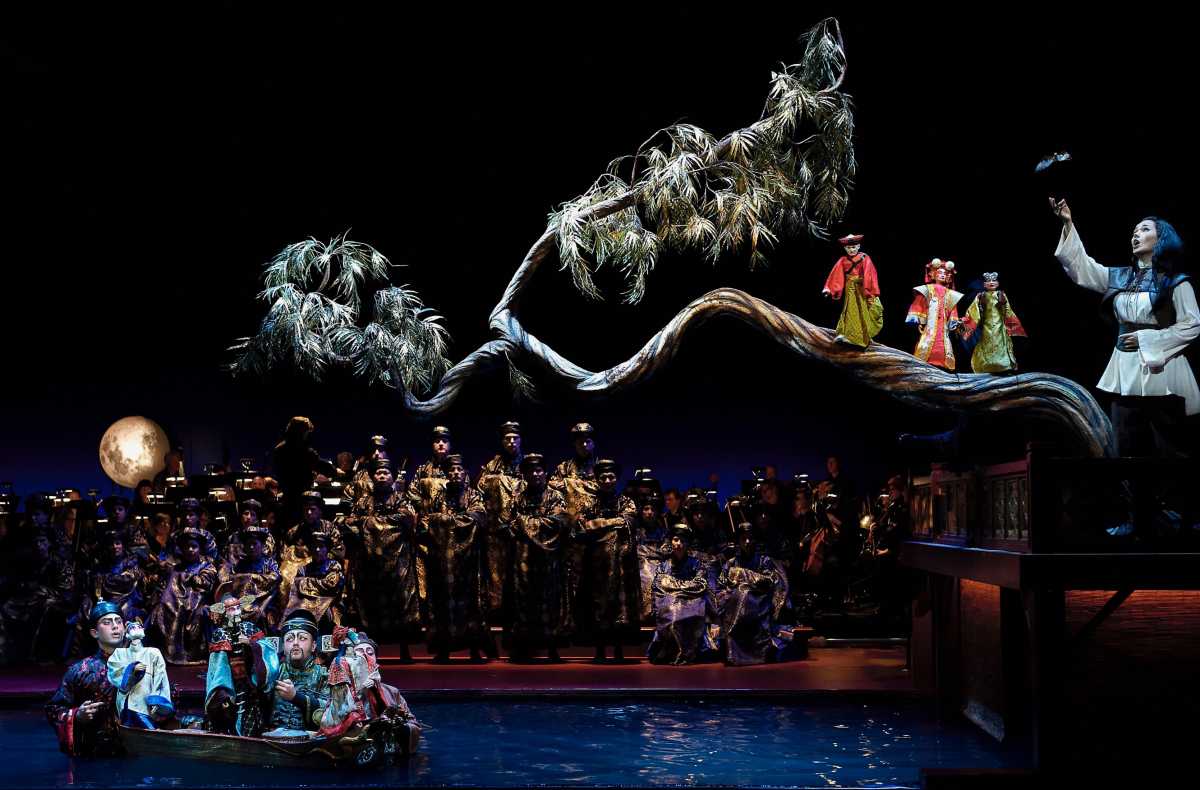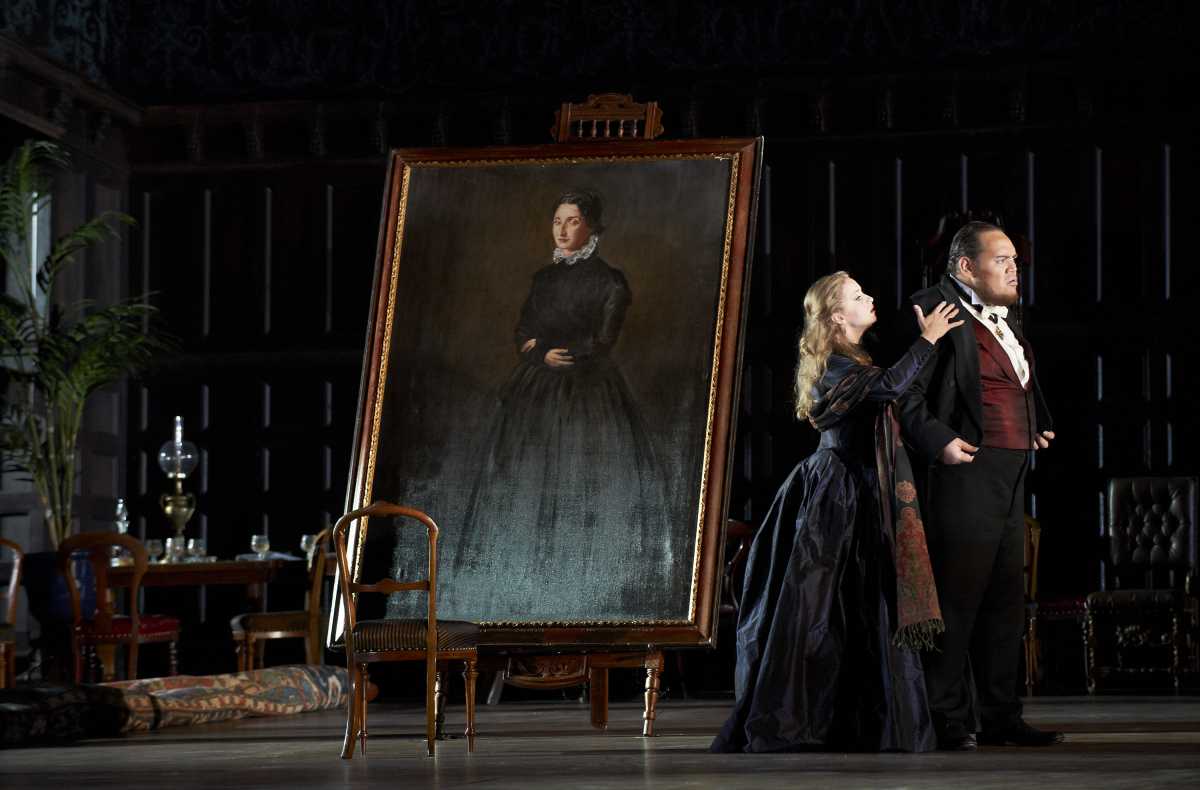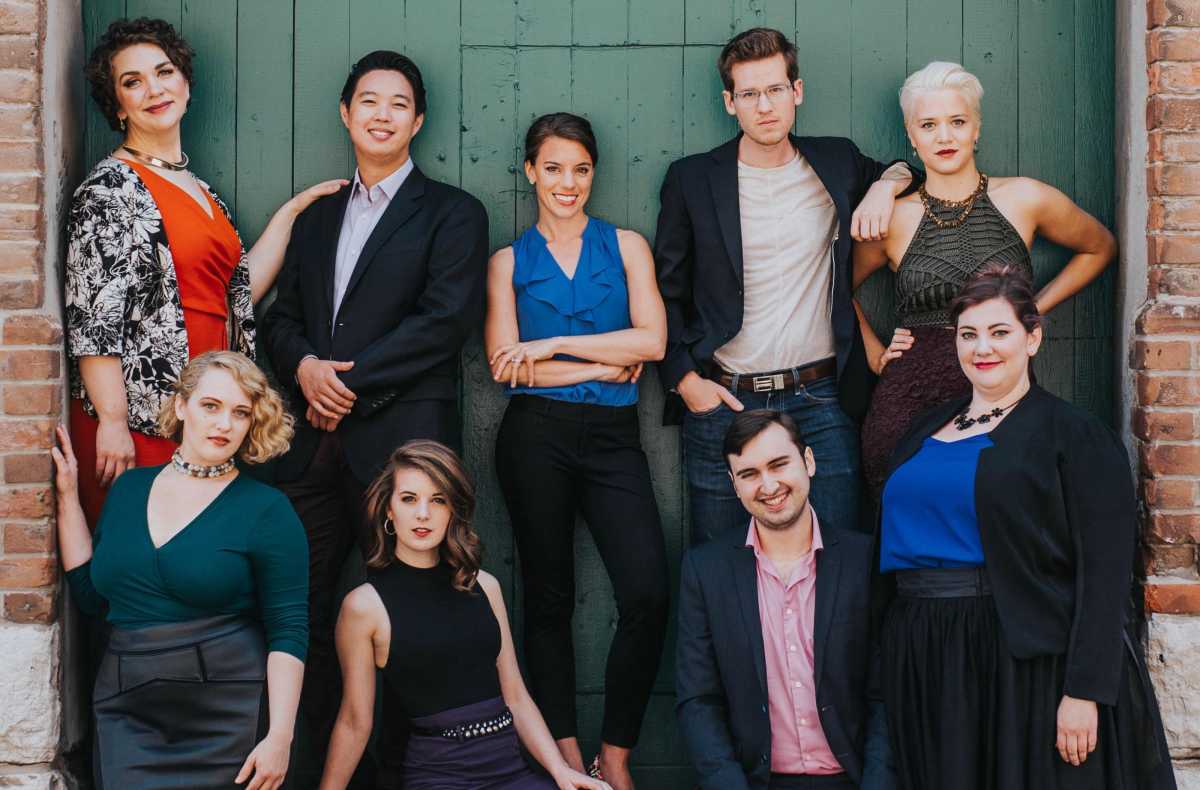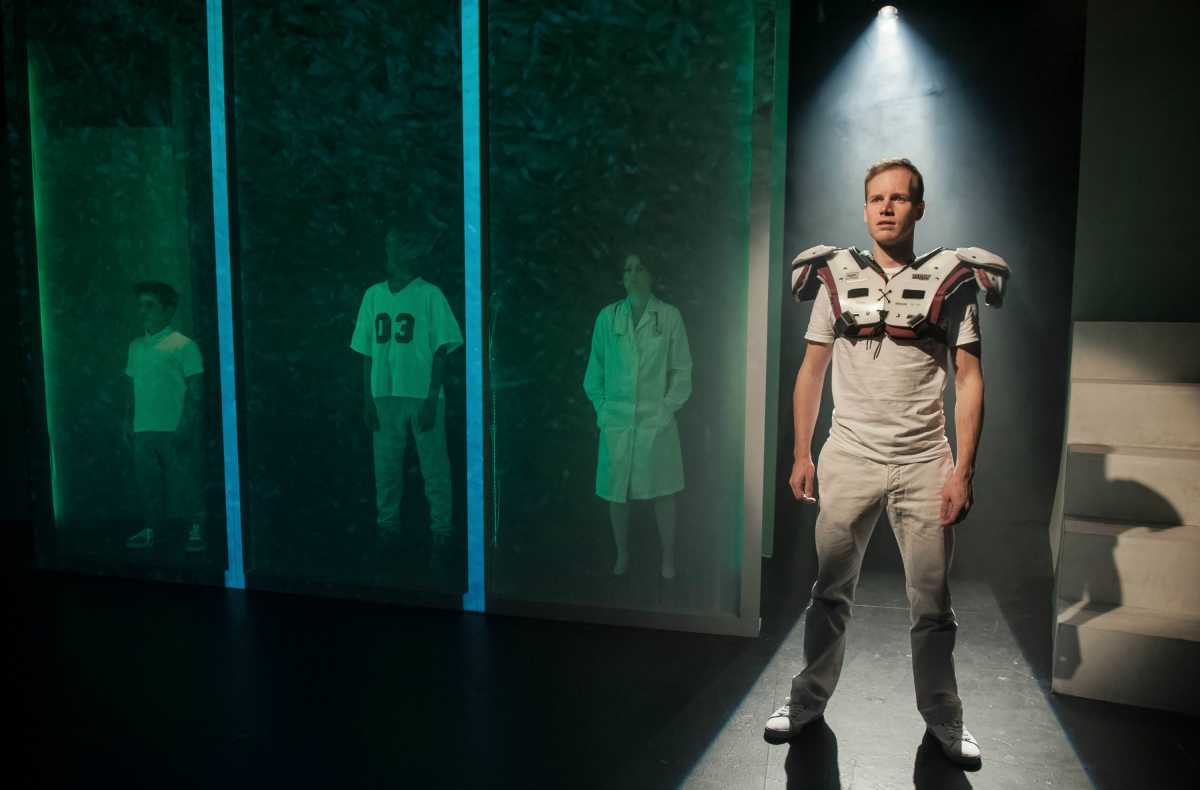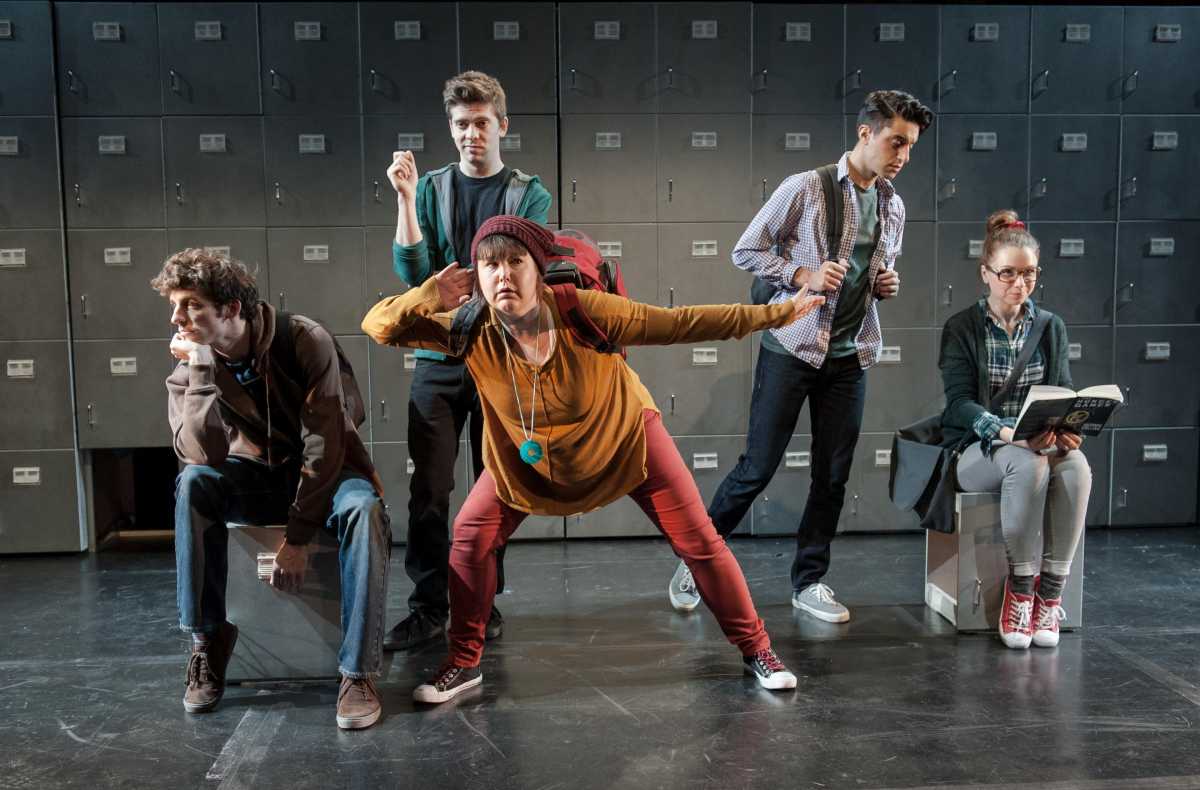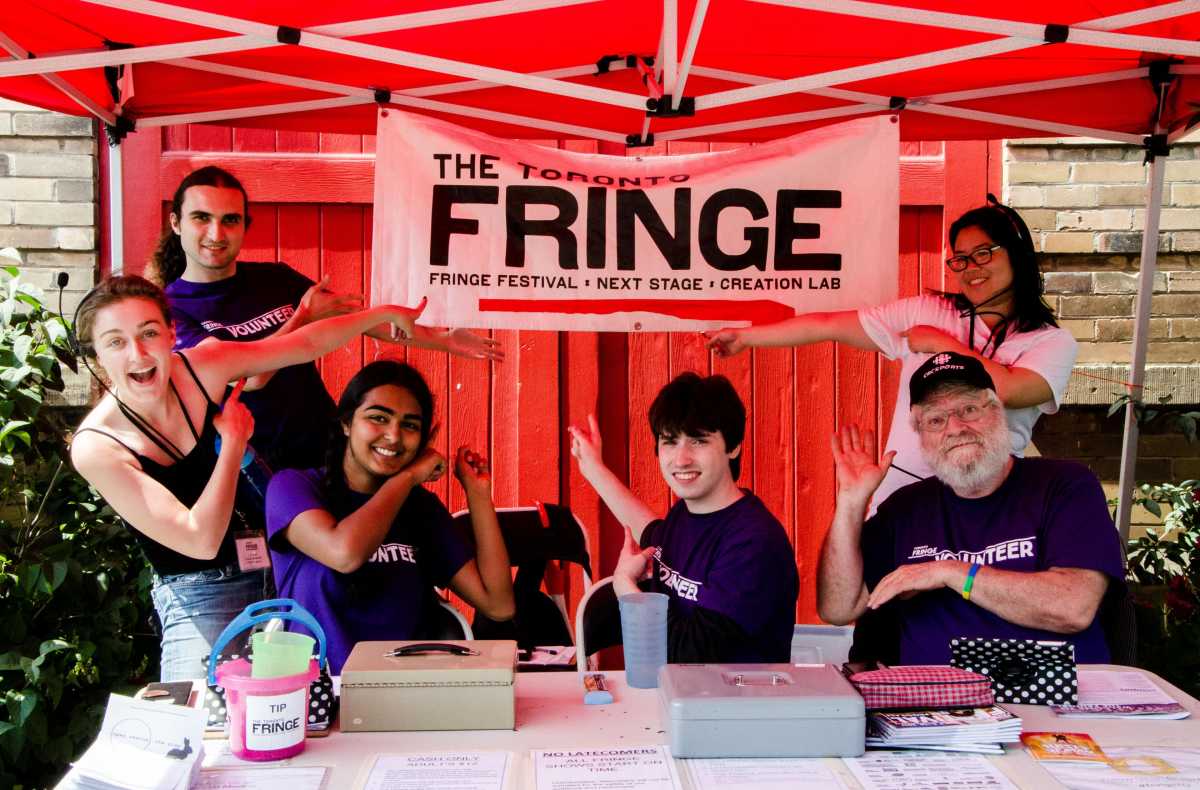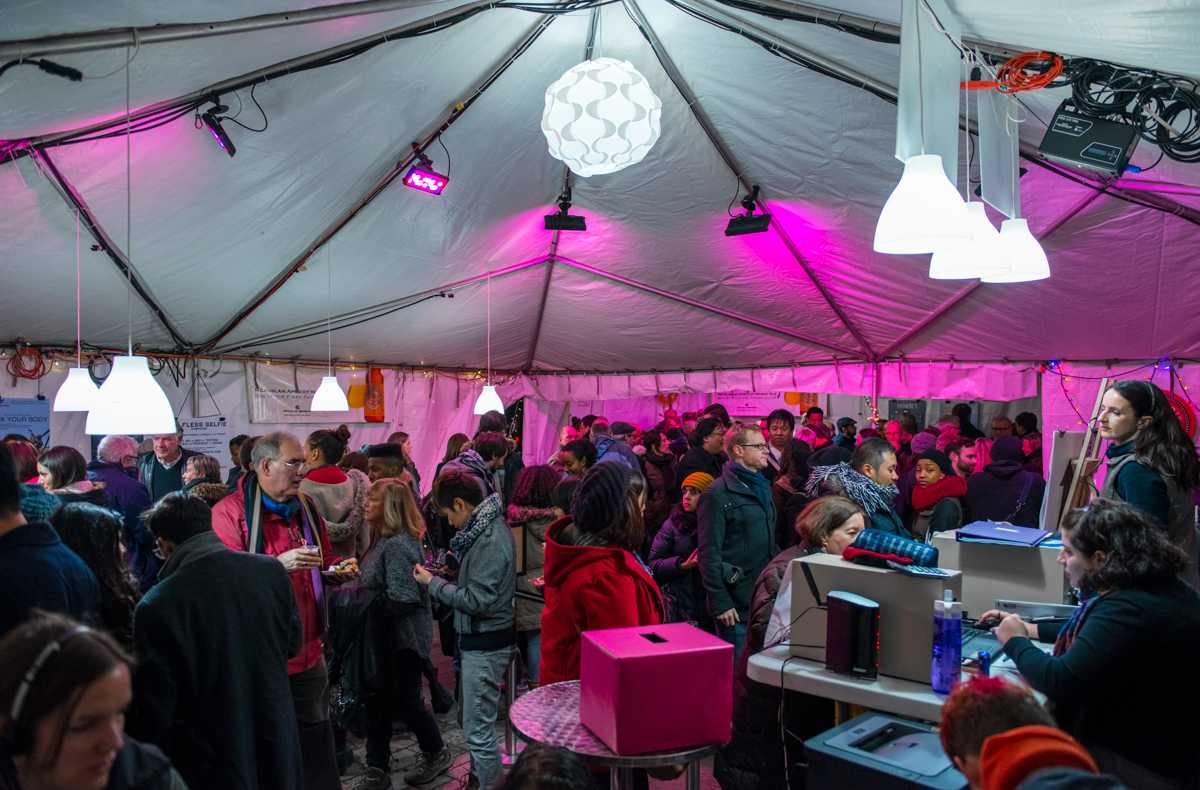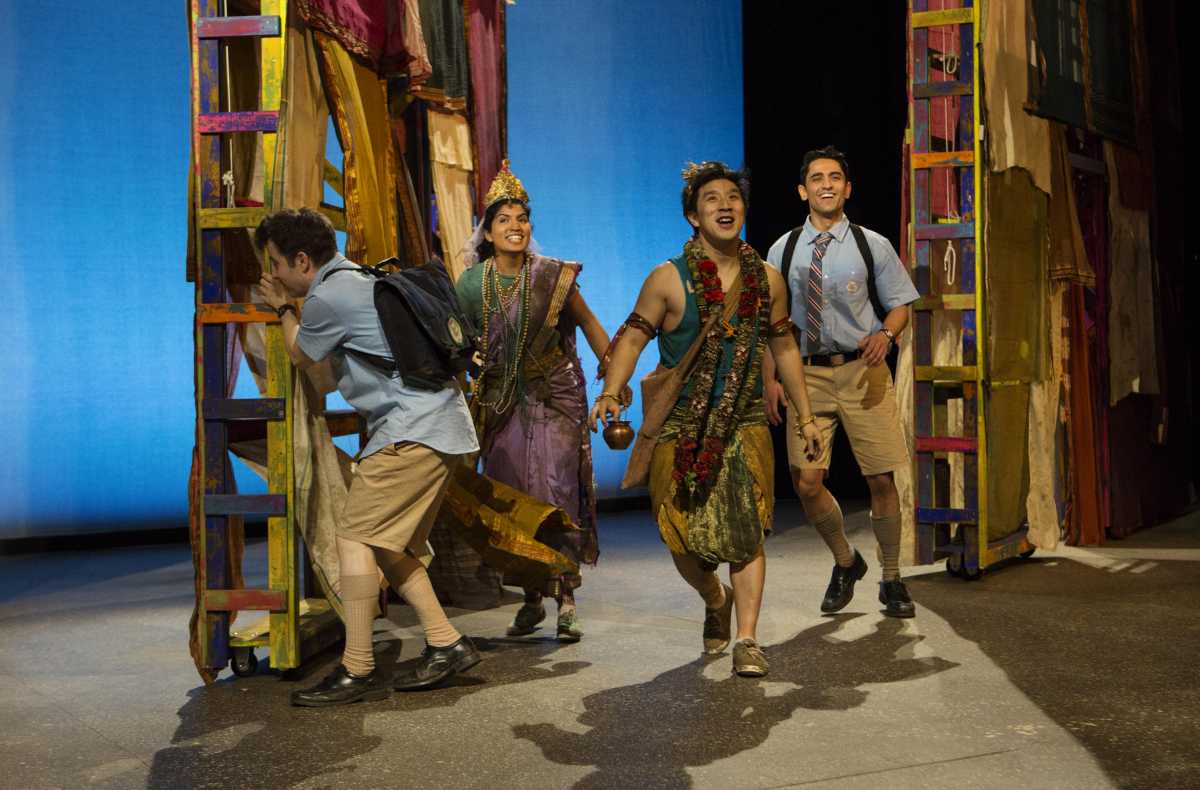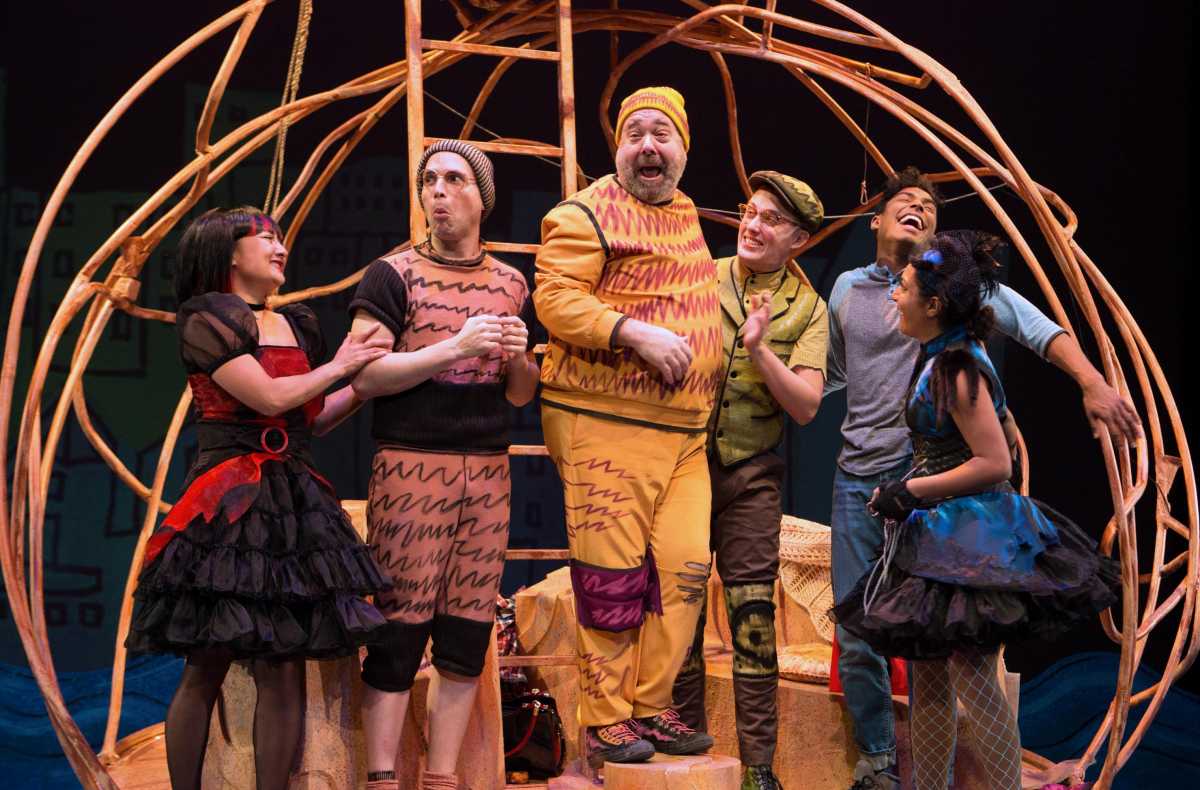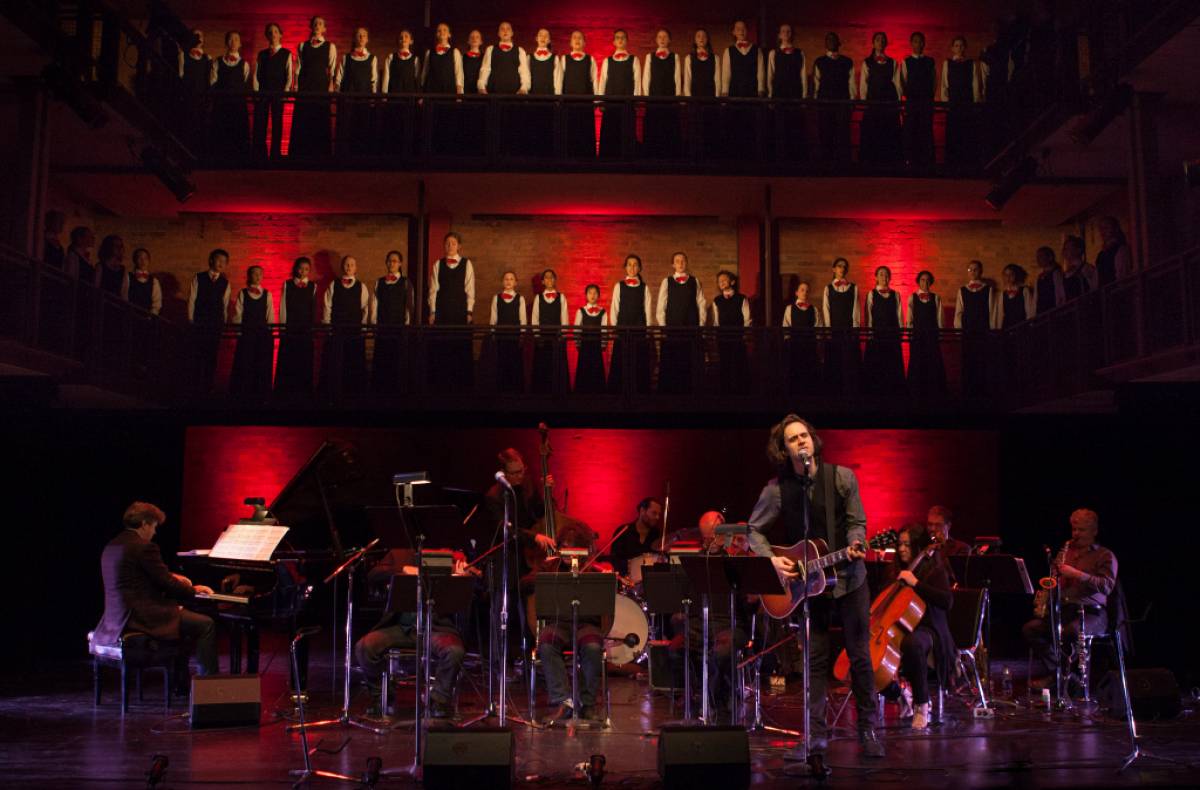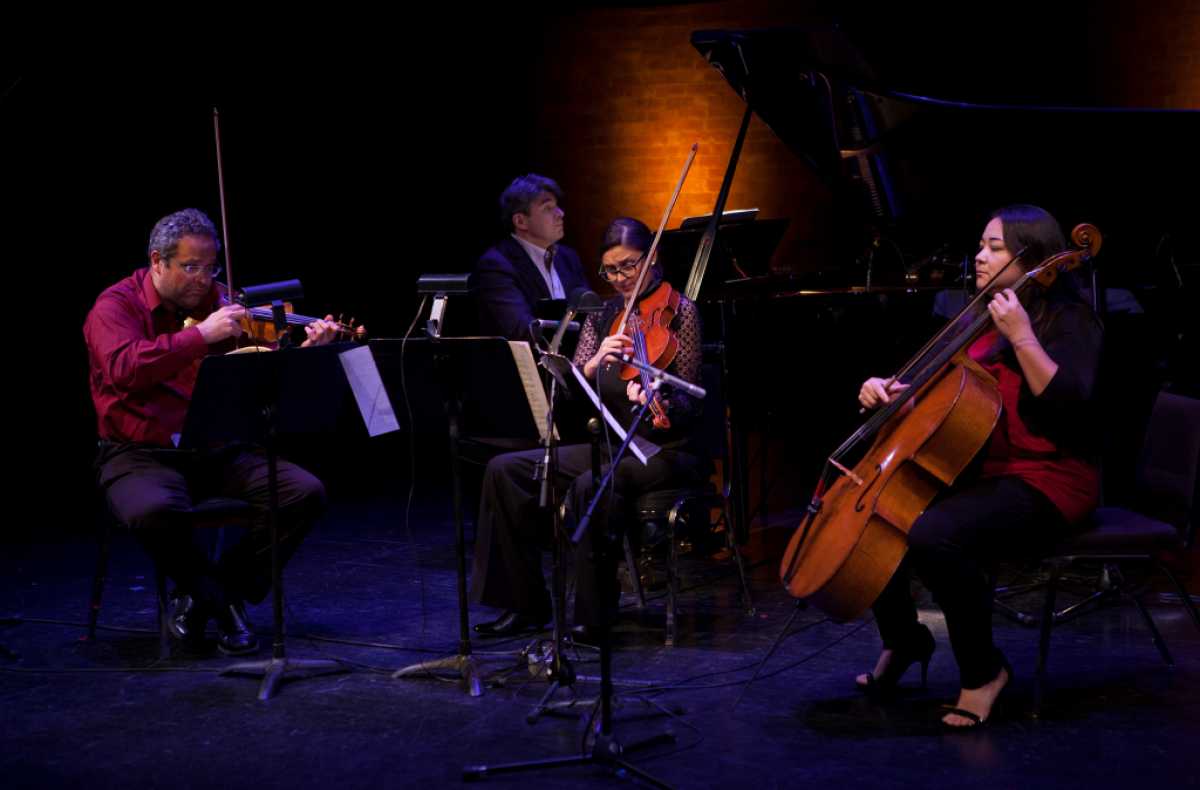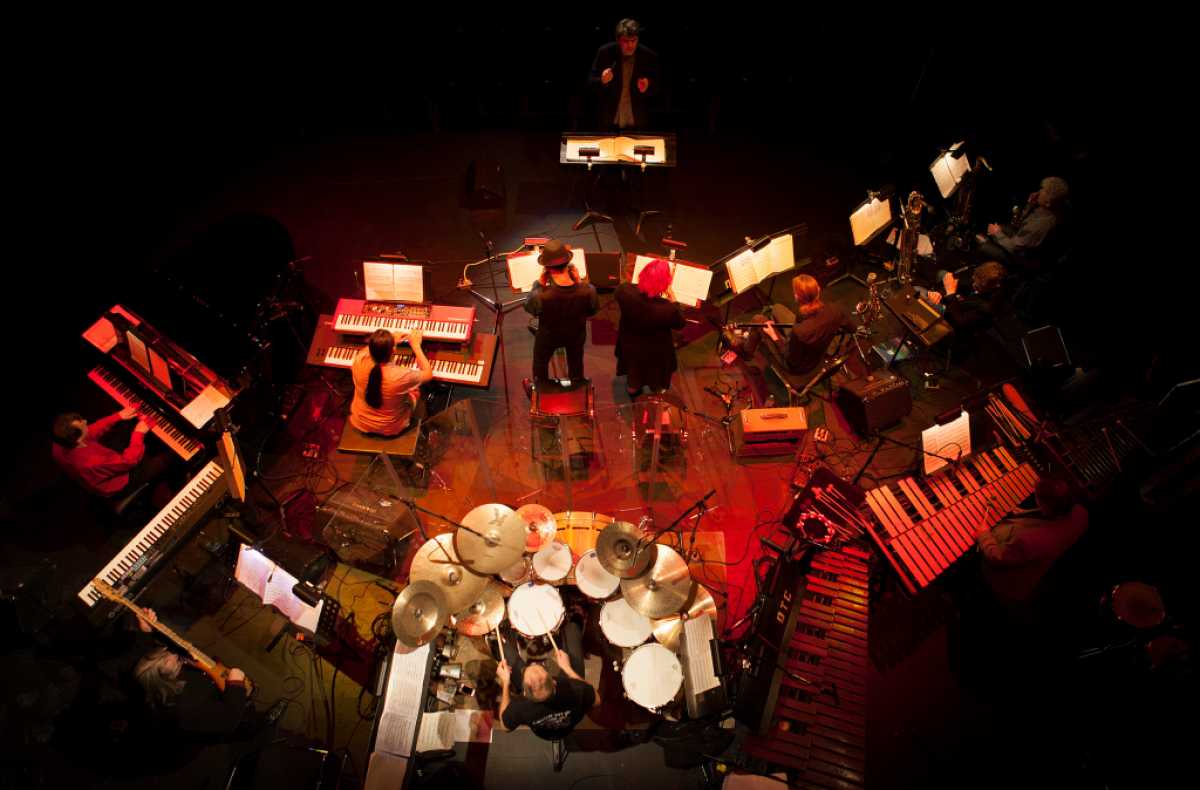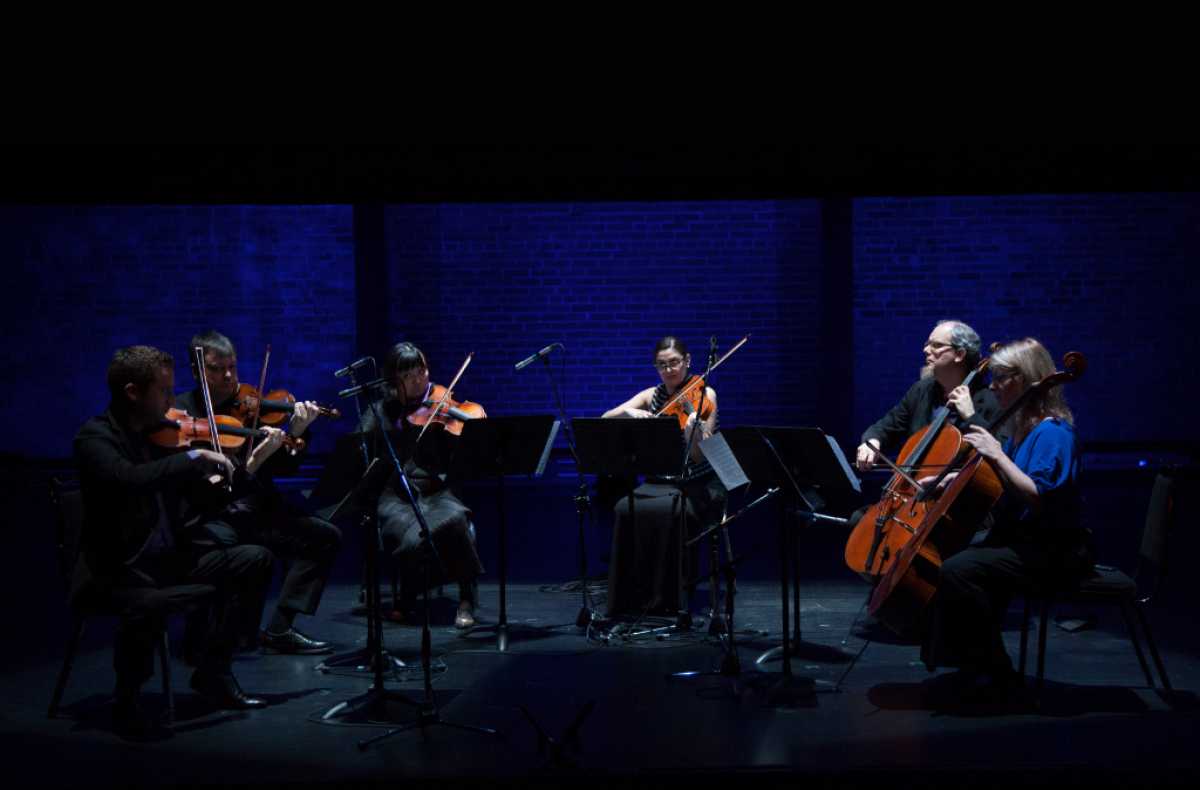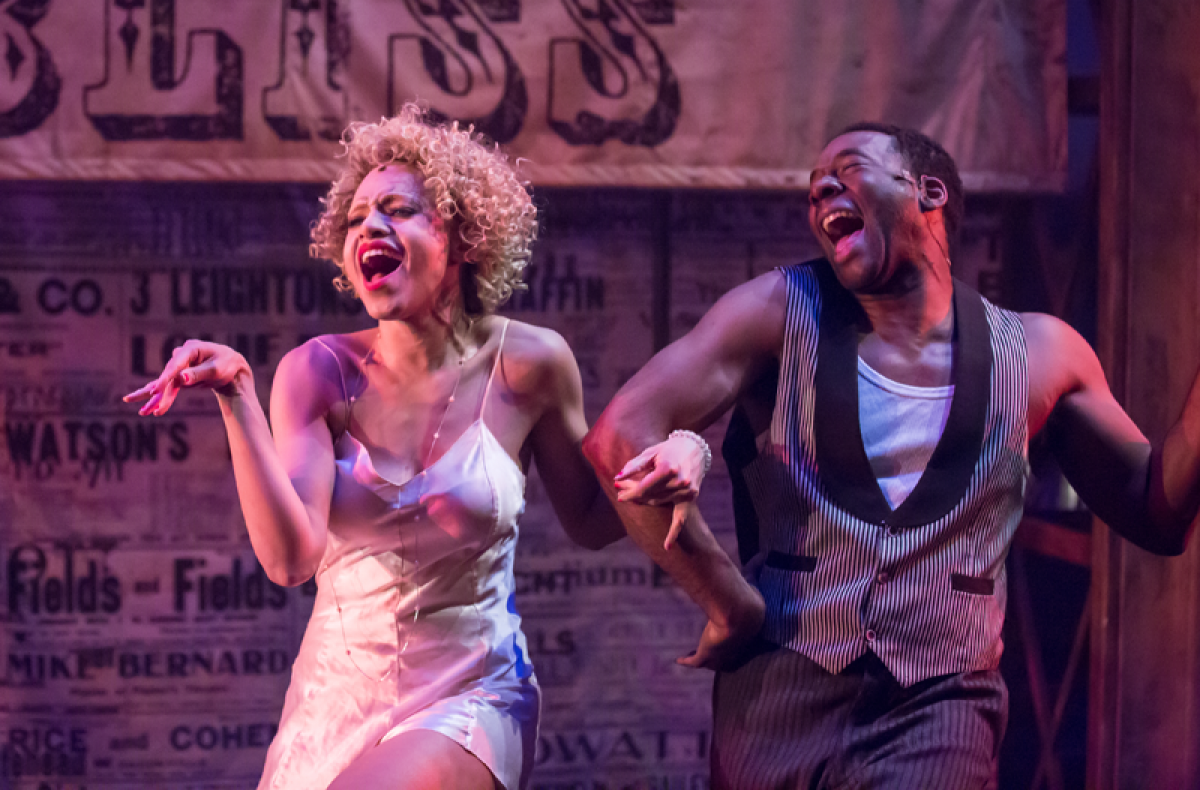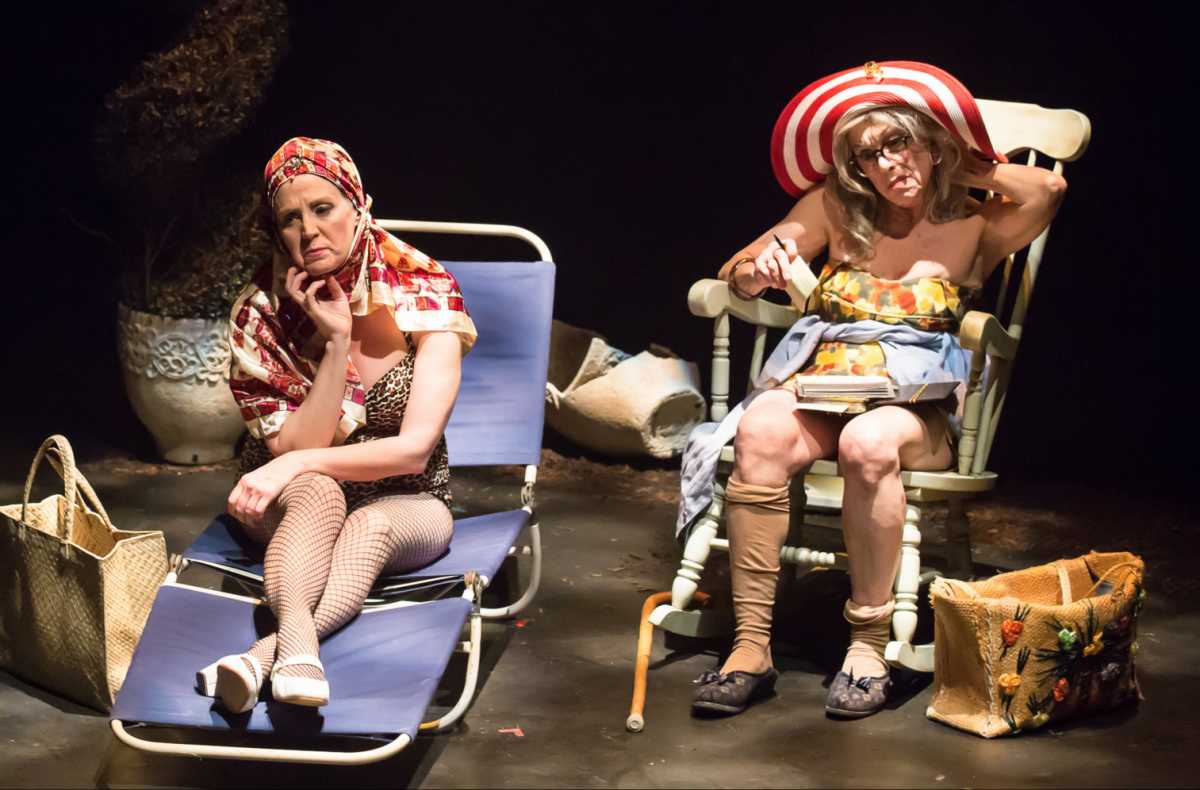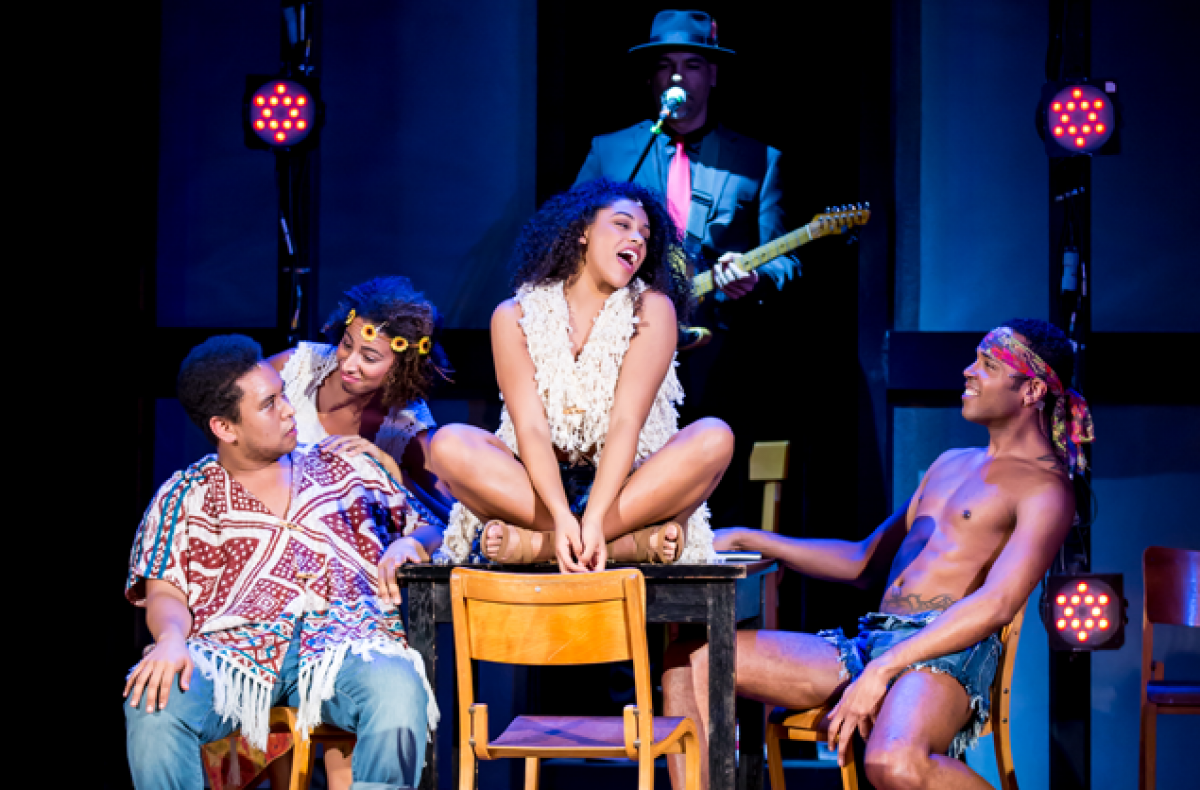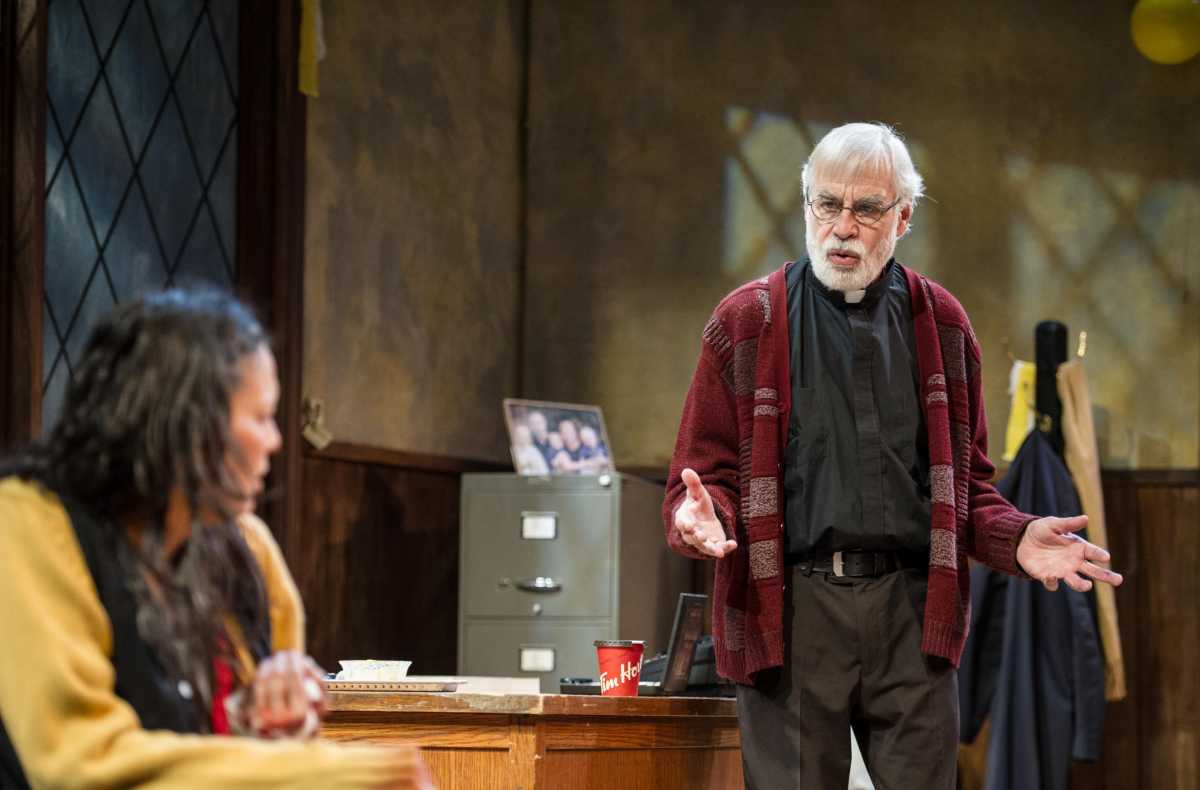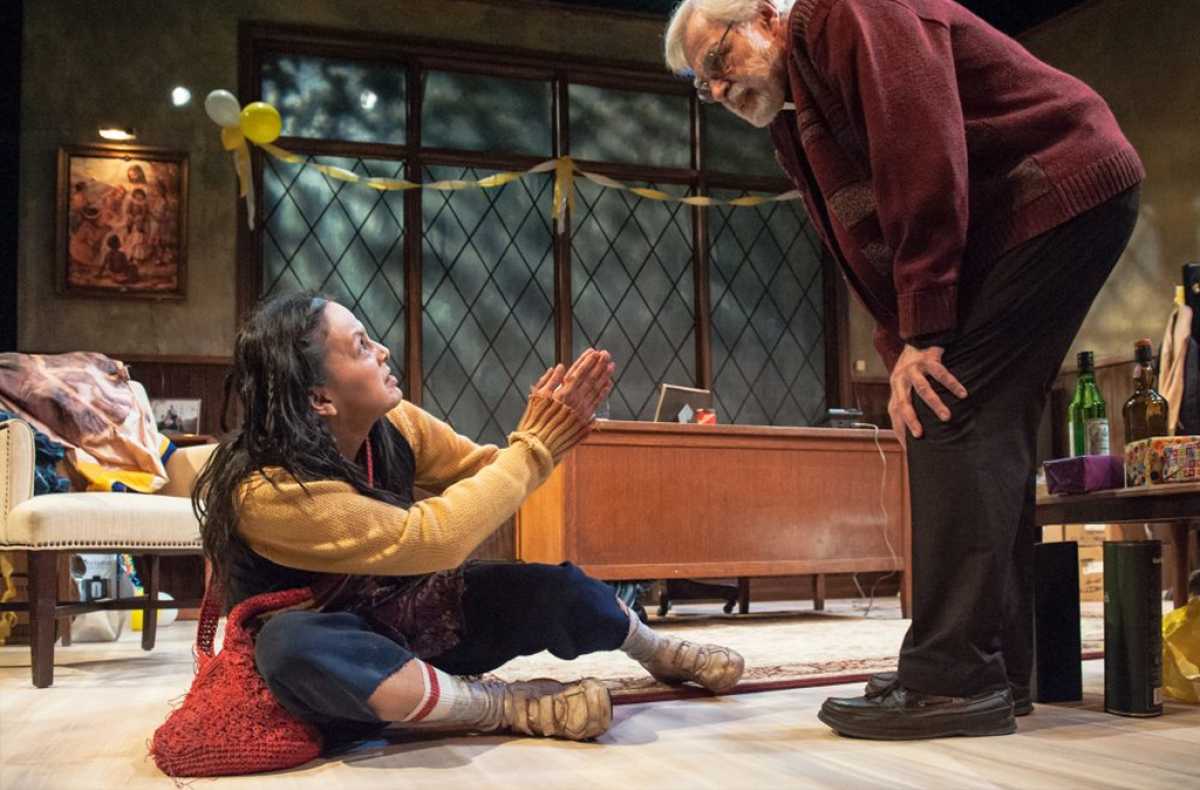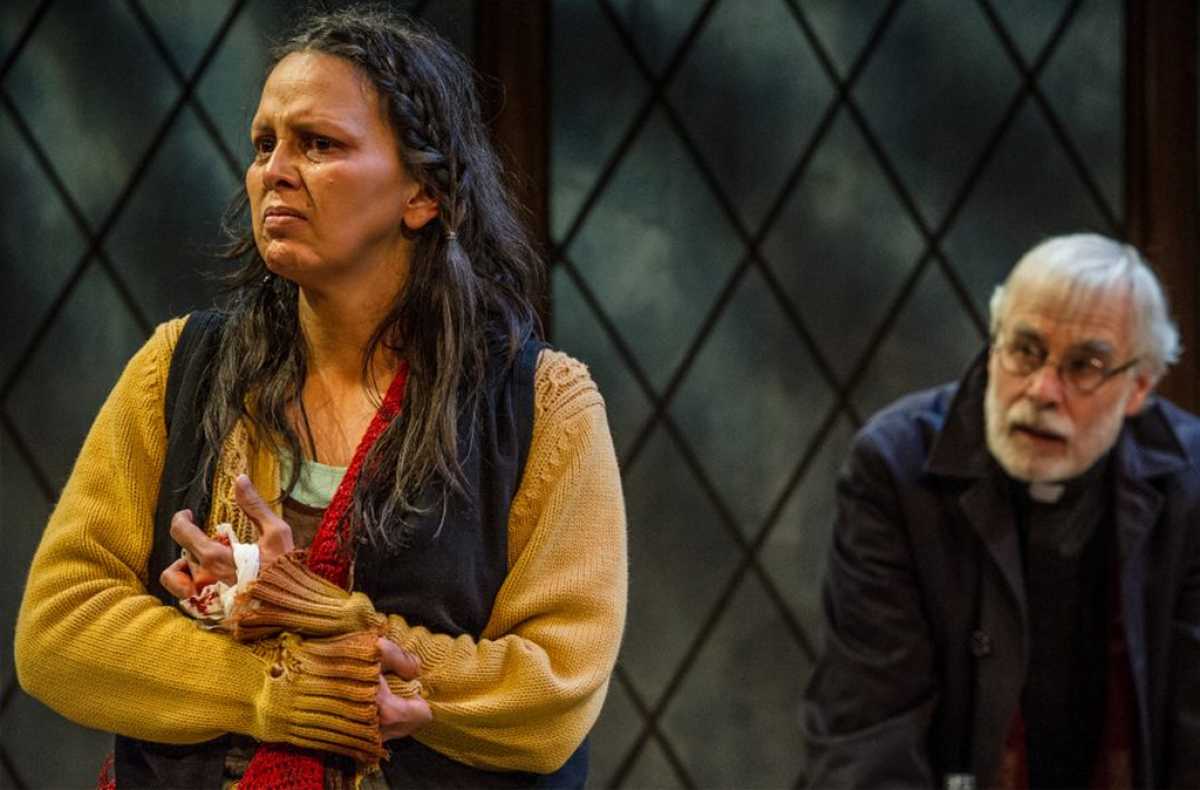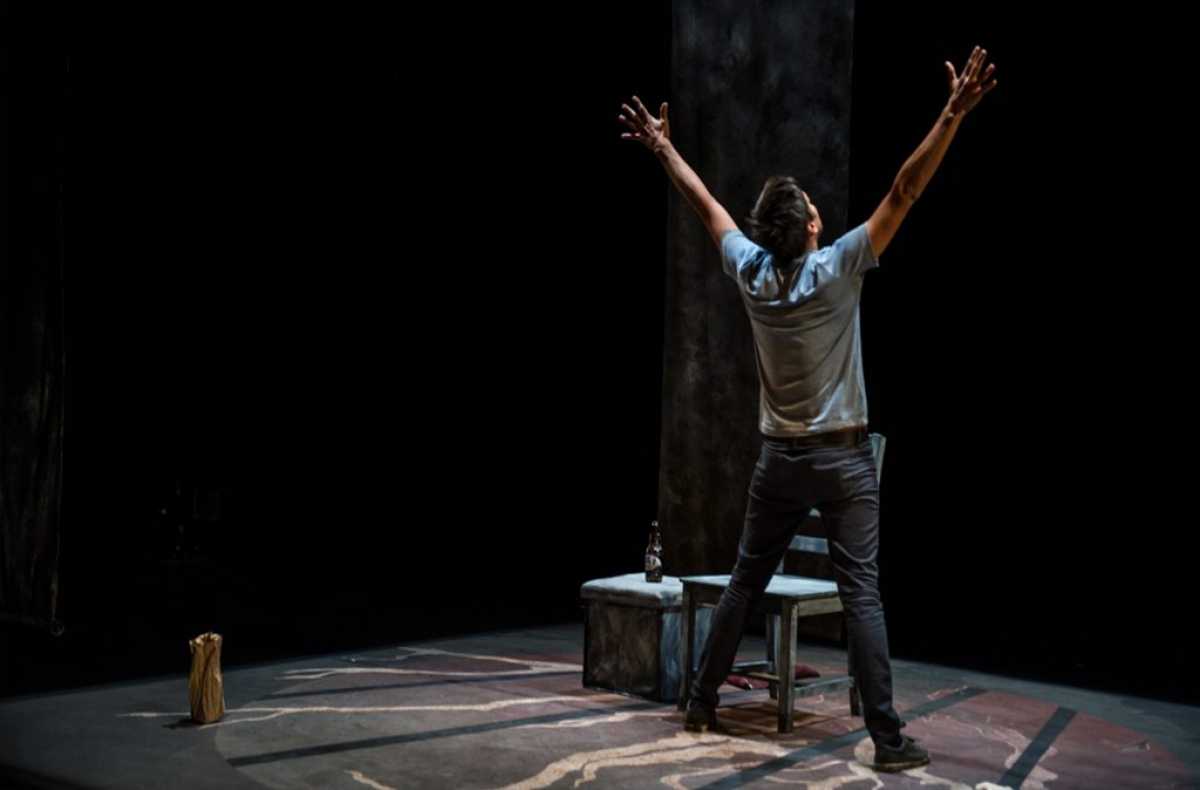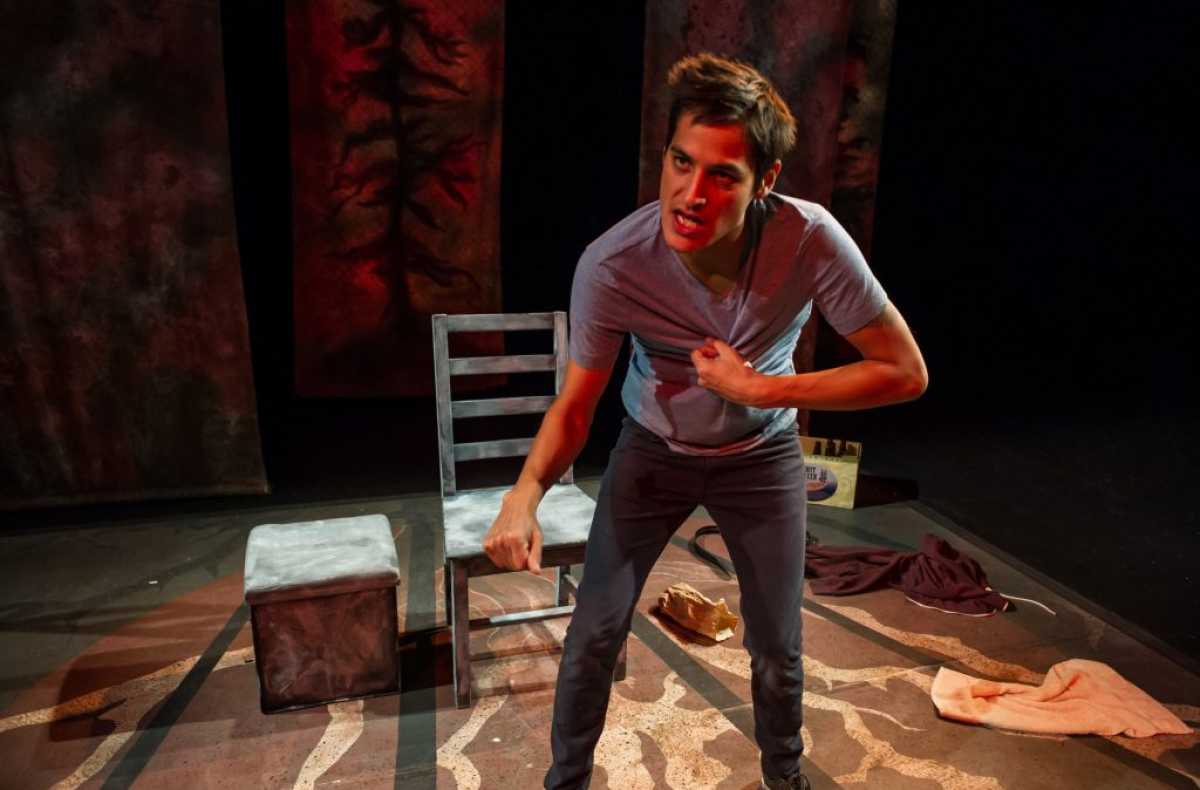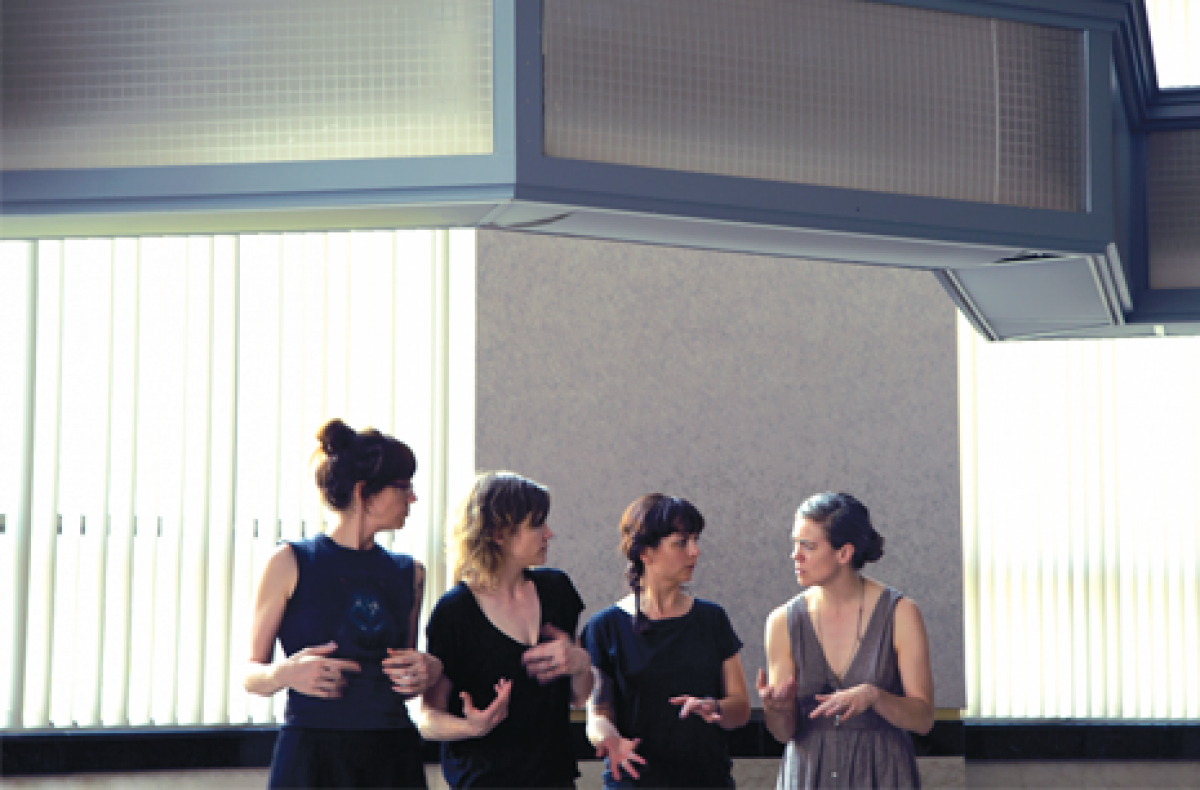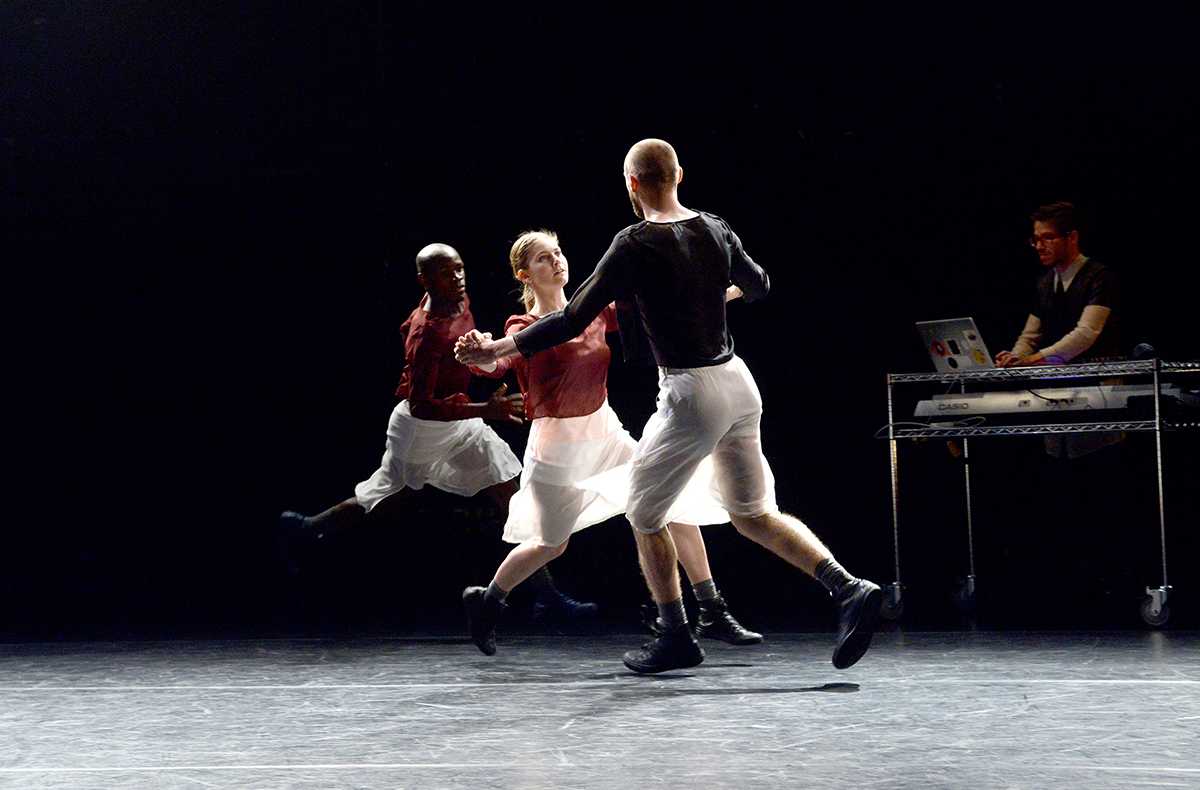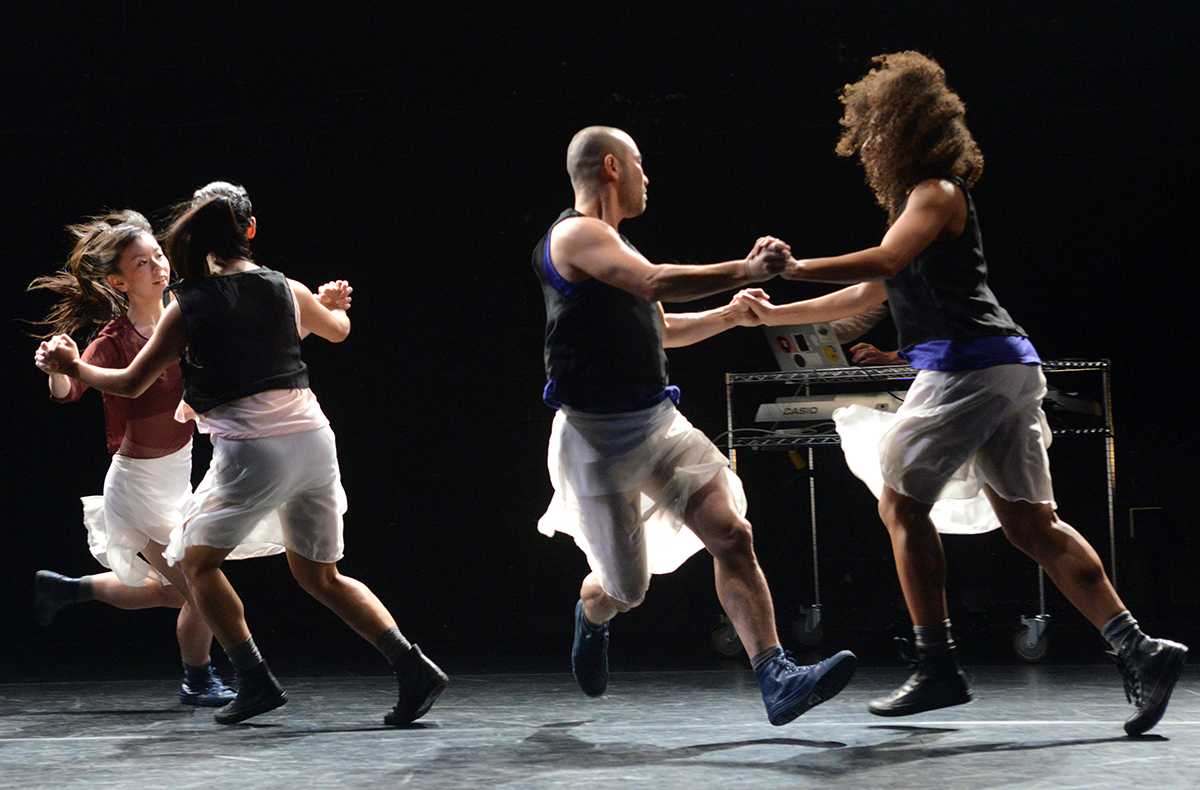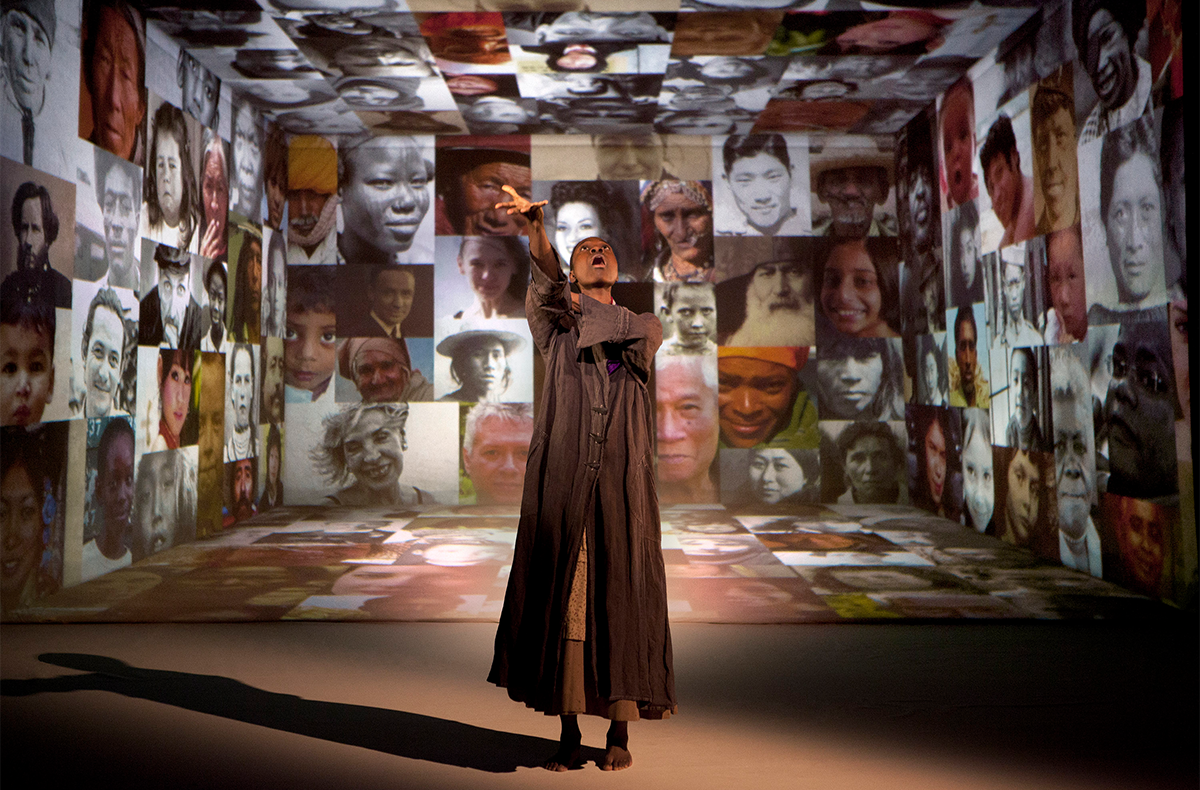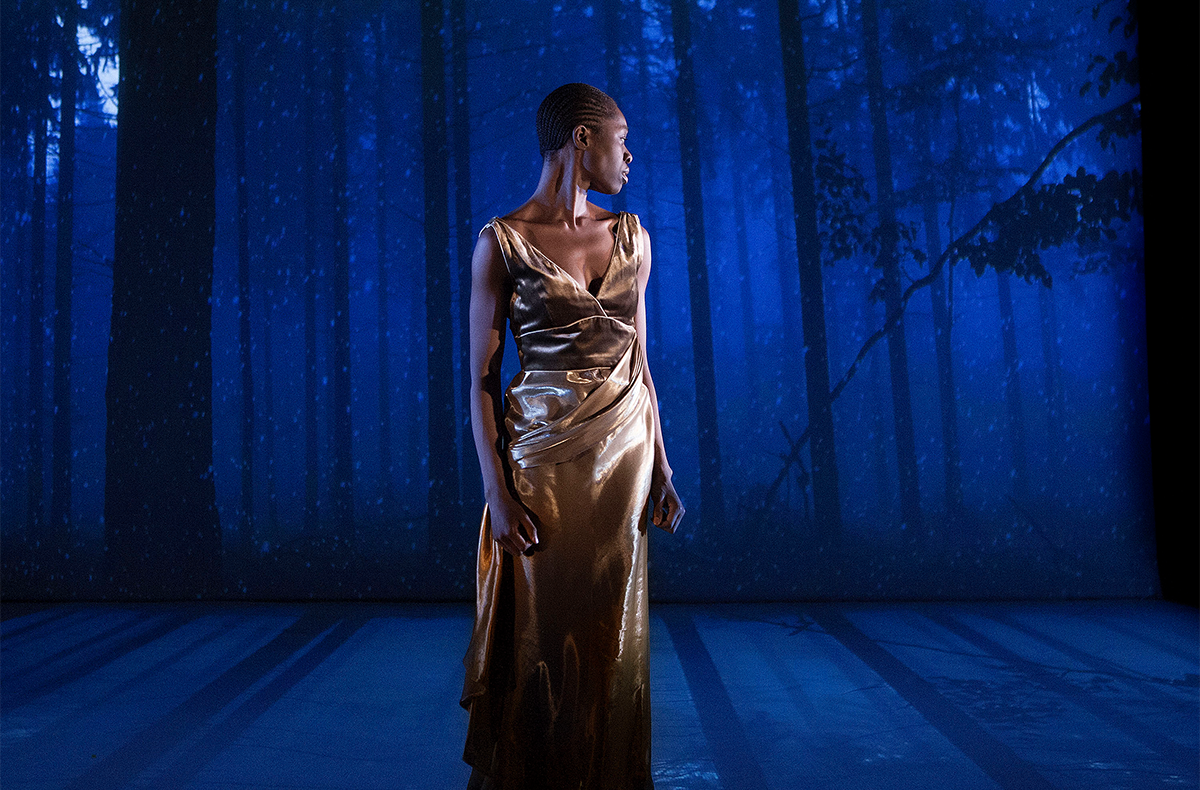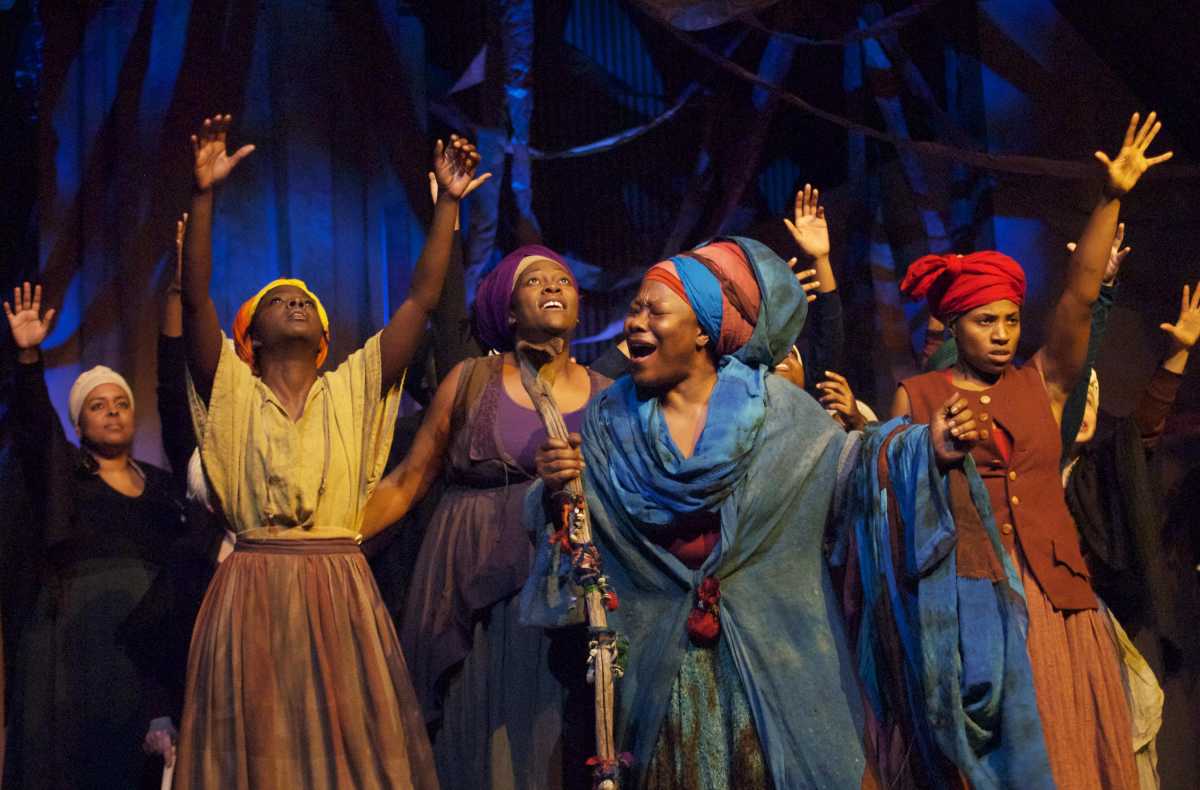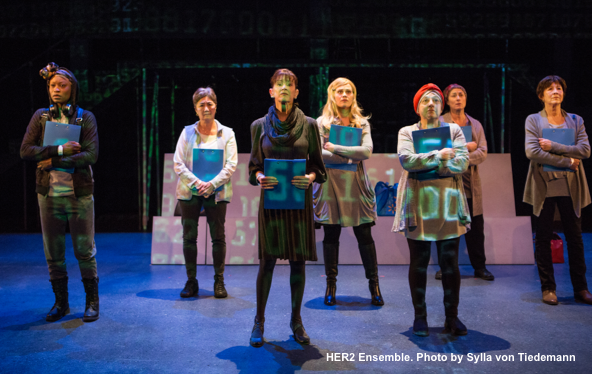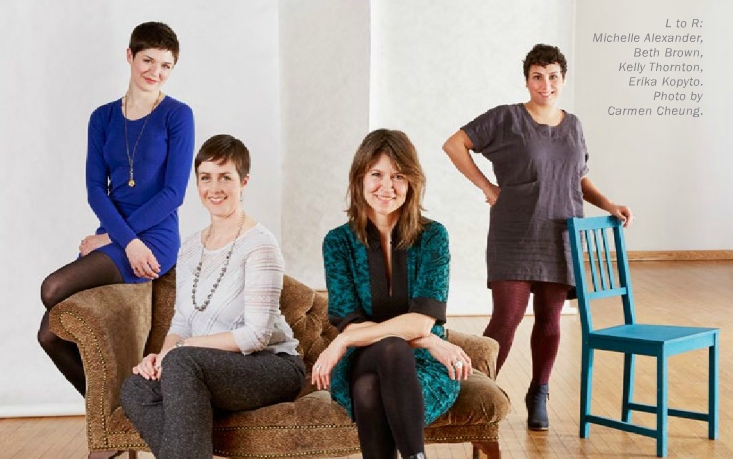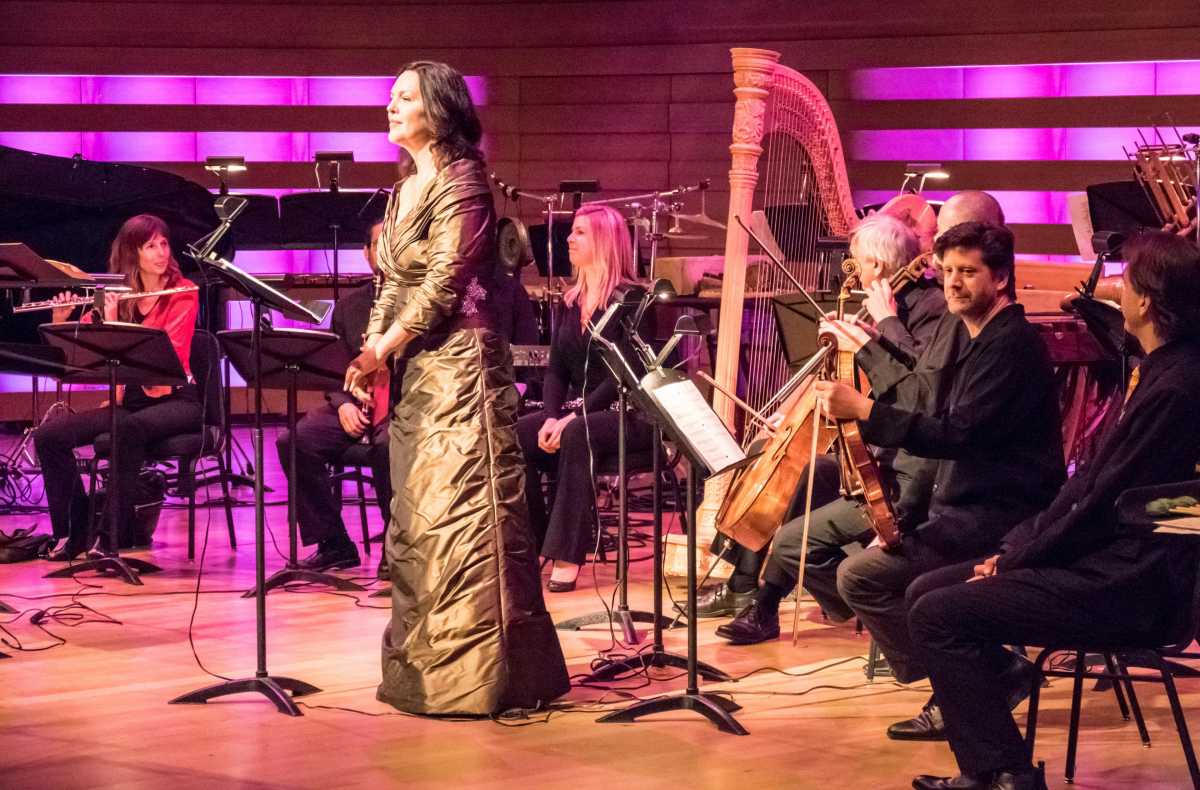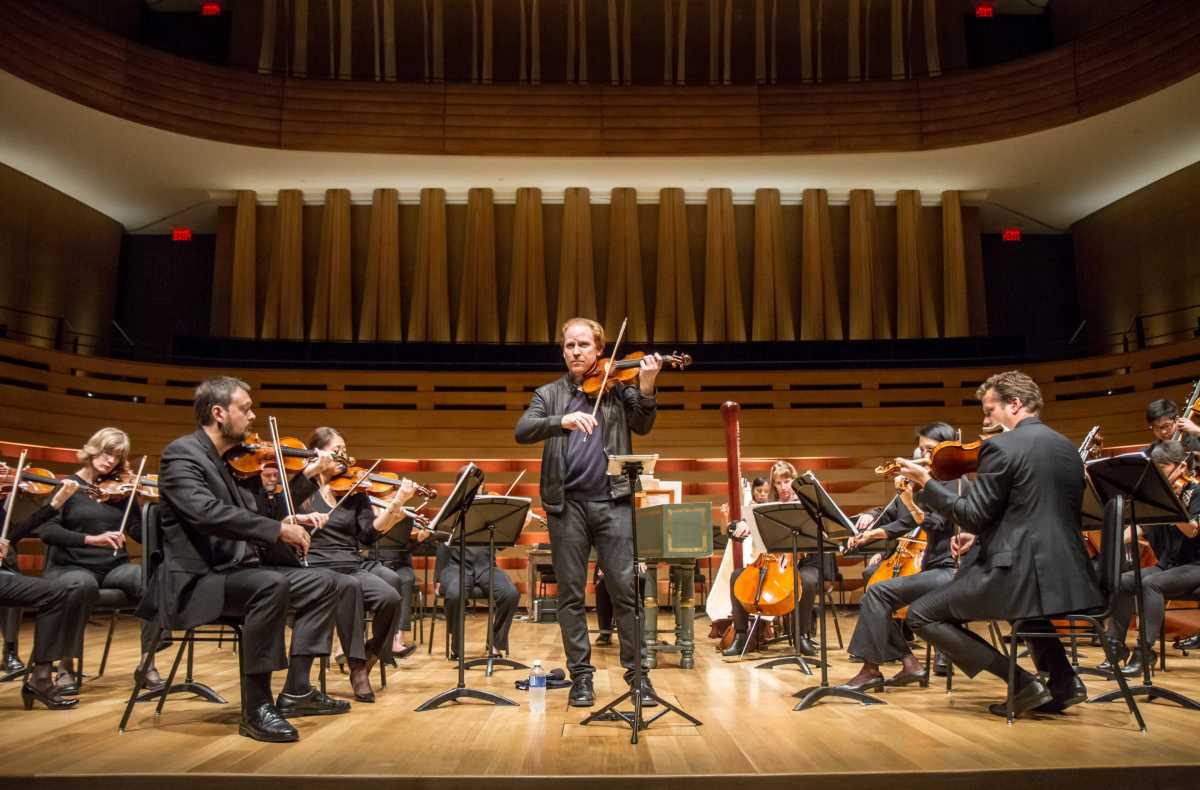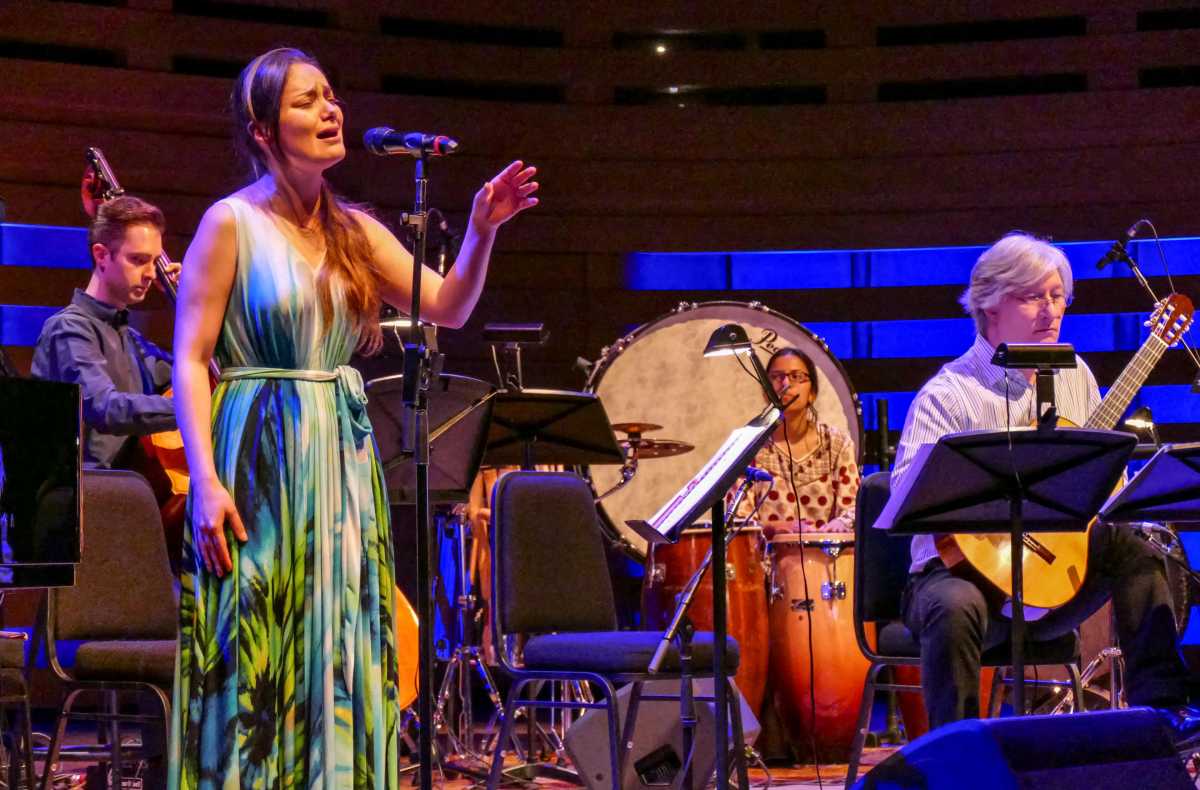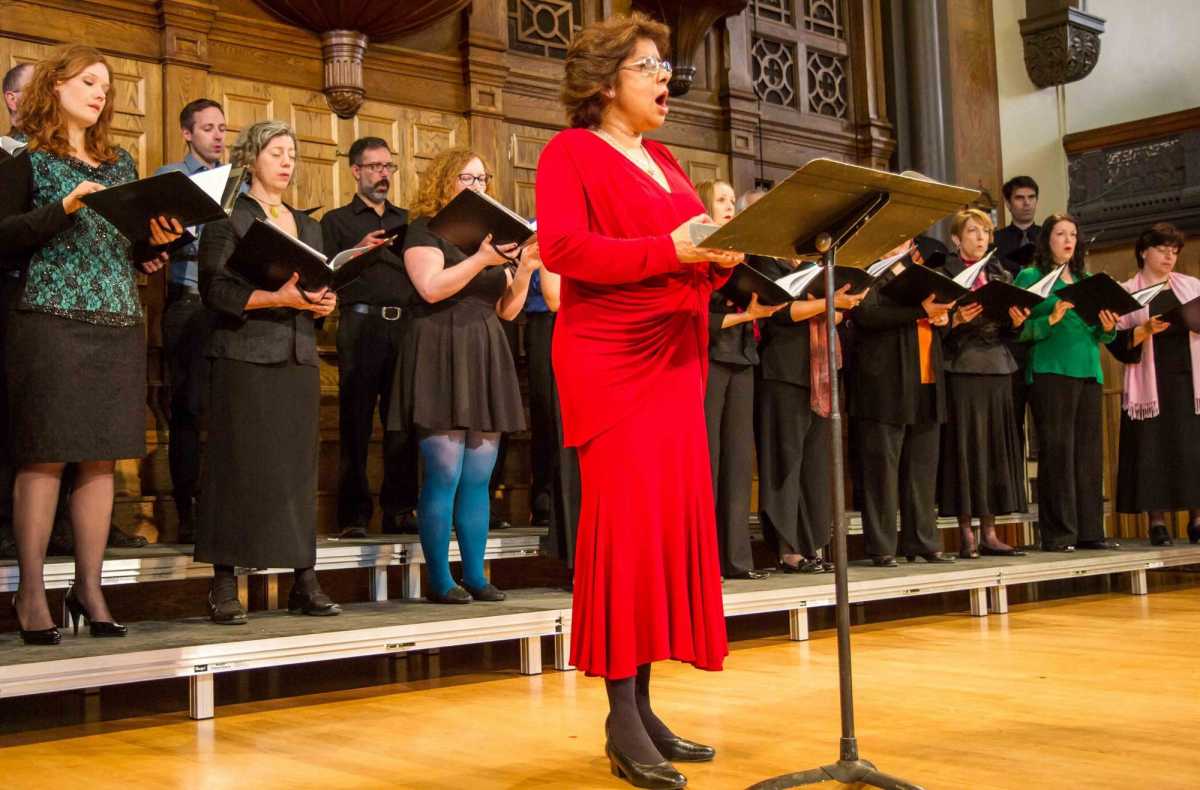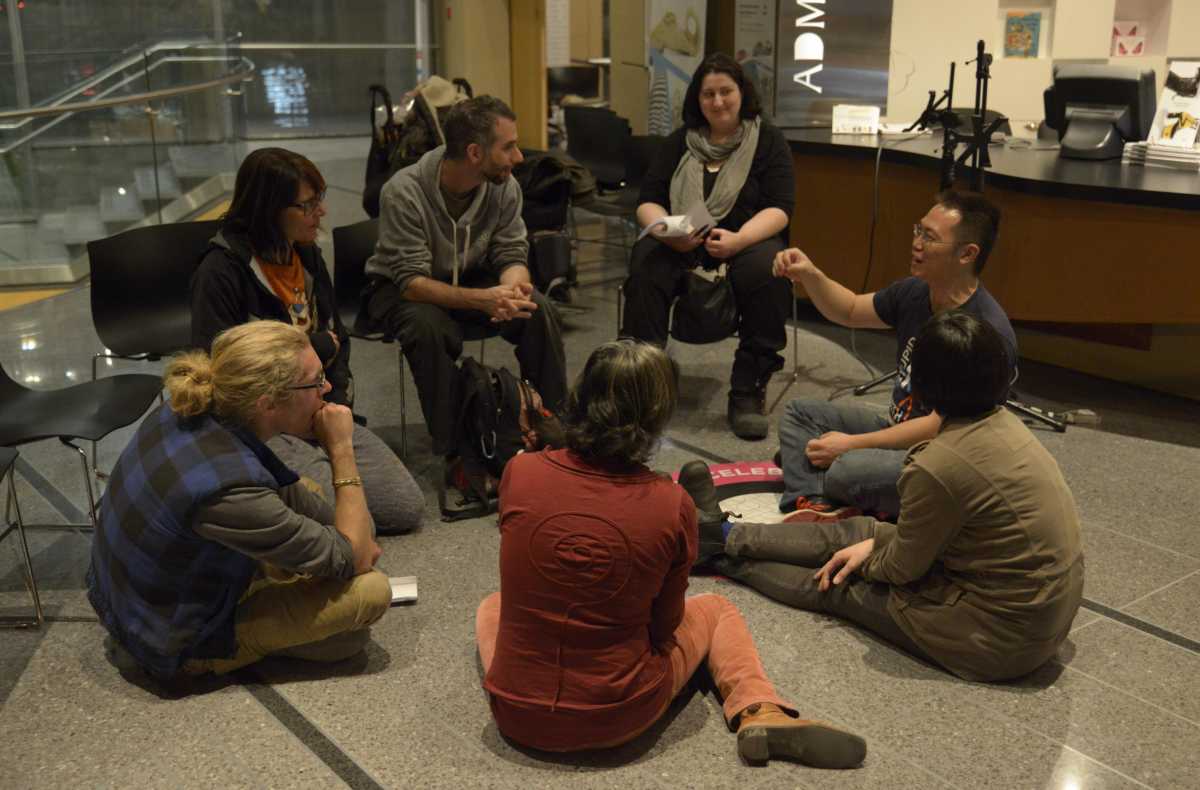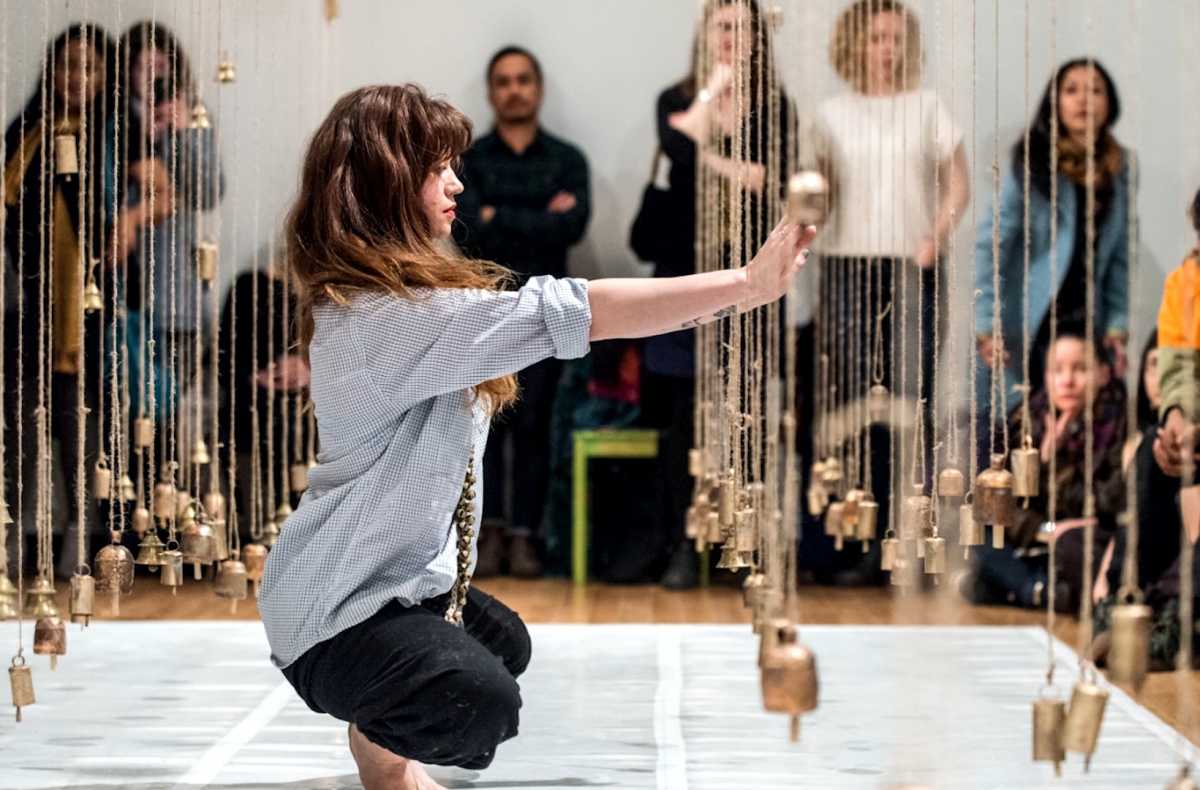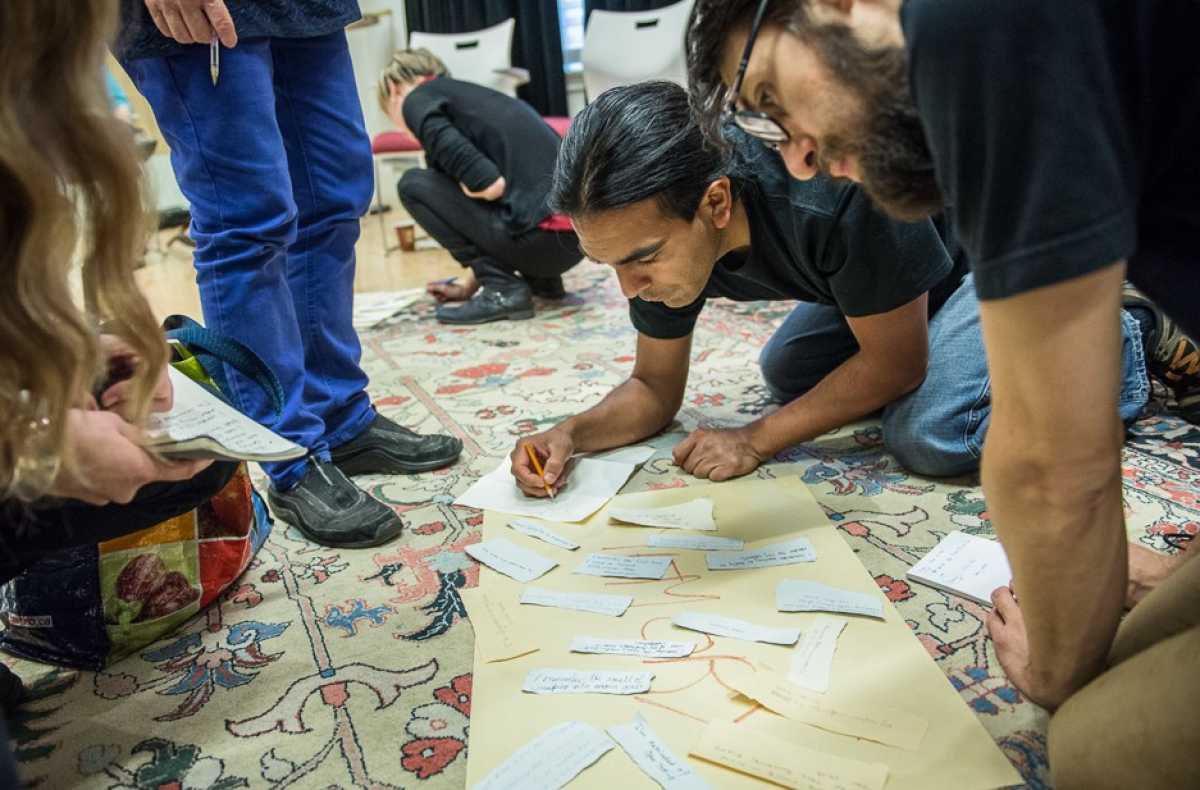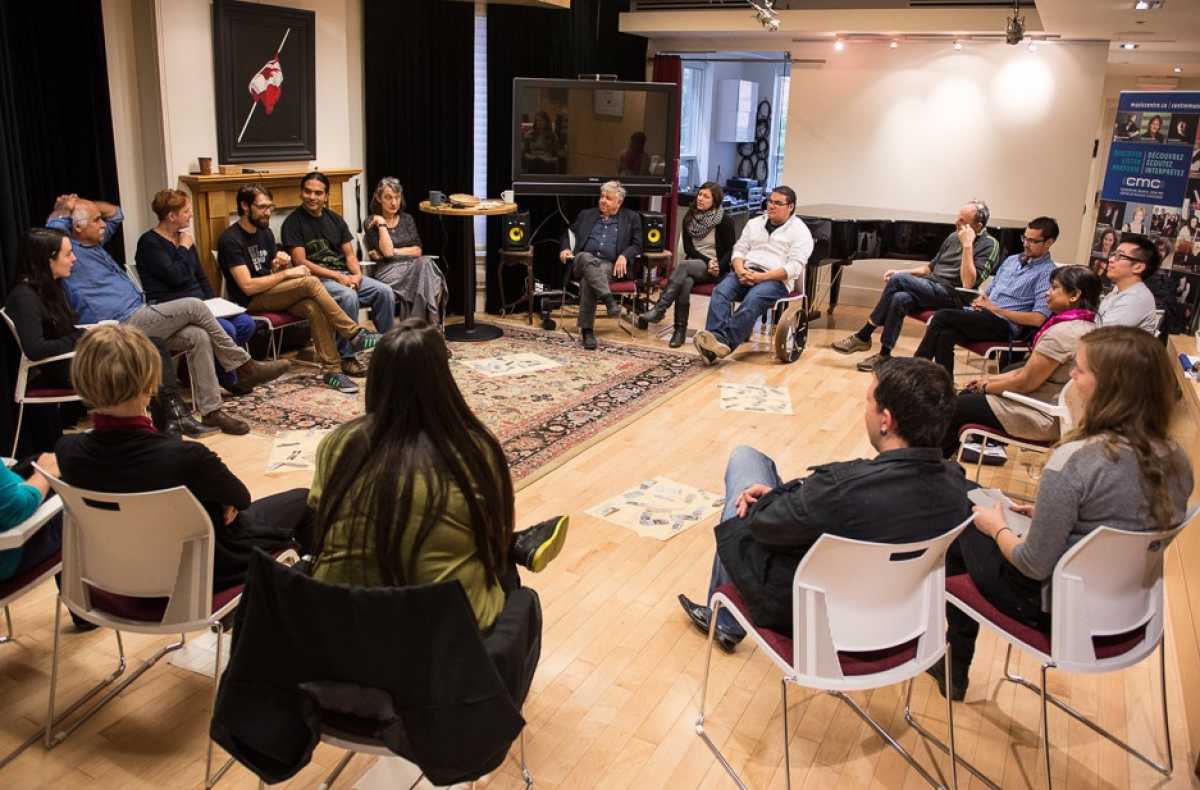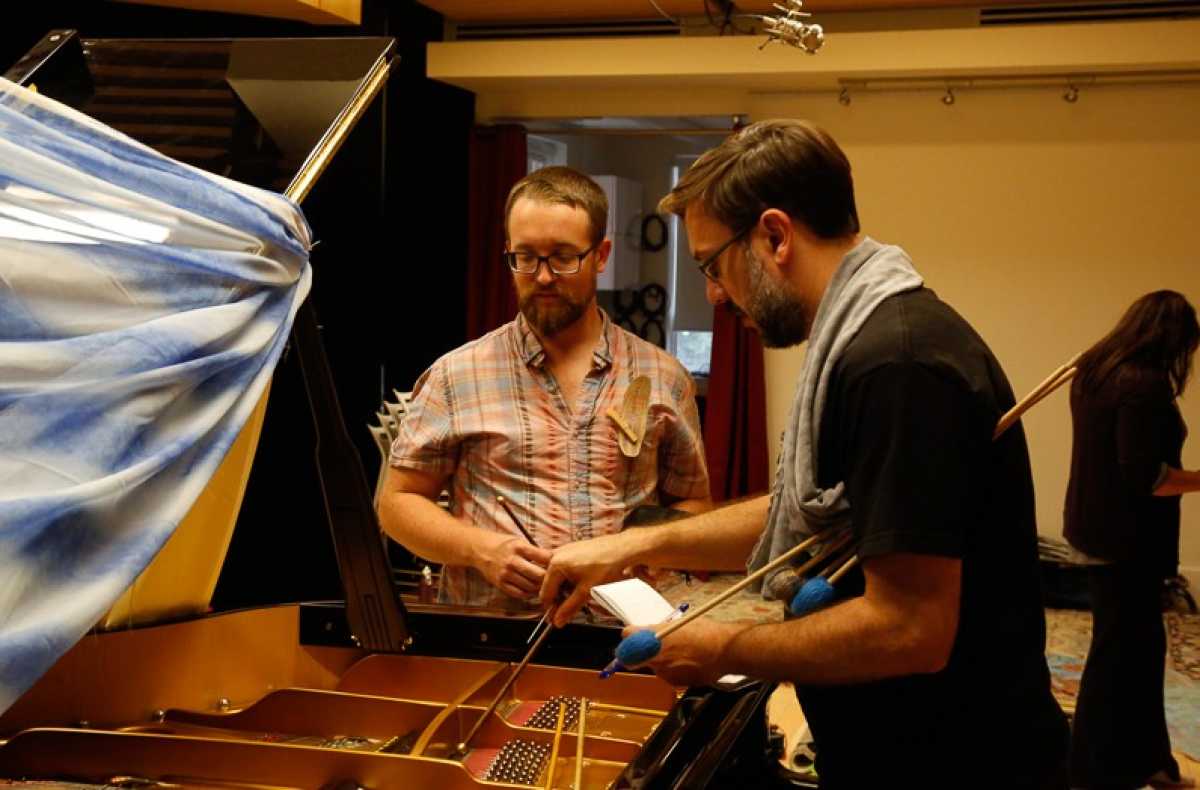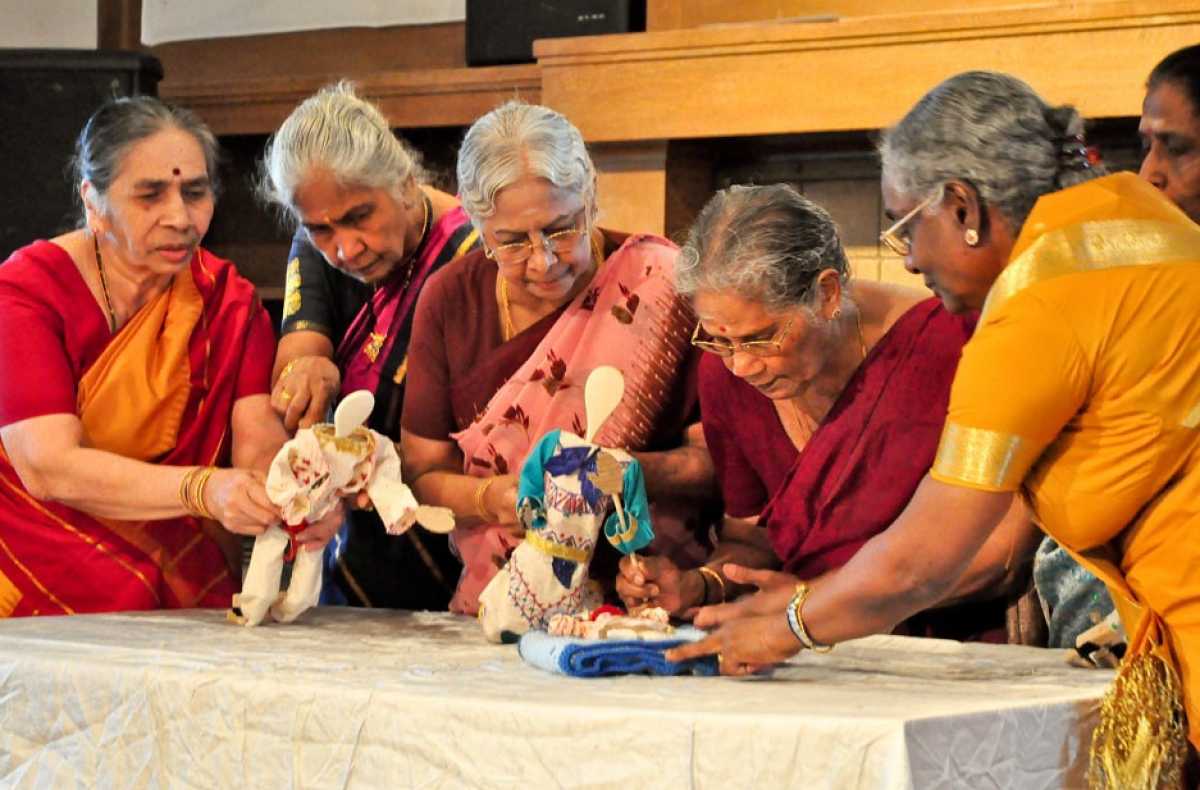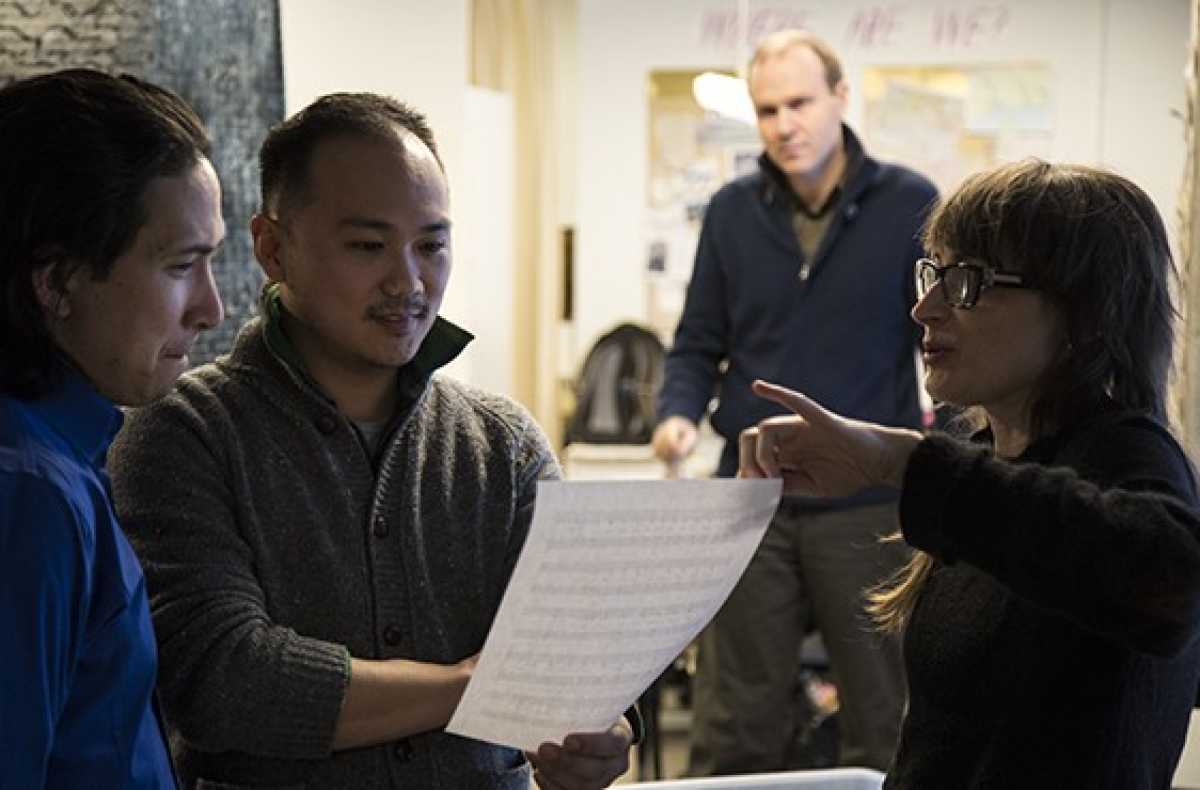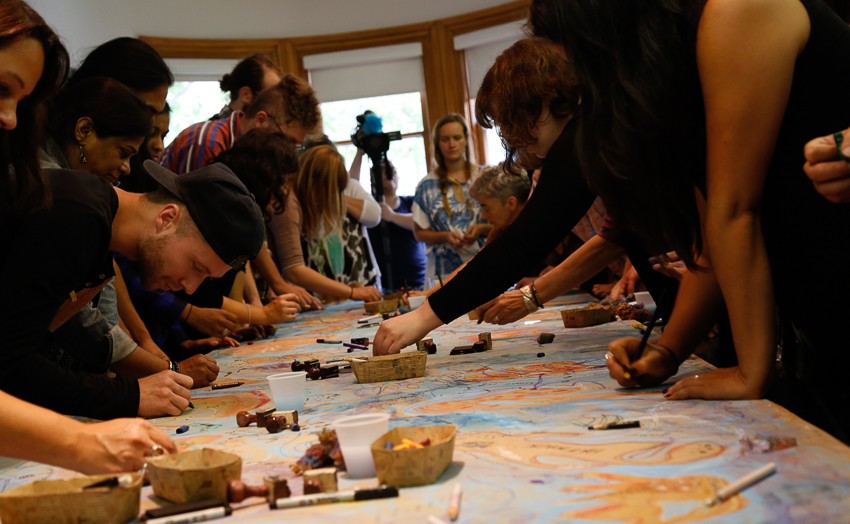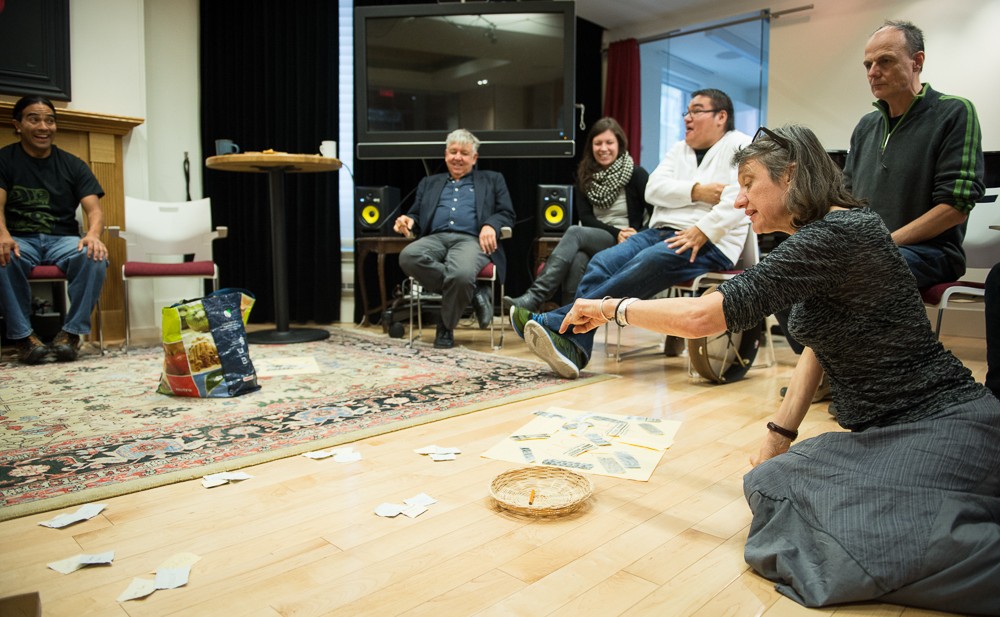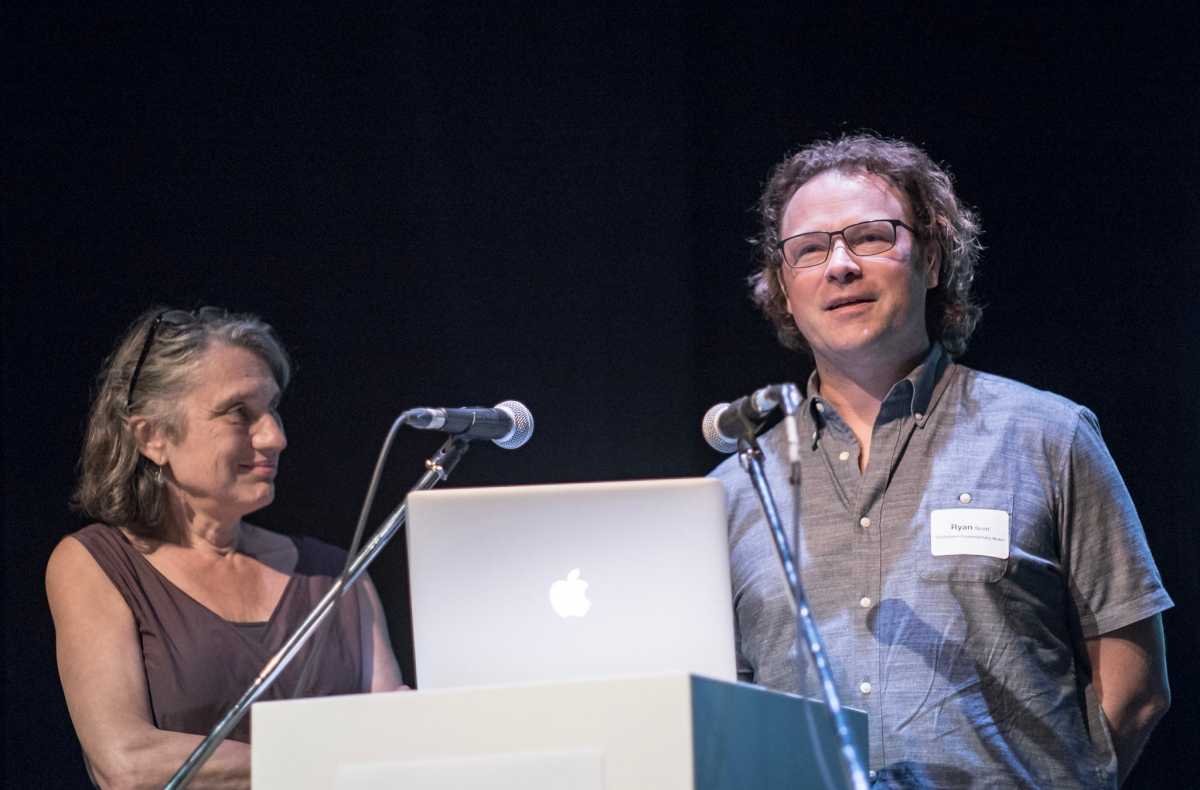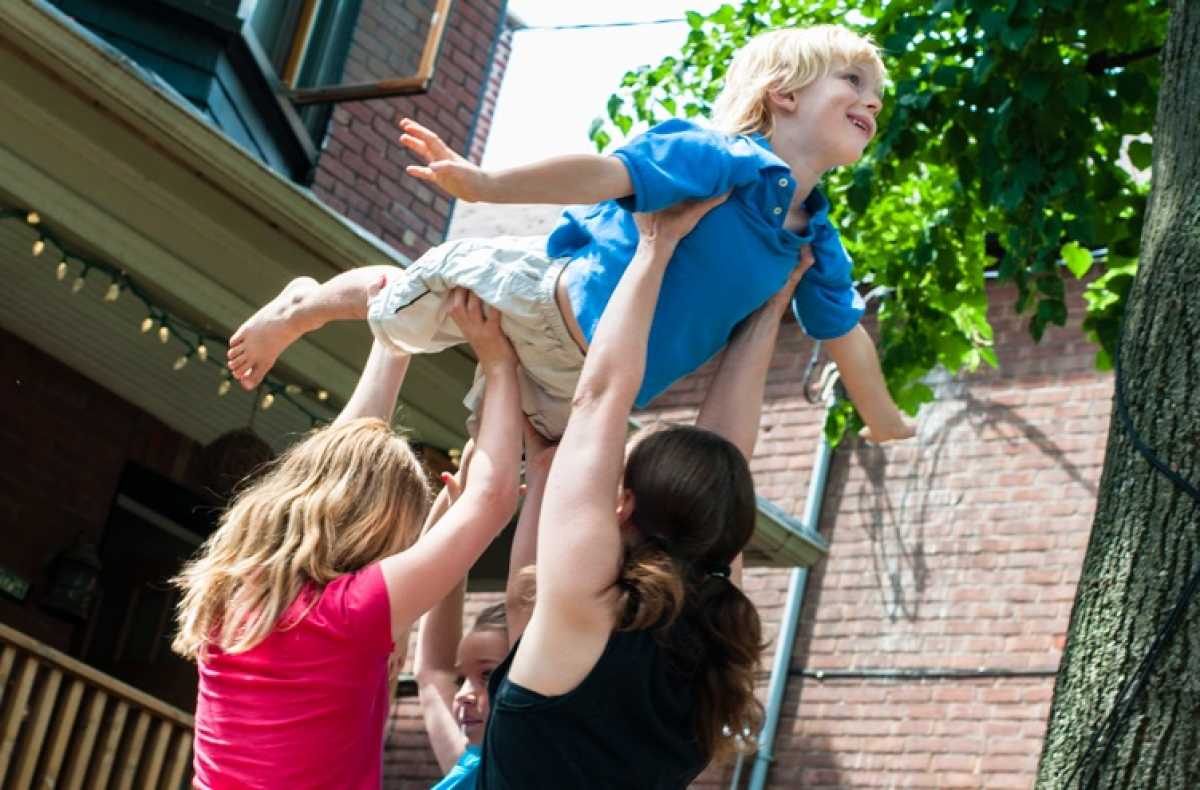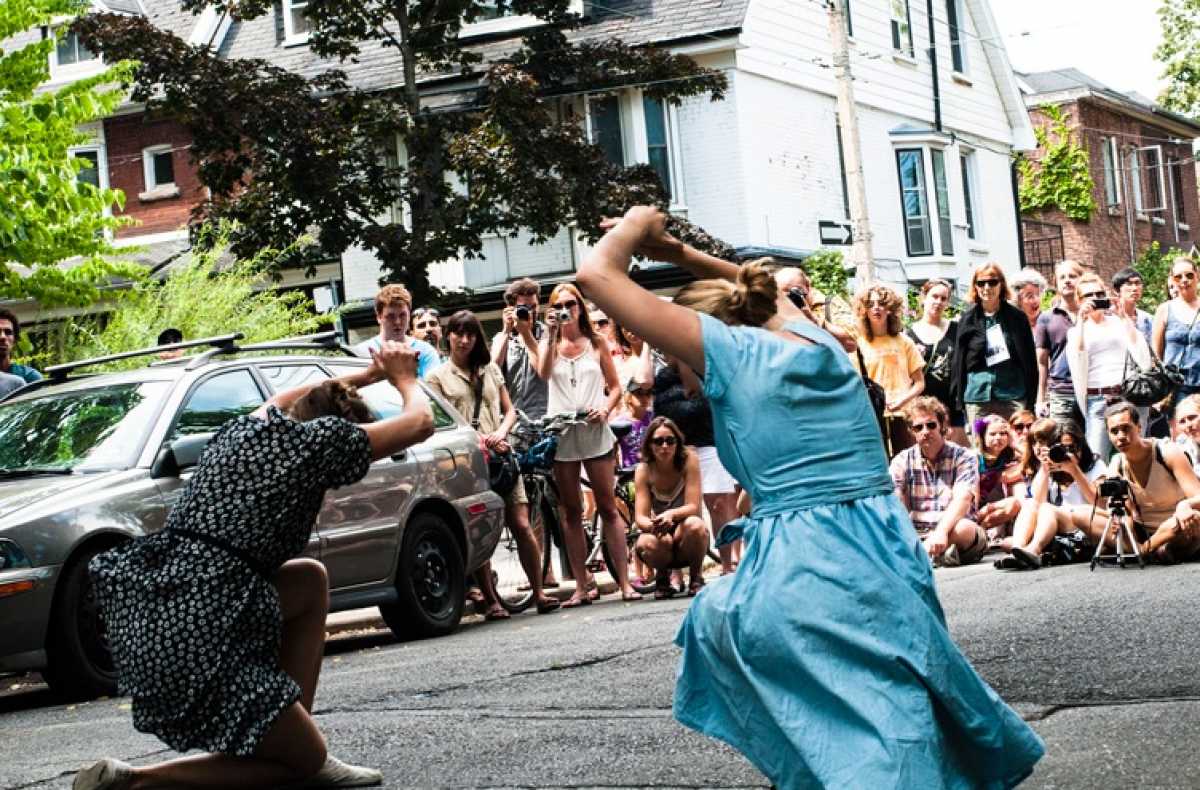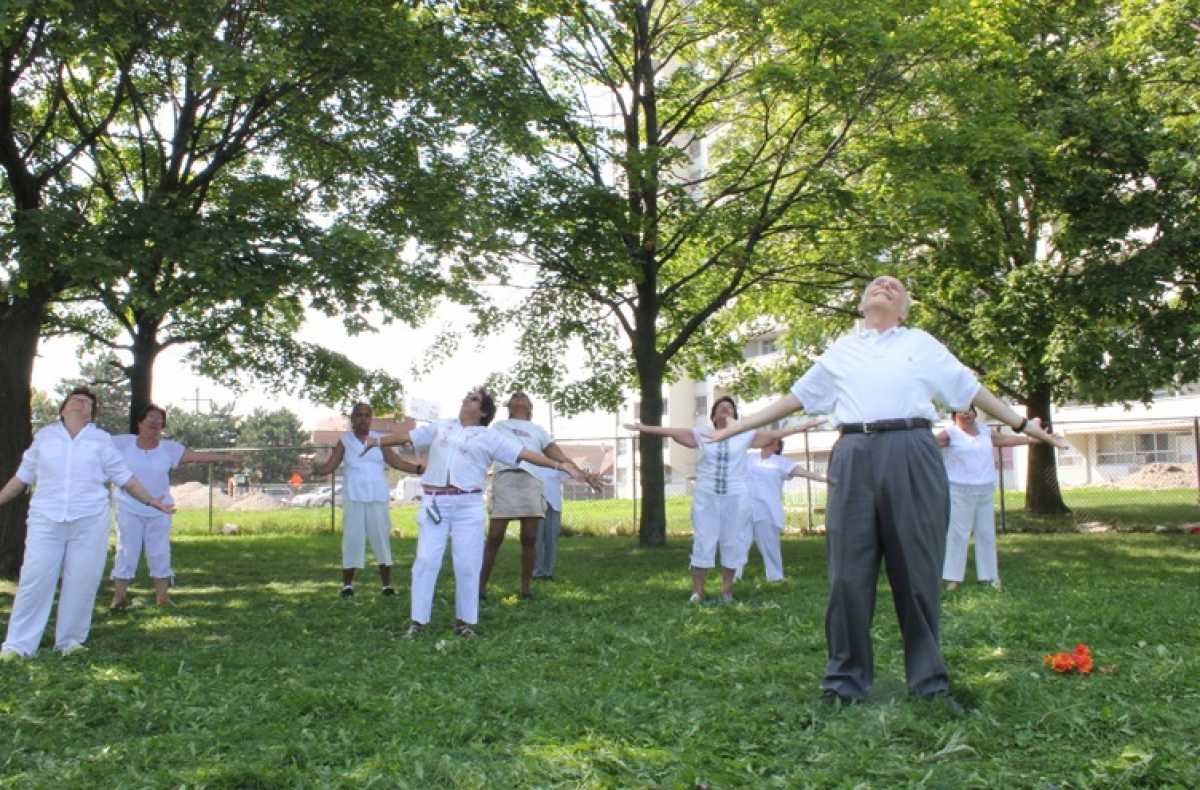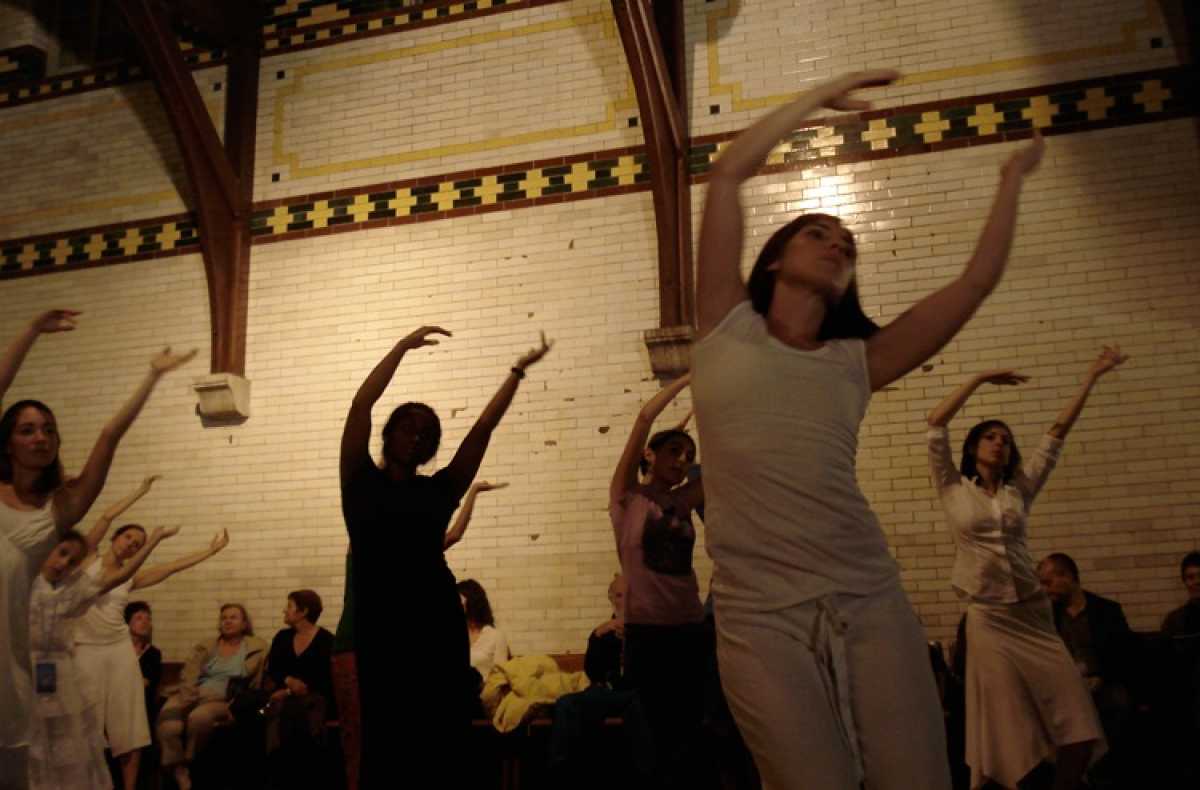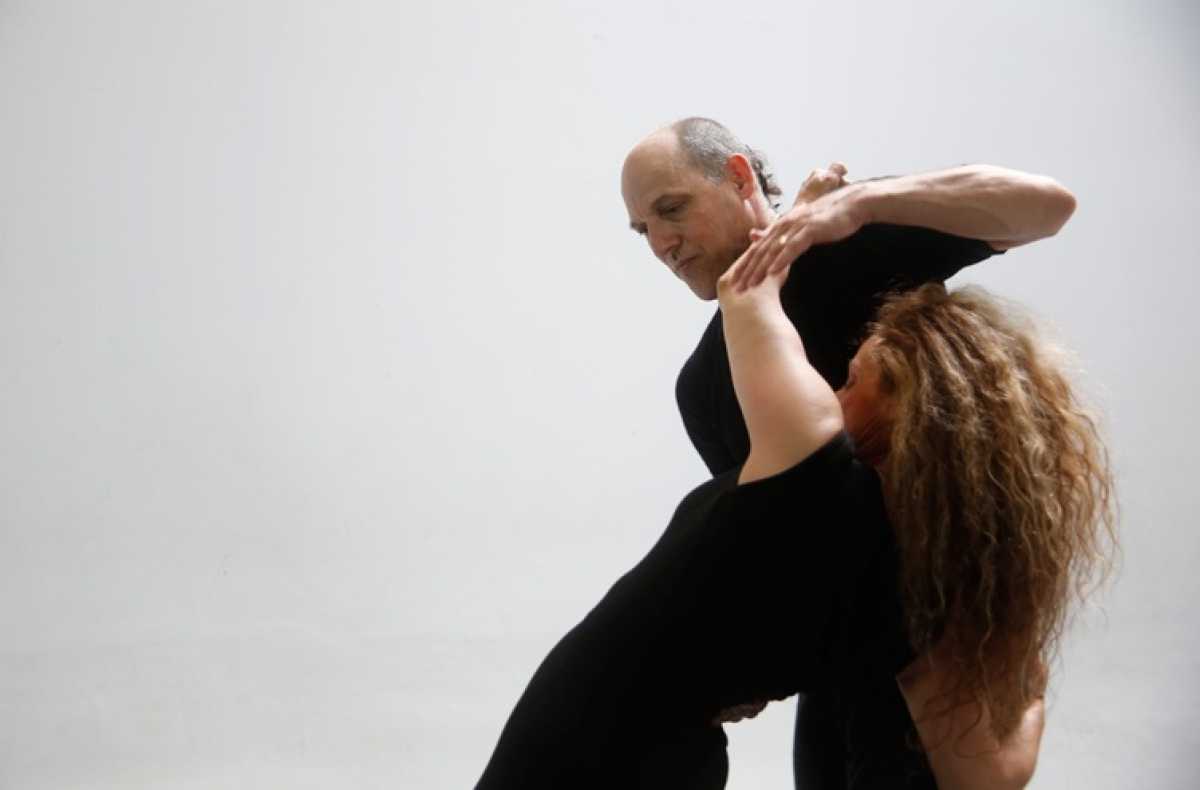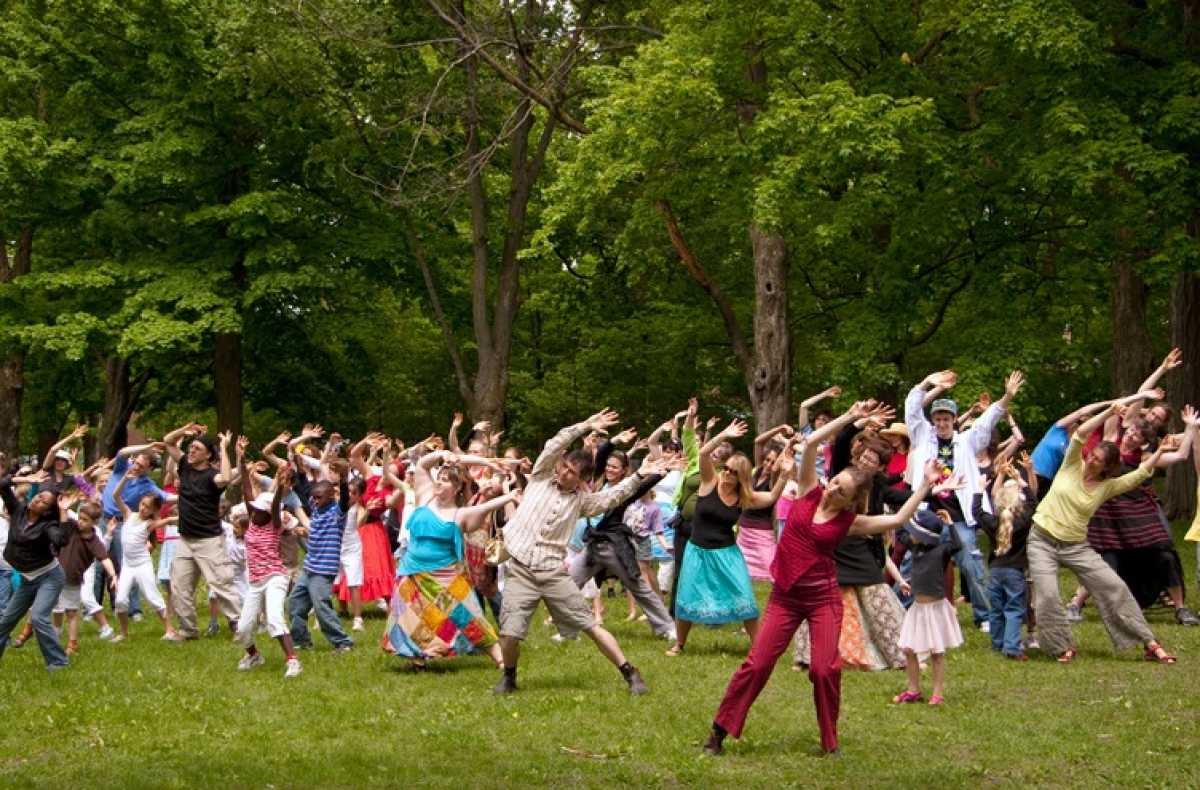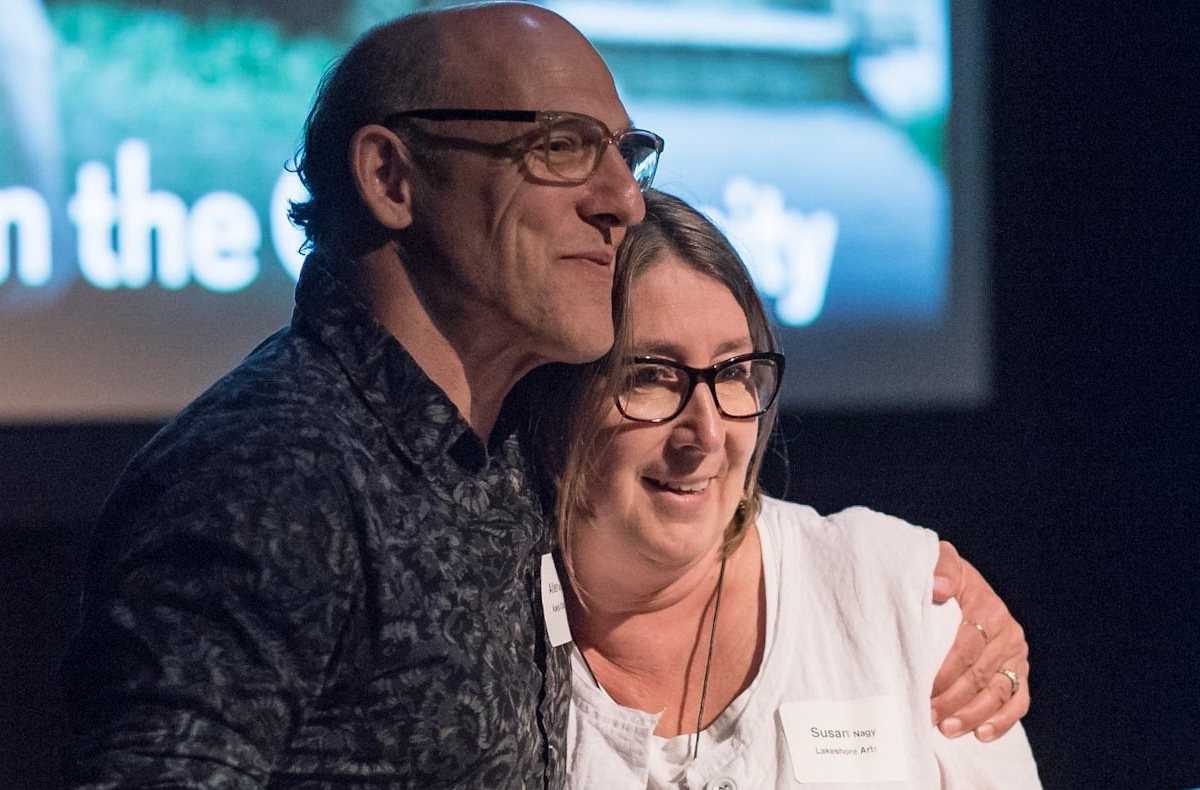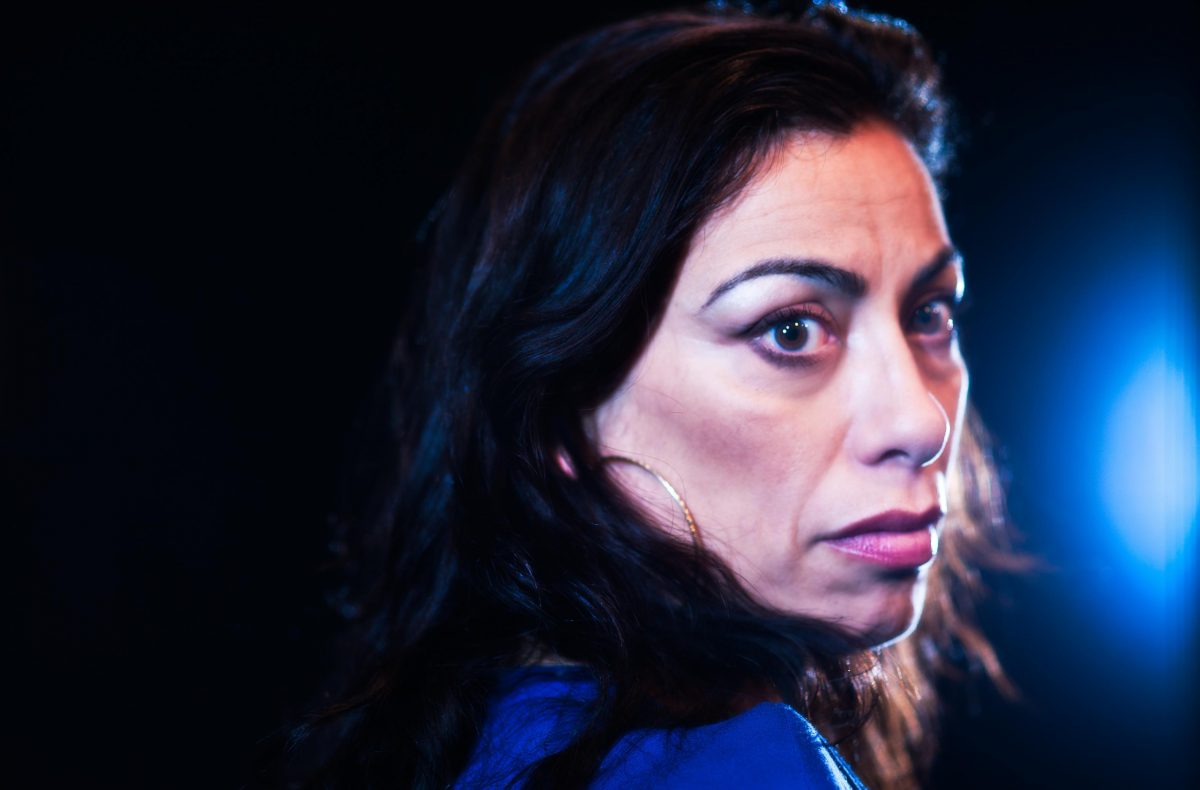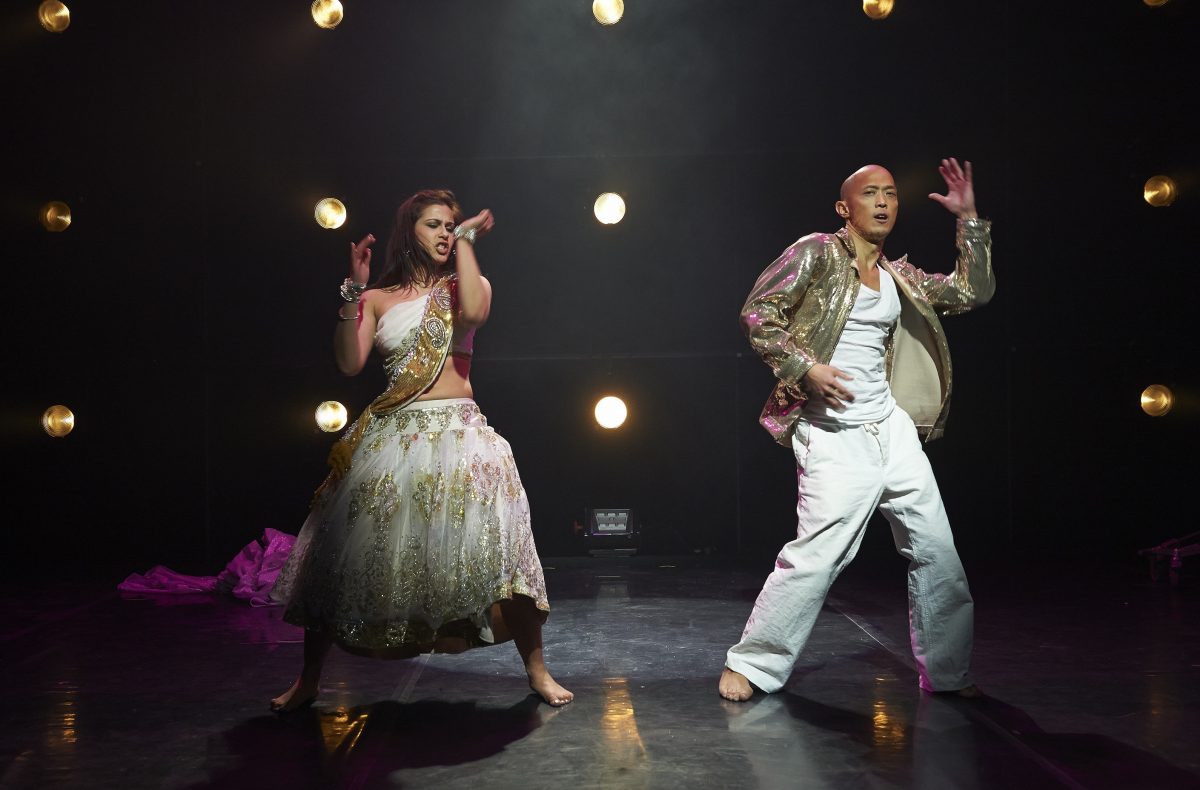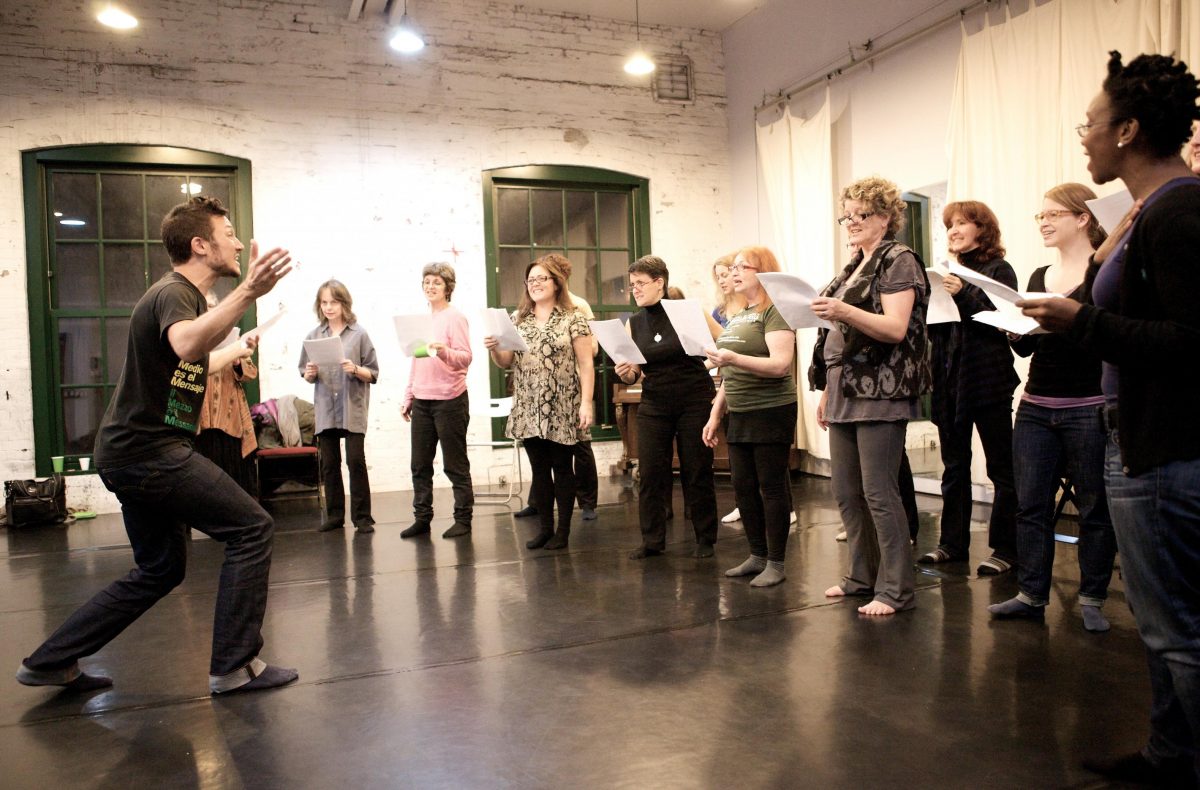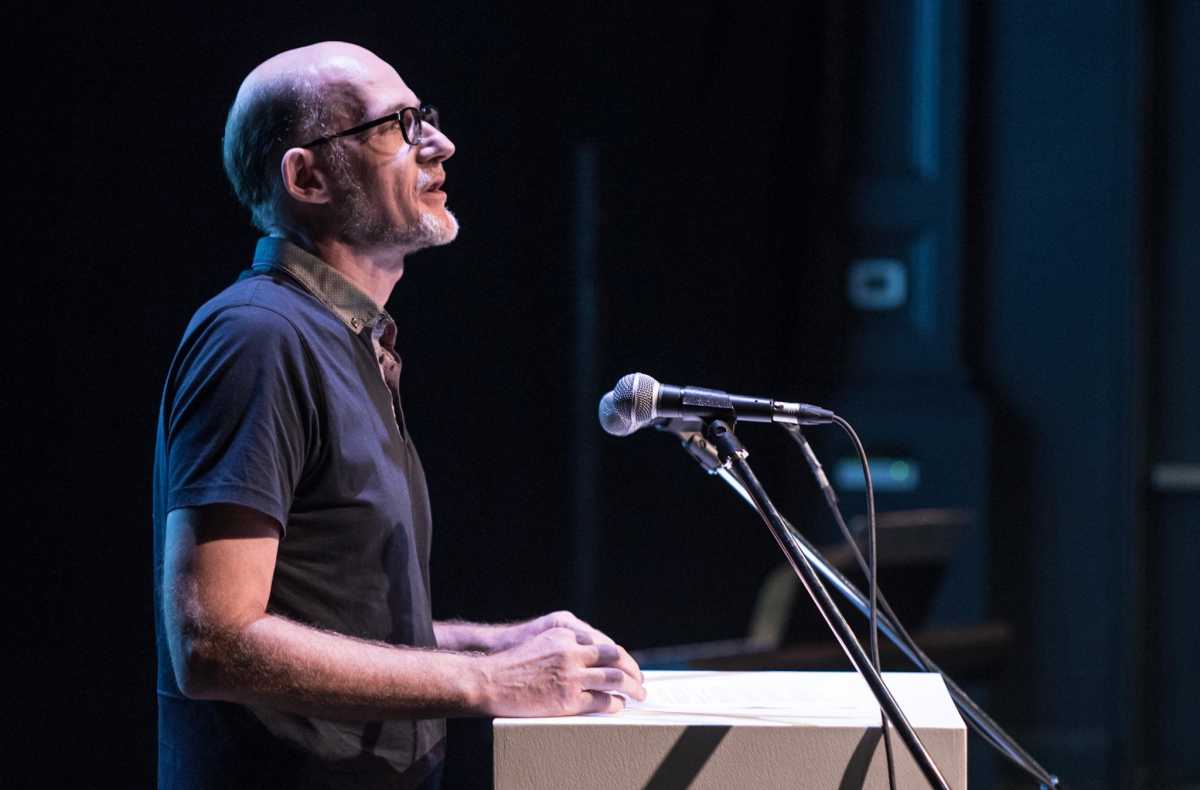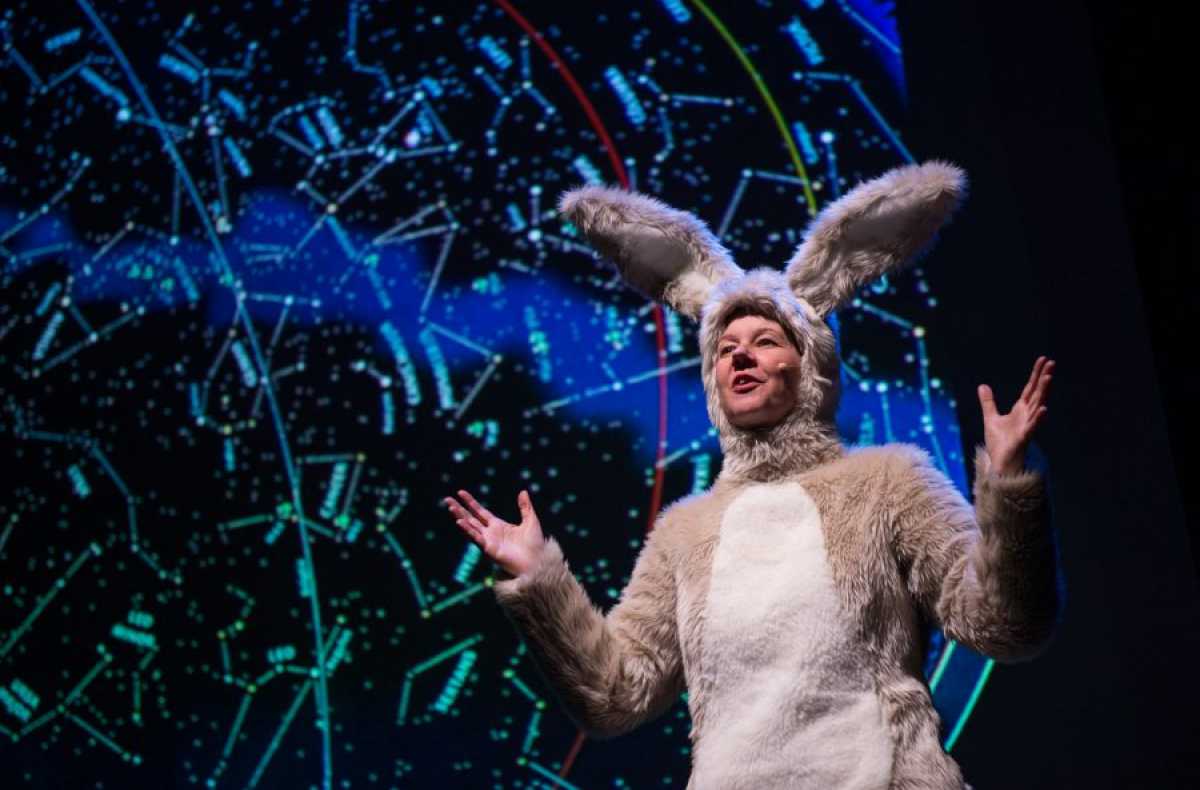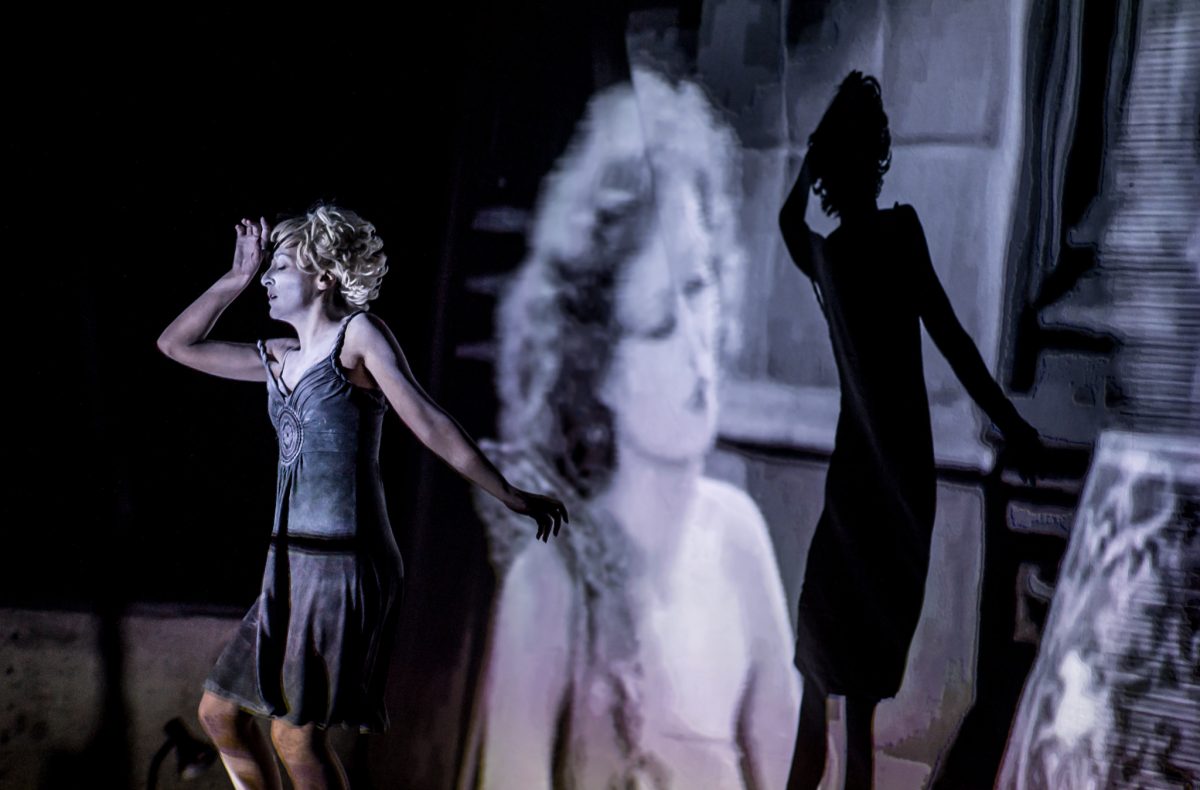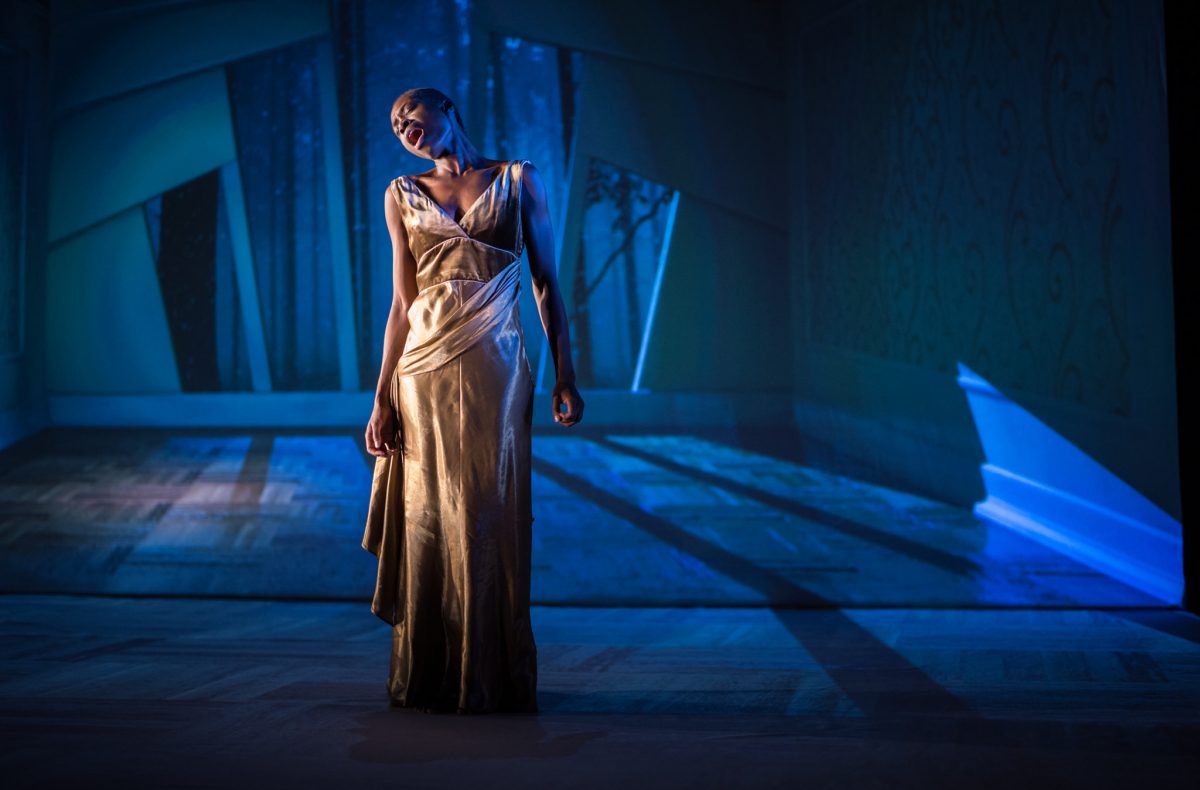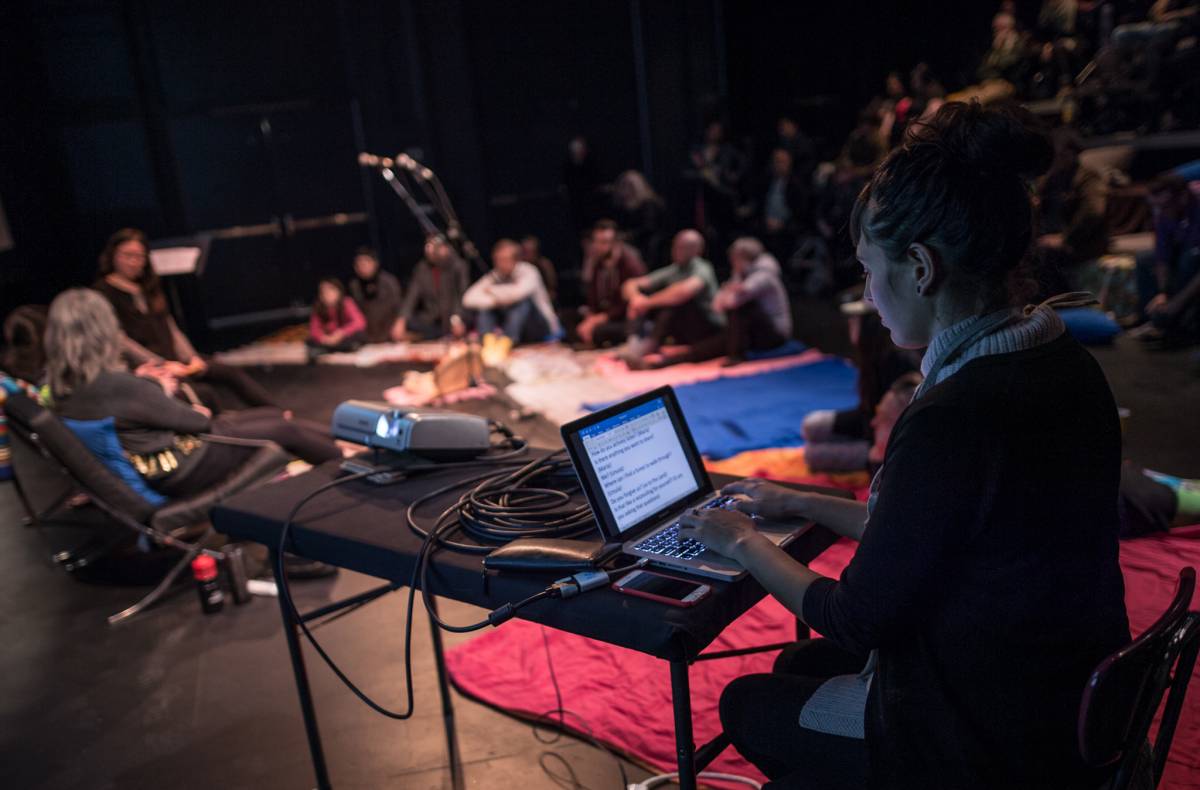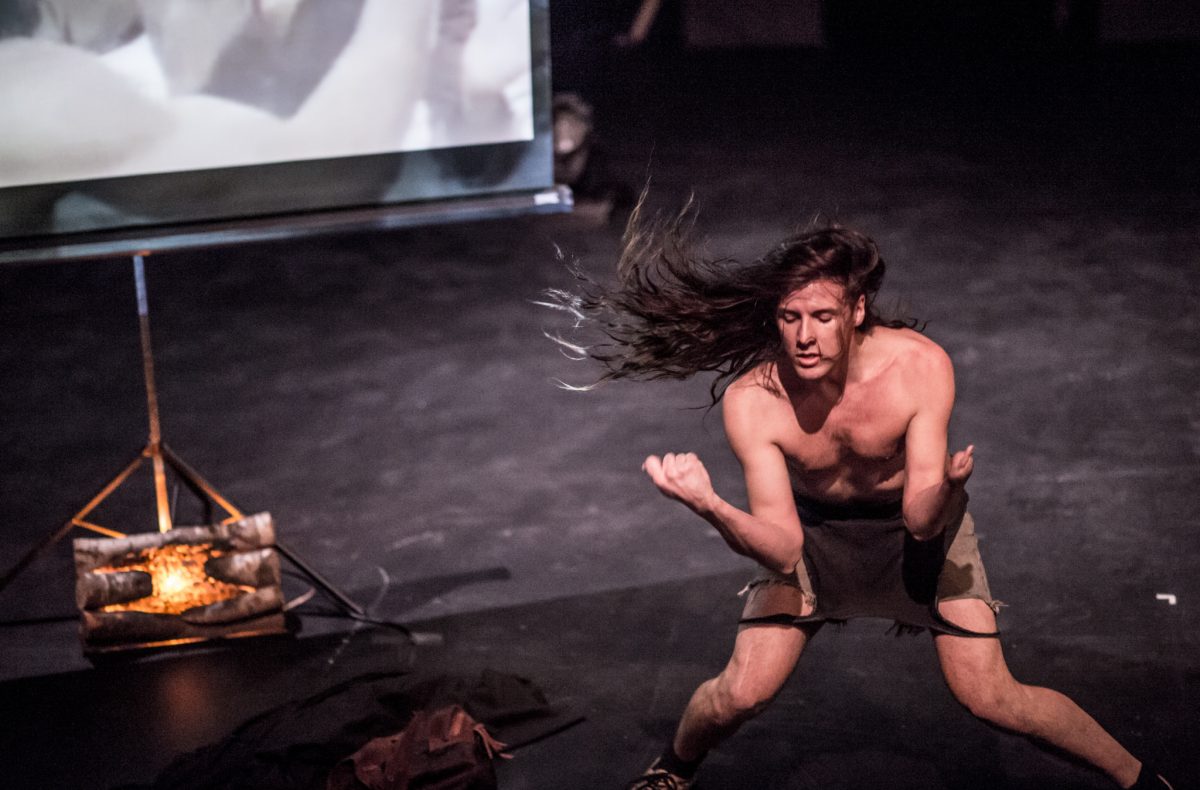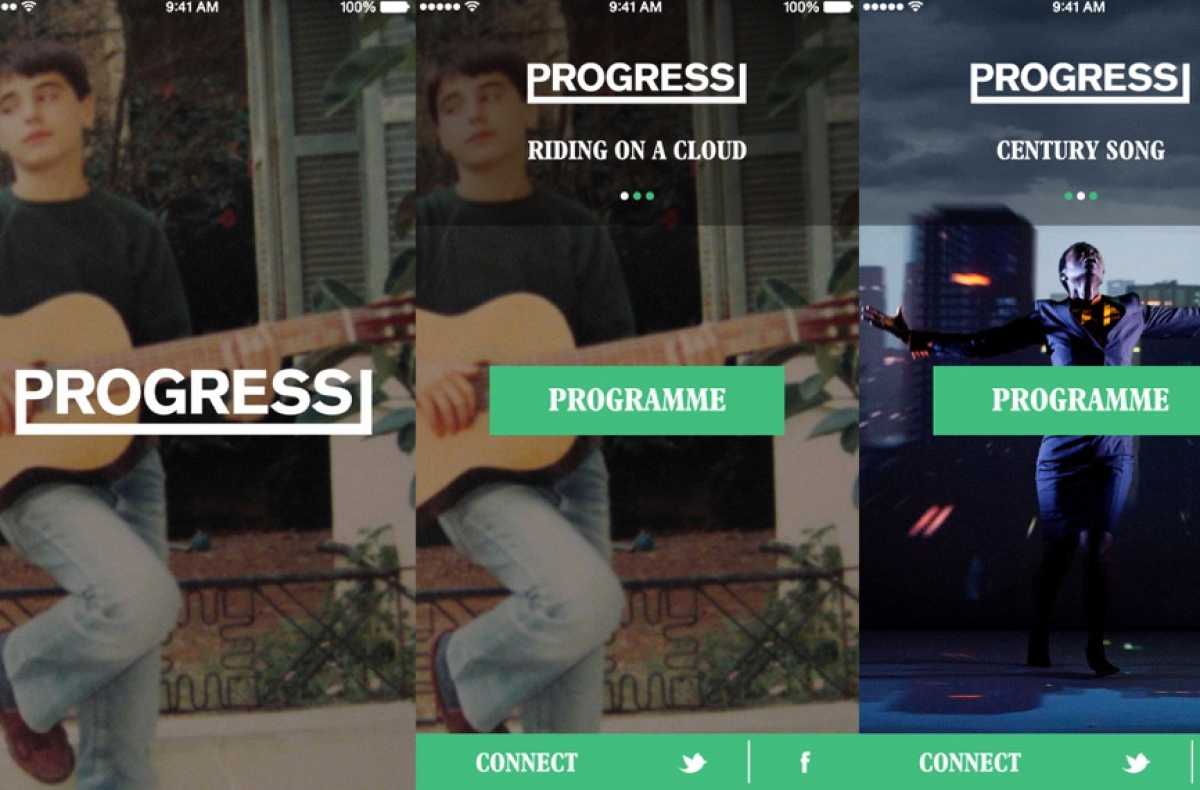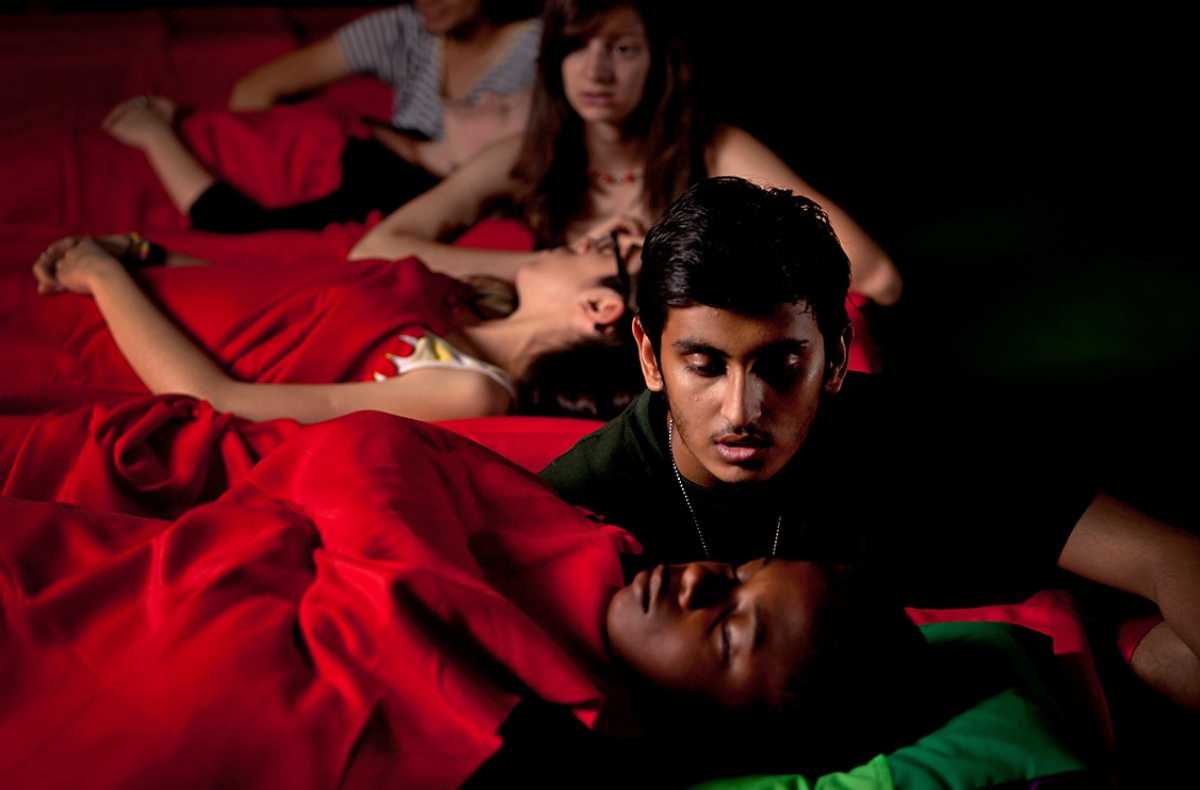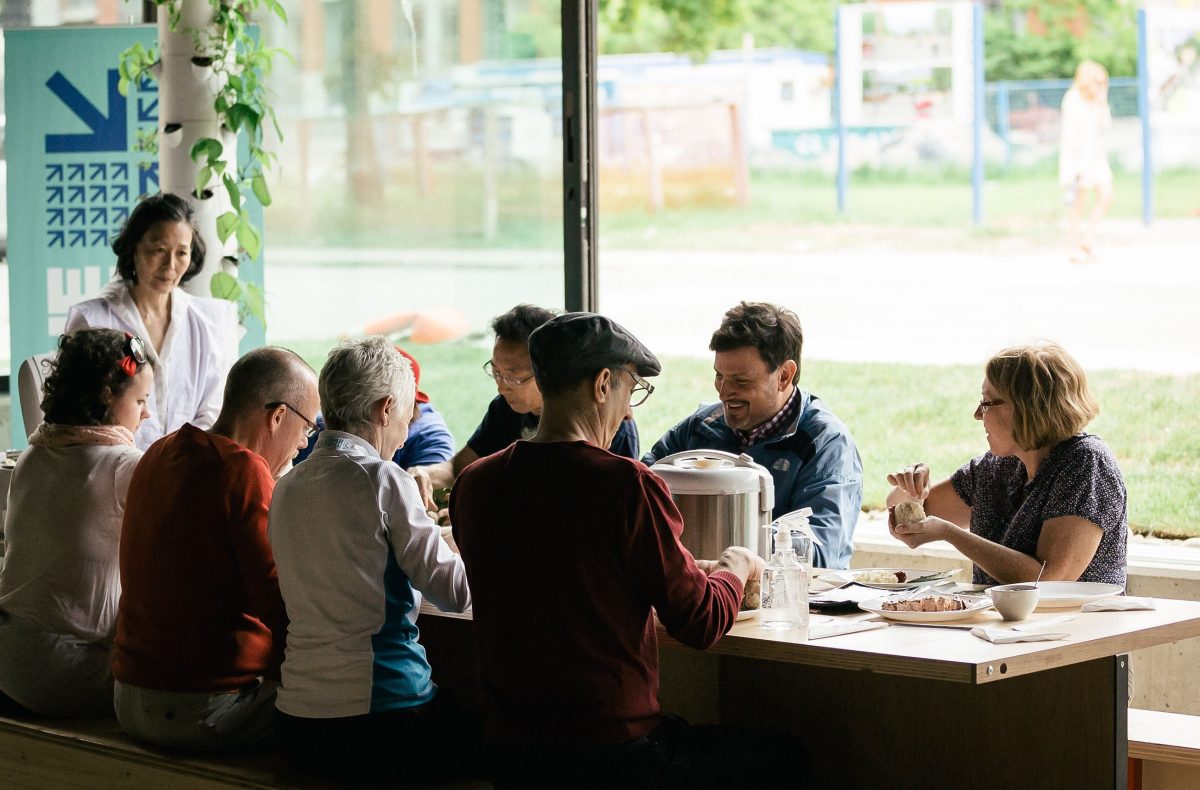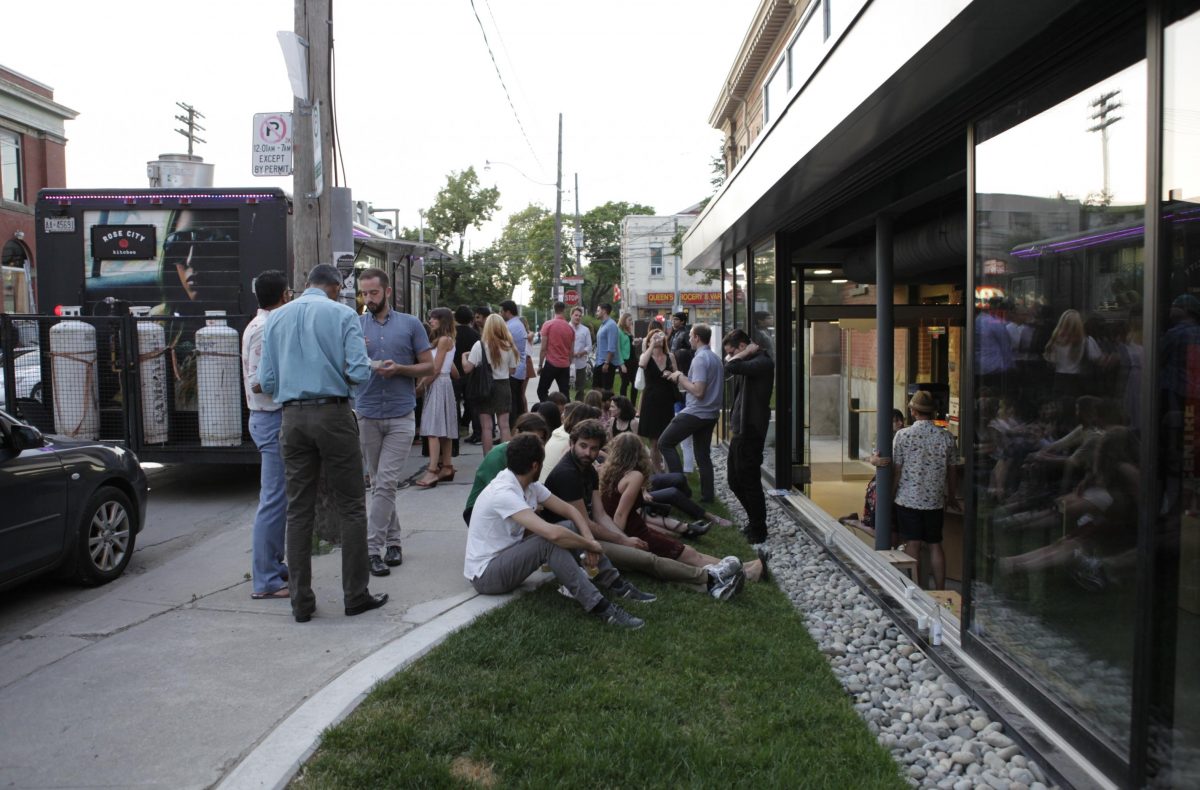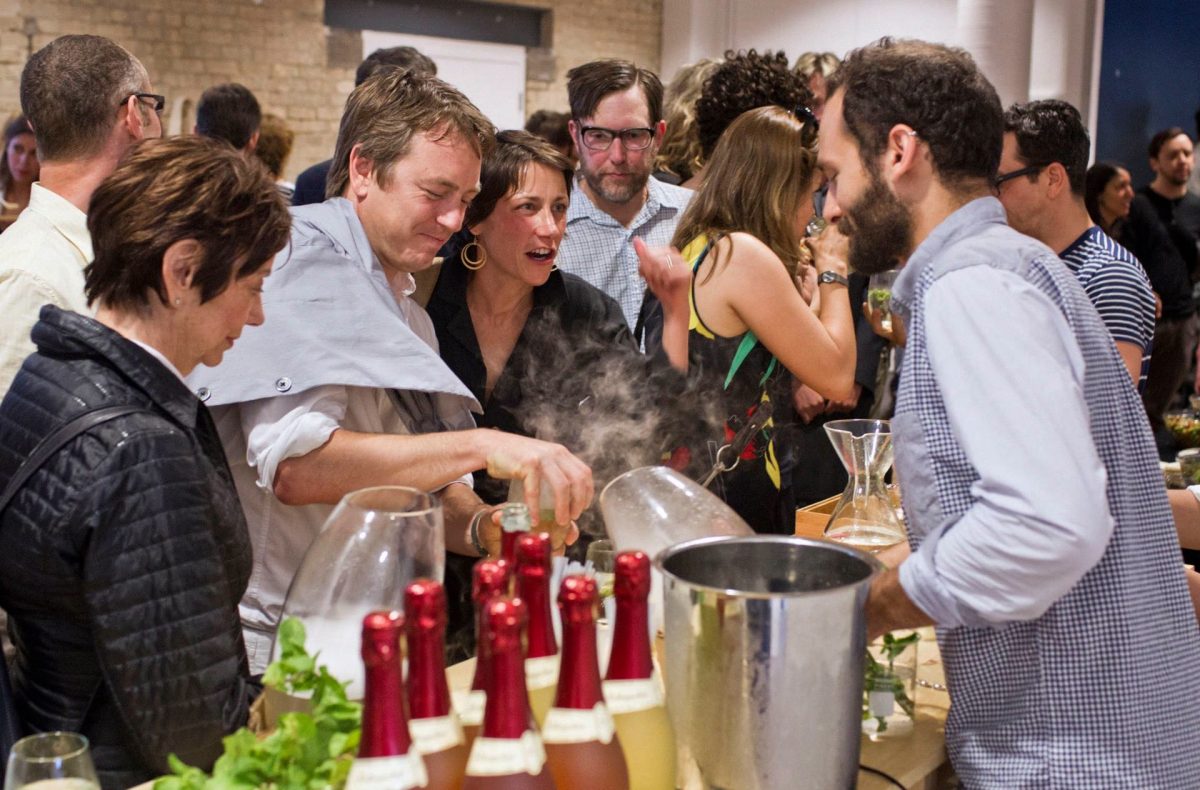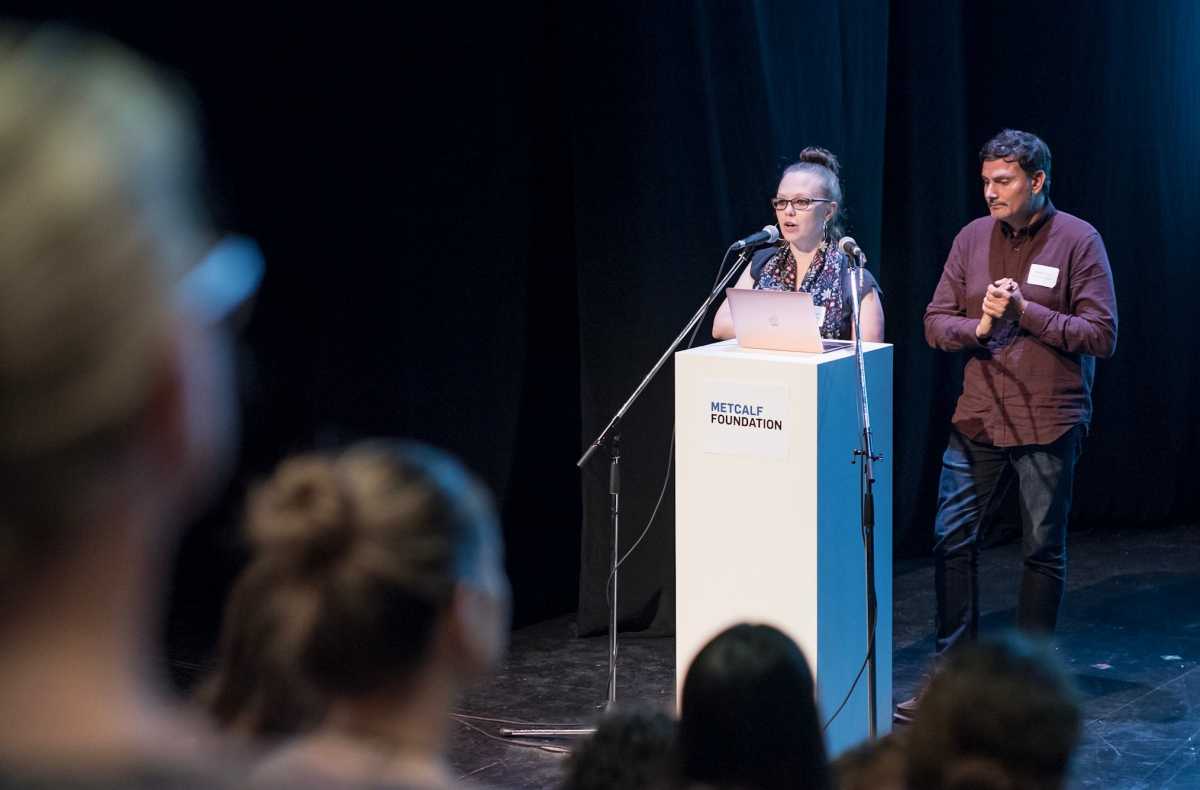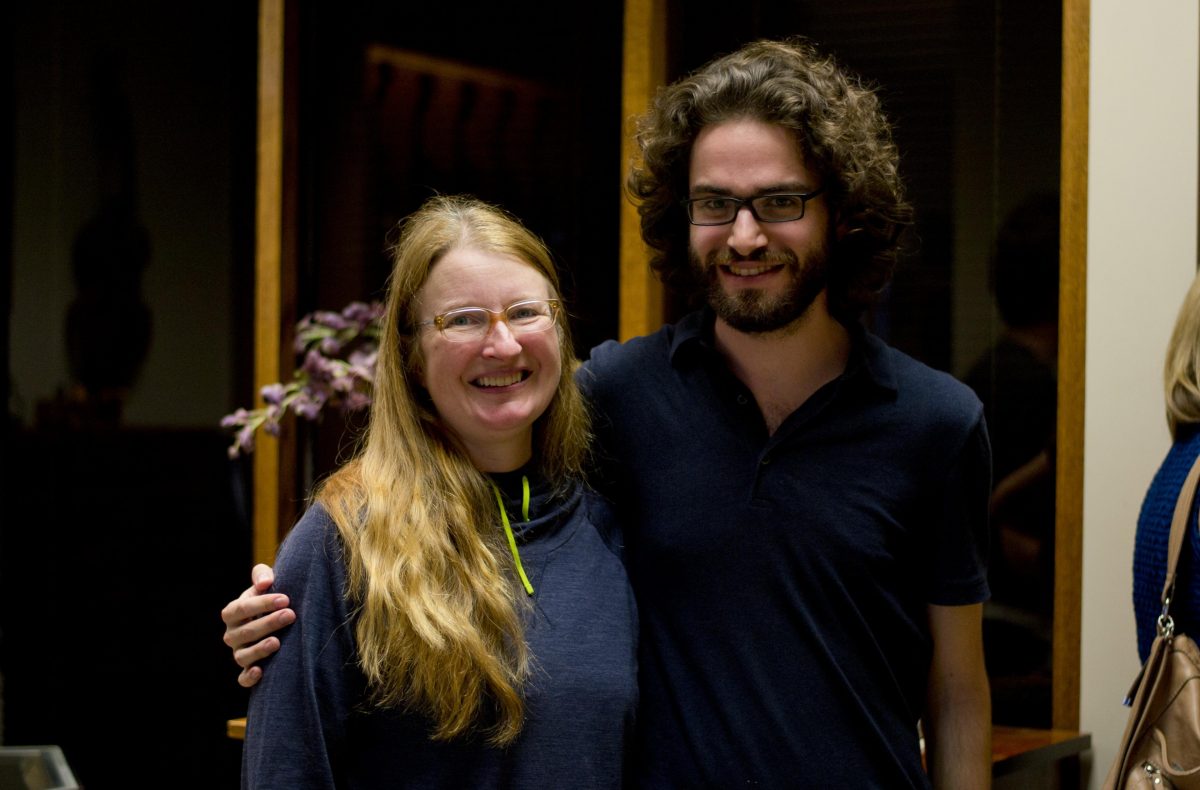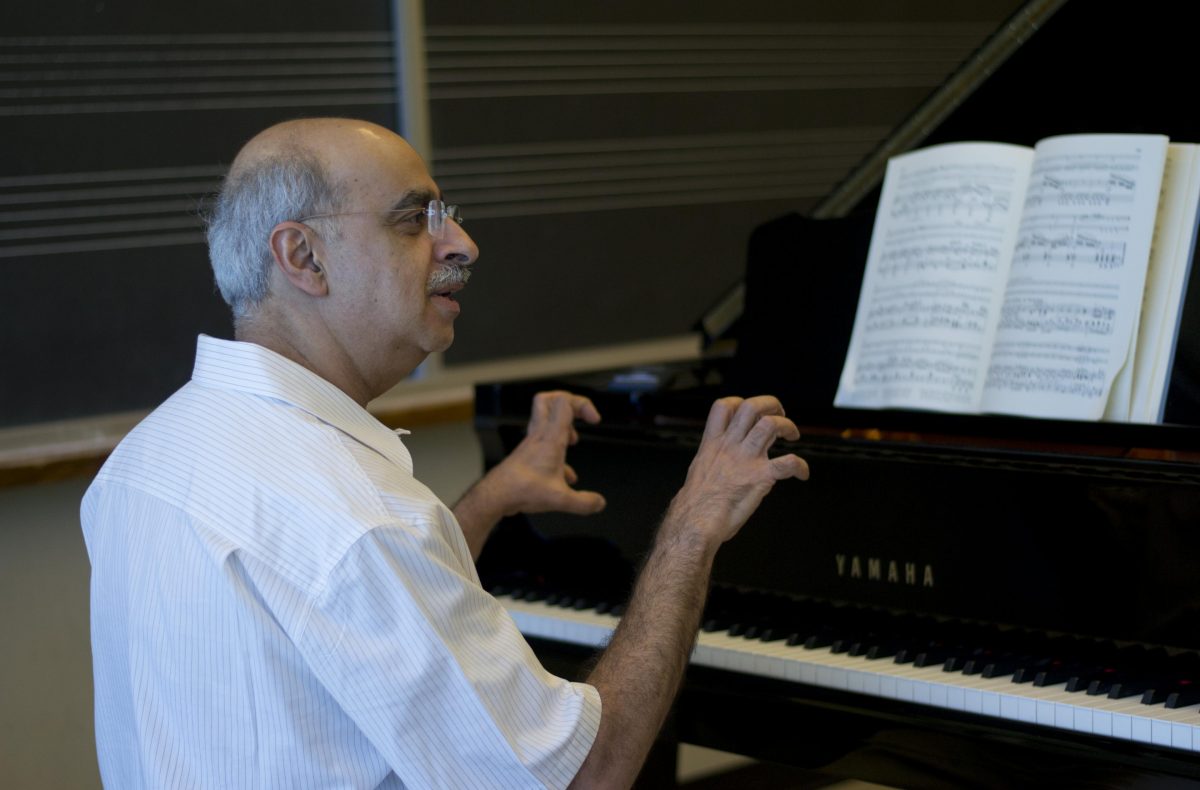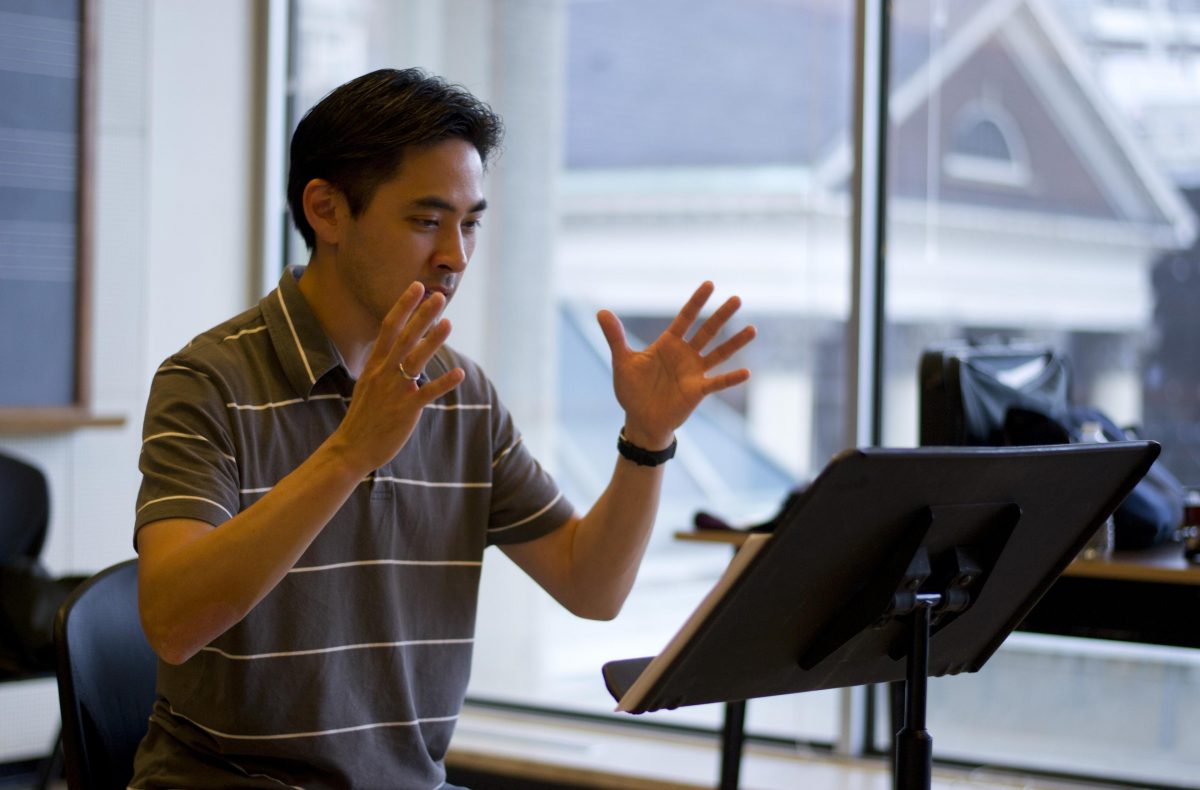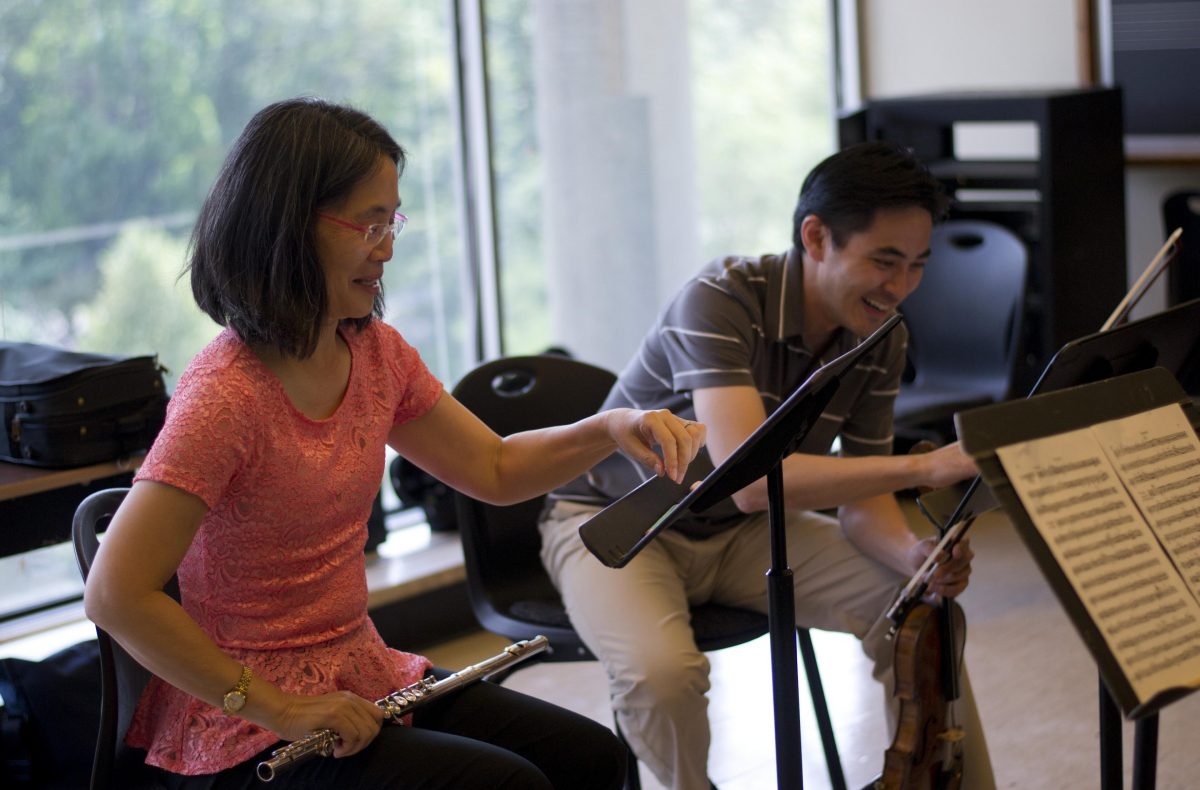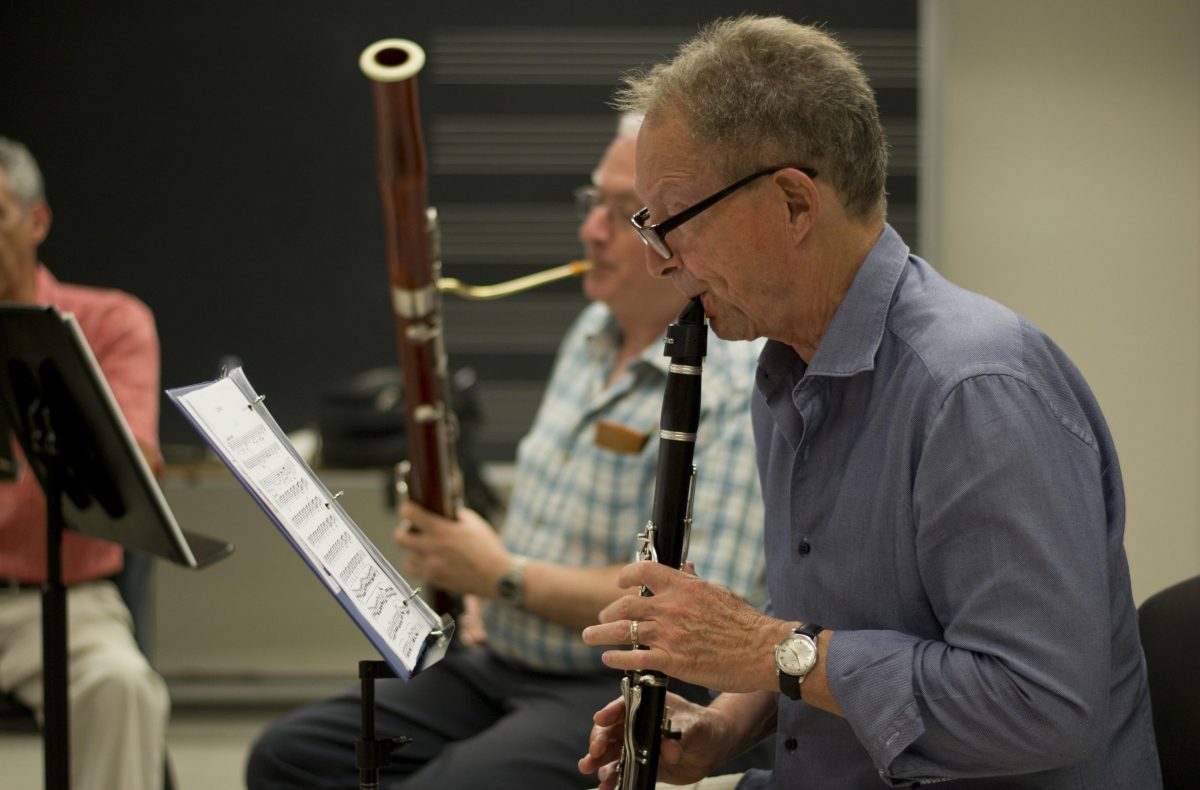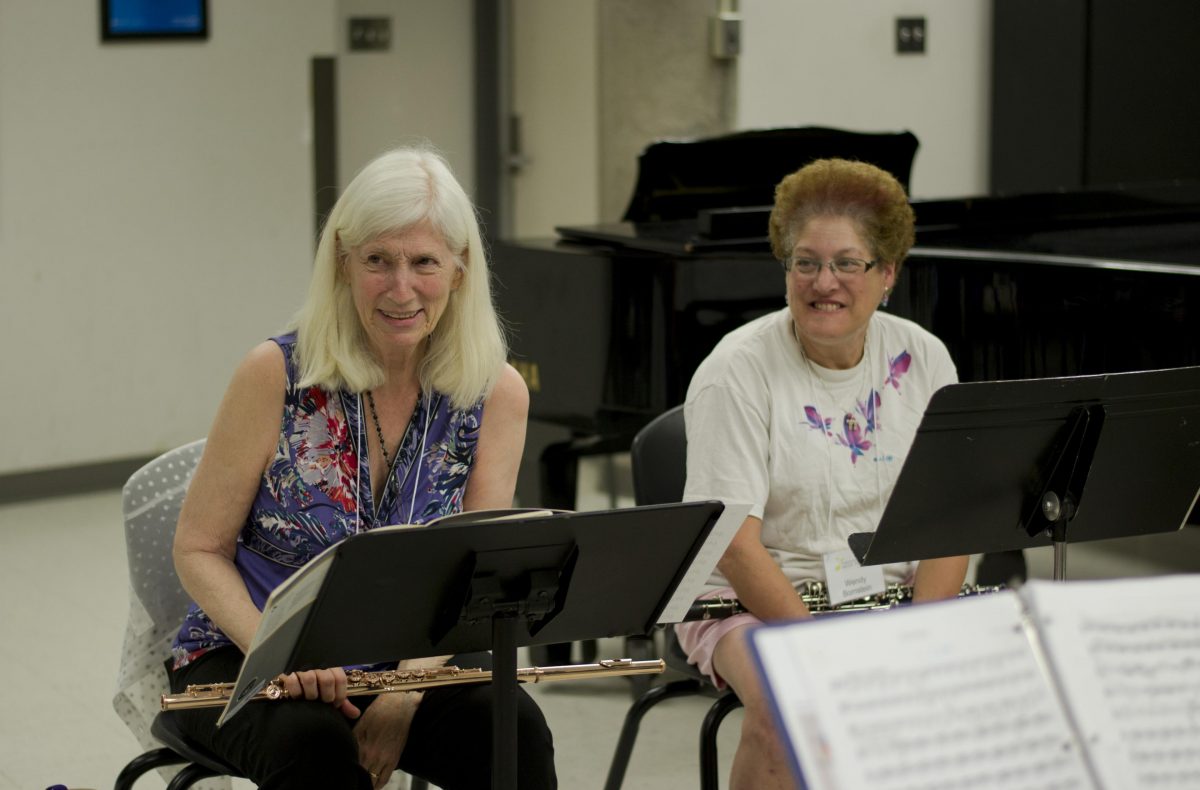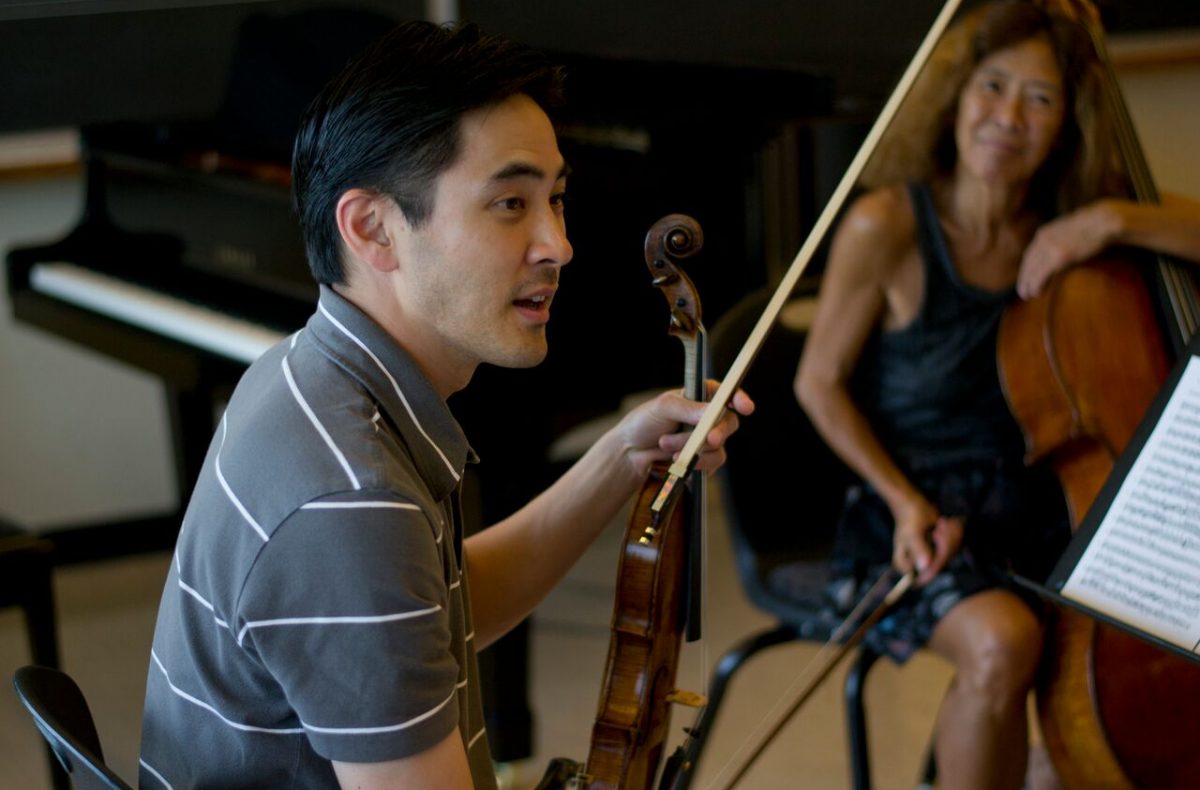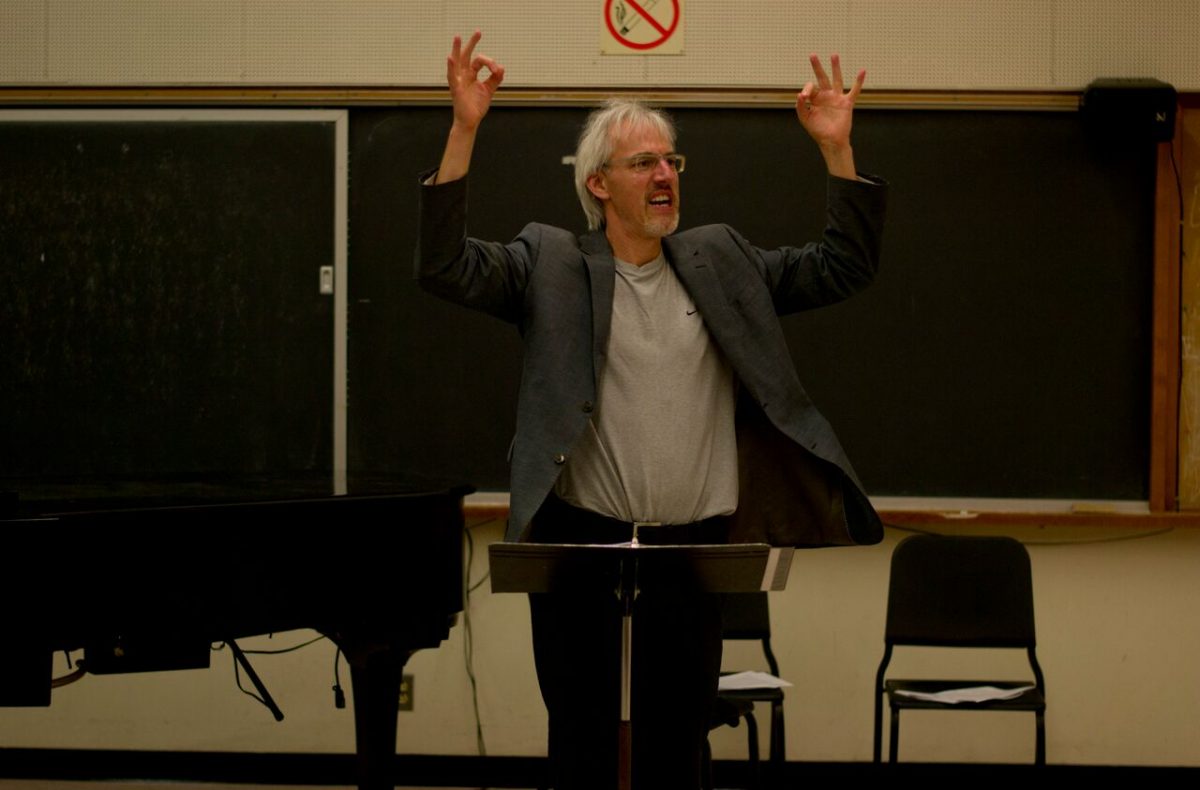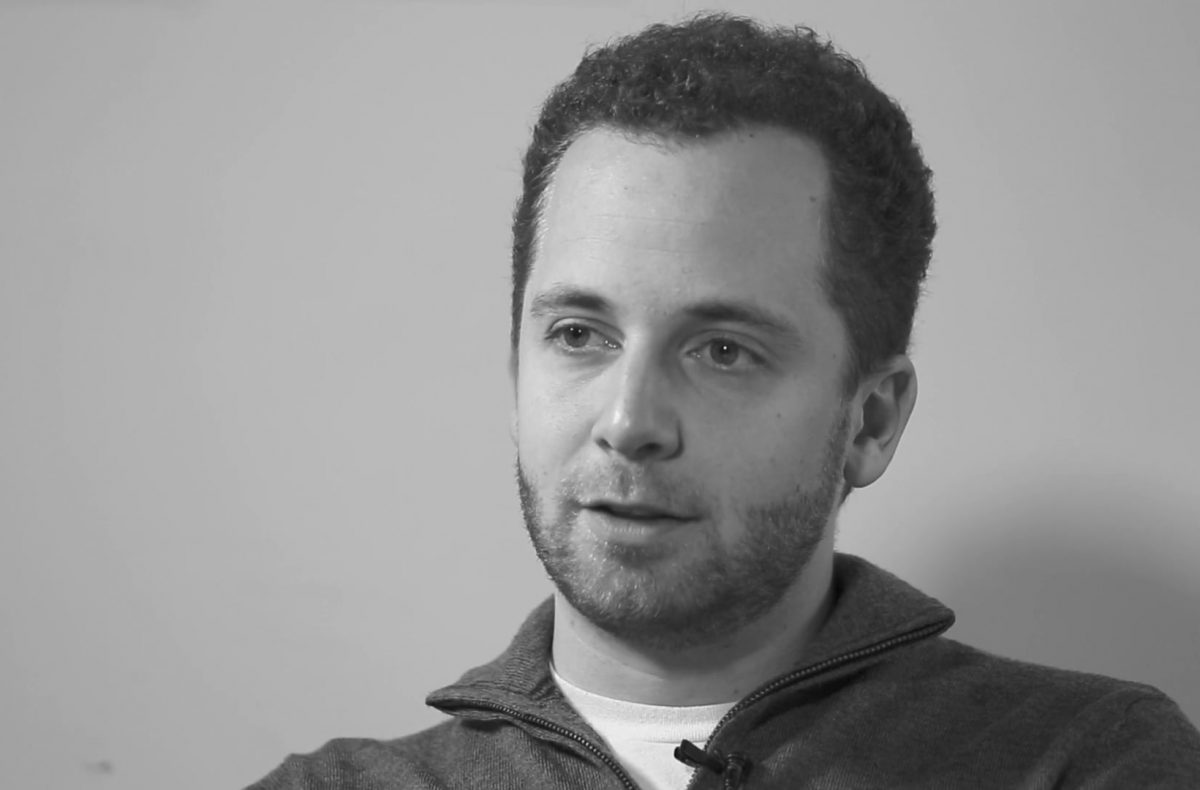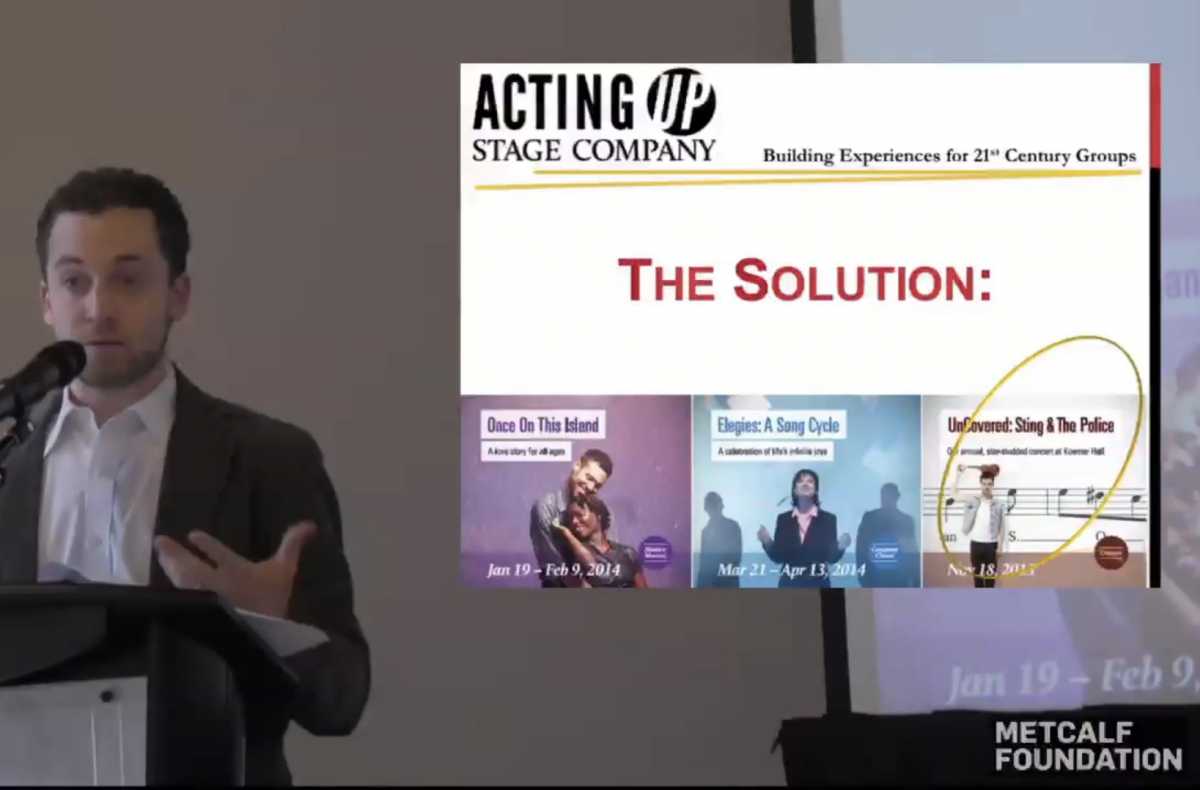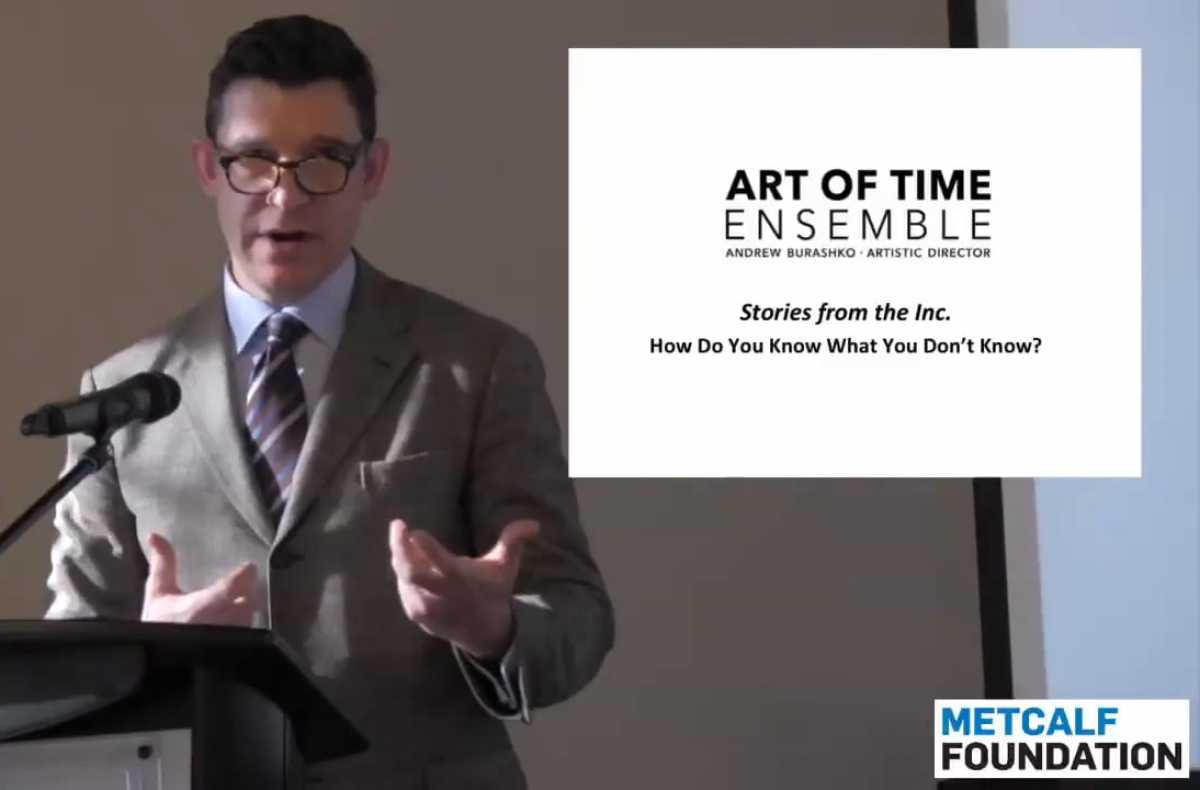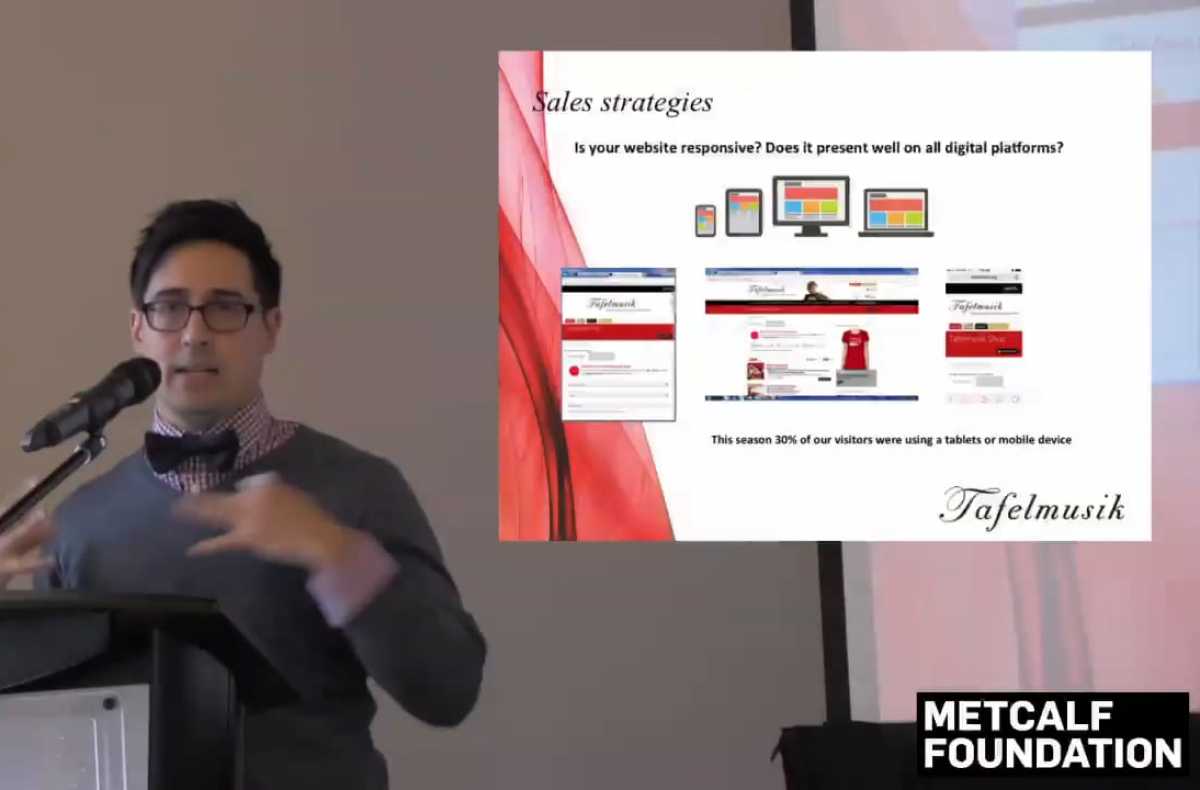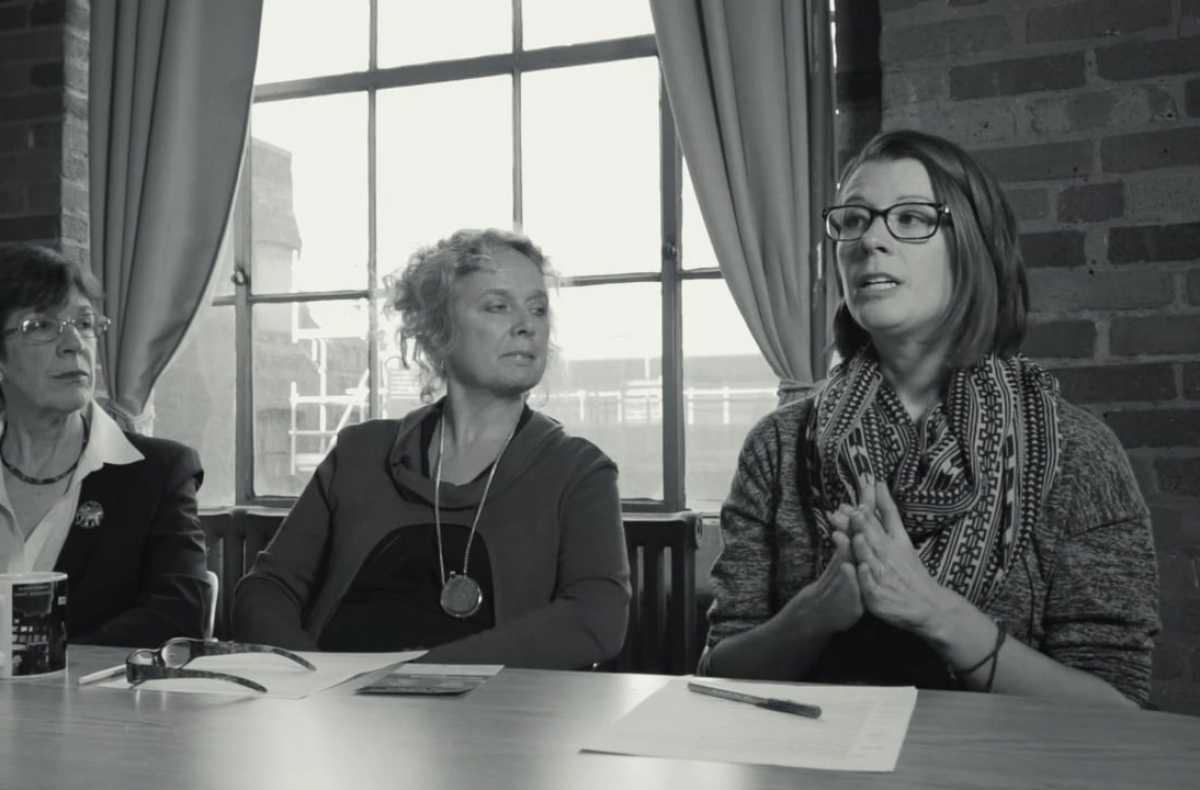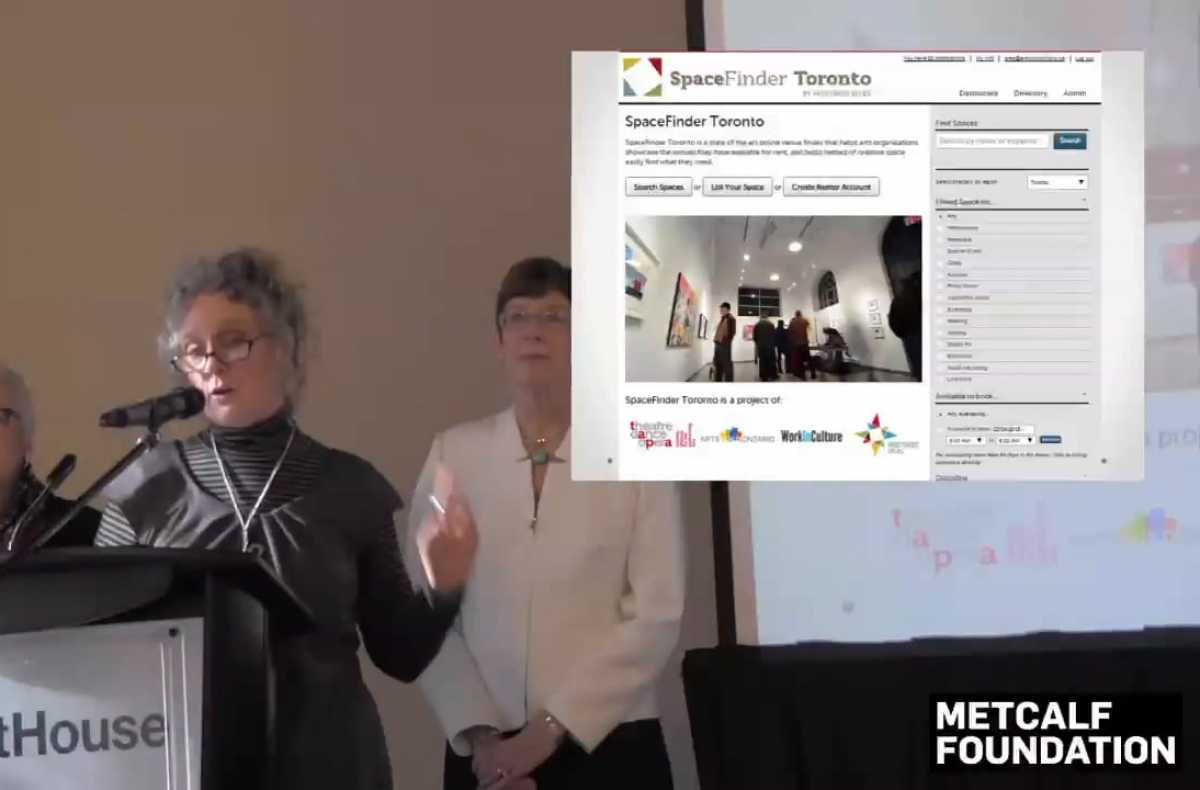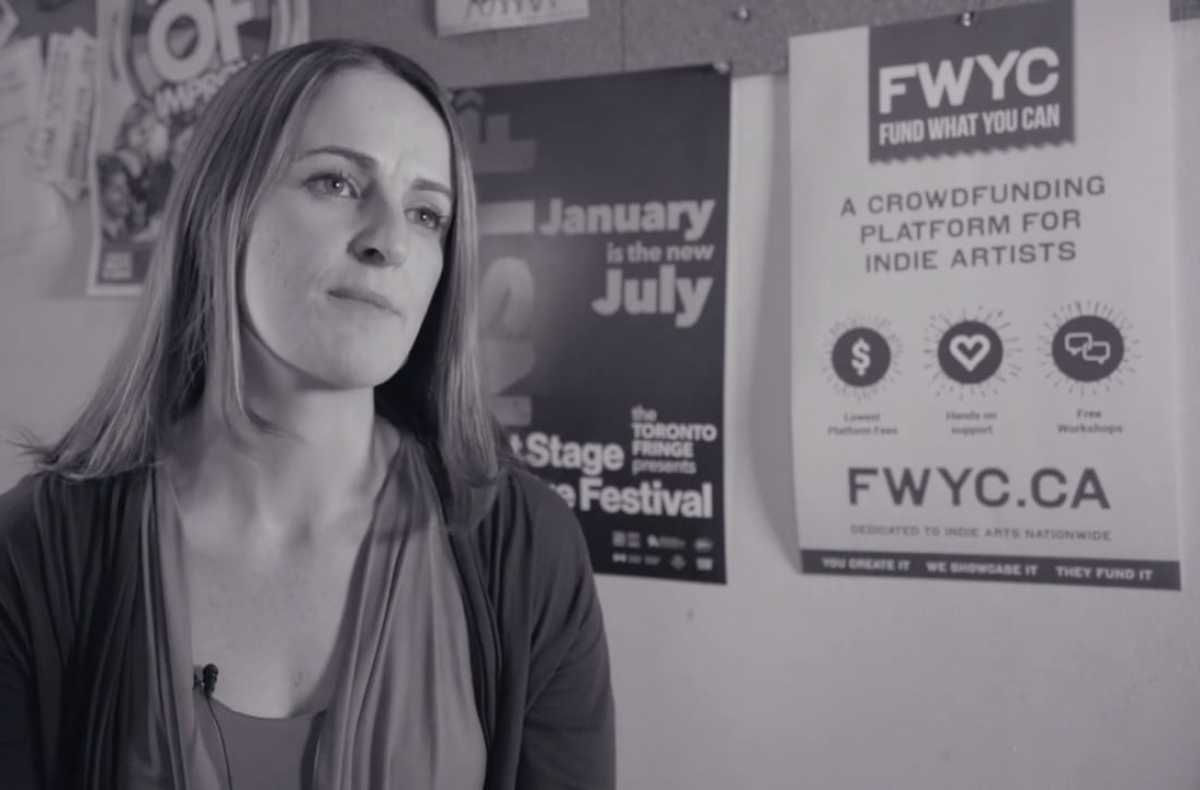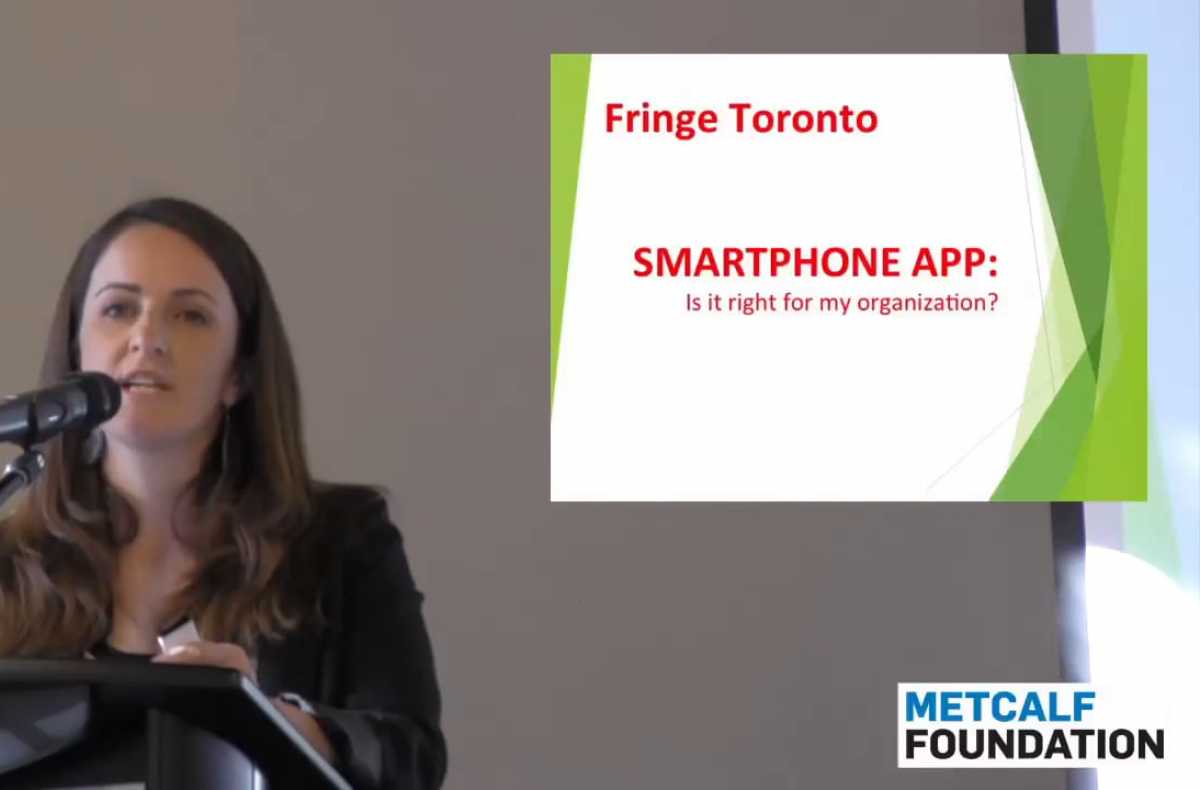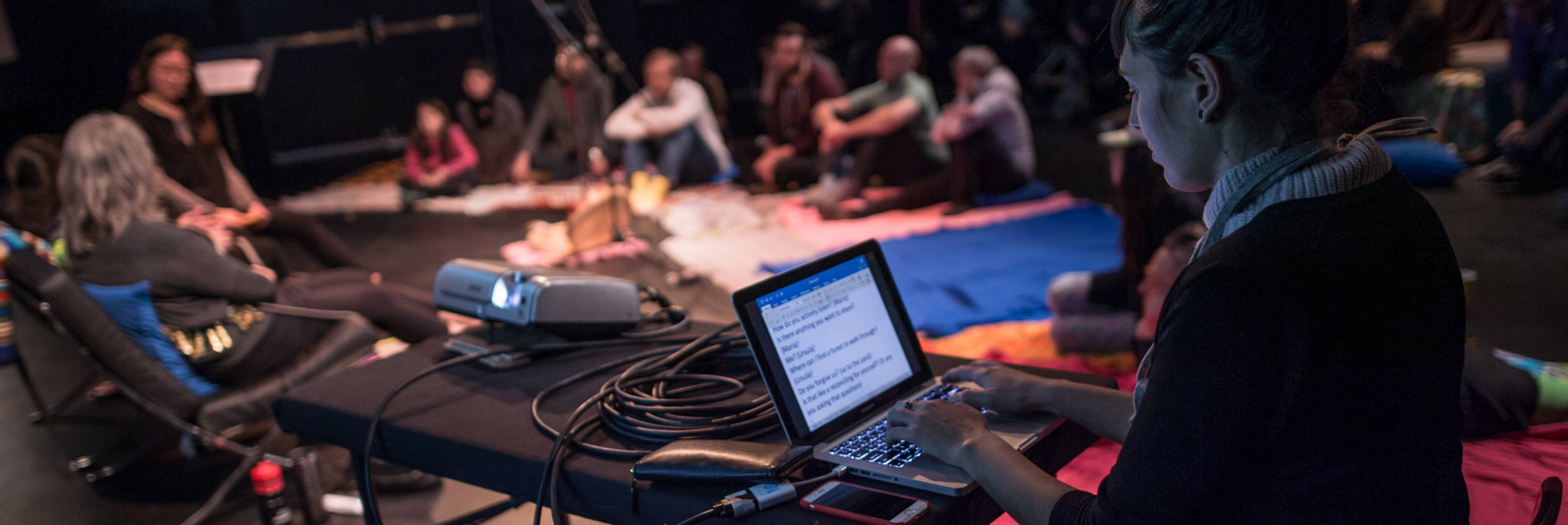
Creative Strategies Incubator
The Creative Strategies Incubator was a Metcalf Performing Arts initiative from 2013 to 2020.
The Creative Strategies Incubator (CrSI) was designed to help companies explore strategies for addressing longstanding sectoral issues in meaningful new ways, and nurture the organizational change that comes from developing and implementing innovation. The stream introduced pre-determined focus issues and created a Learning Network to foster a culture of shared wisdom.
The three focus issues were:
- New approaches to, or alternative sources of, revenue (2013 and 2015 cohorts)
- Engaging audiences and/or building communities around your work (2014 and 2017 cohorts)
- Providing opportunities for artistic work to reach its potential (2016 cohort)
The Learning Network was designed to strengthen the work of the individual organizations through mutual support and technical assistance, and to oversee the translation of the work externally.
The outcomes and learning from each of the five cohorts (2013 to 2017) are captured in the Stories from the Inc.
About
Please note that we are no longer accepting new Creative Strategies Incubator applications. Our funding under this stream wrapped up in 2020.
2017 Learning Network
Engaging audiences and building communities
From a commitment to developing deeper relationships with underserved communities such as francophone youth, Spanish-speakers, newcomers, Indigenous people, and people with visible and invisible disabilities, to a dream of taking an underutilized space and transforming it into a vibrant cultural hub, five new projects are being launched for our 2017 Learning Network.
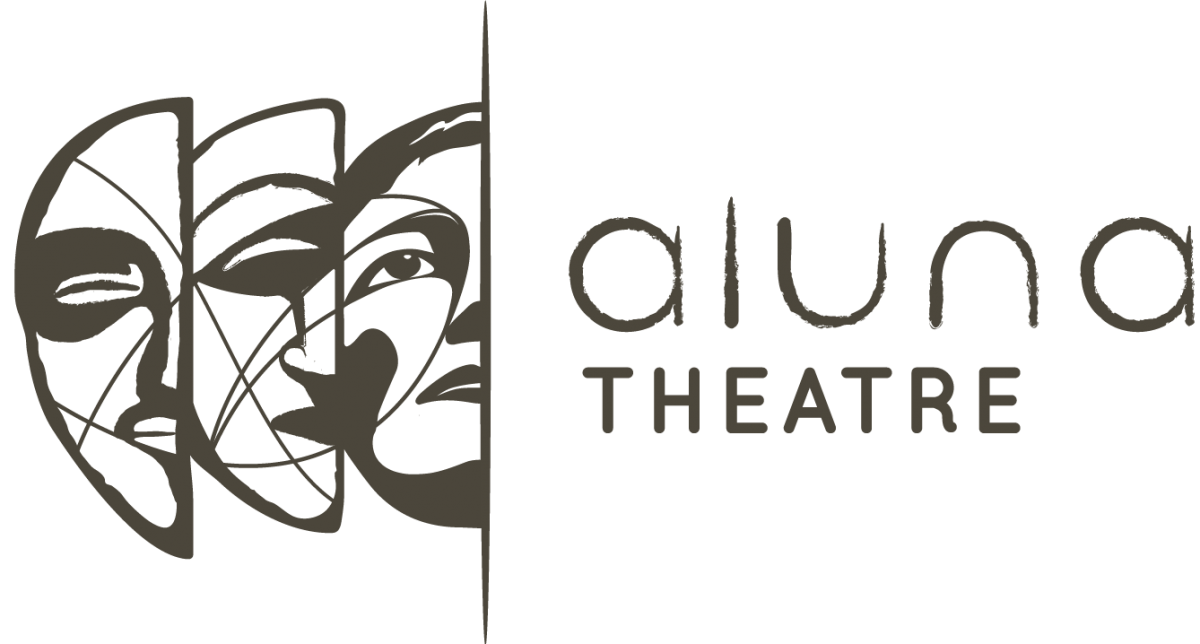

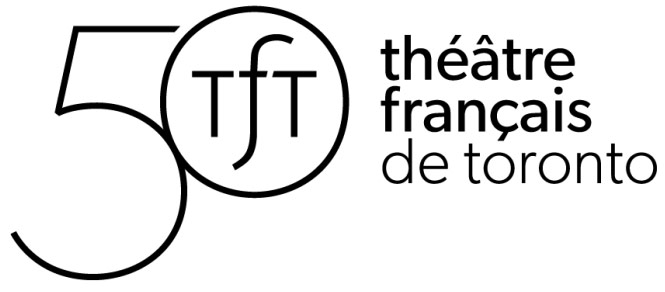
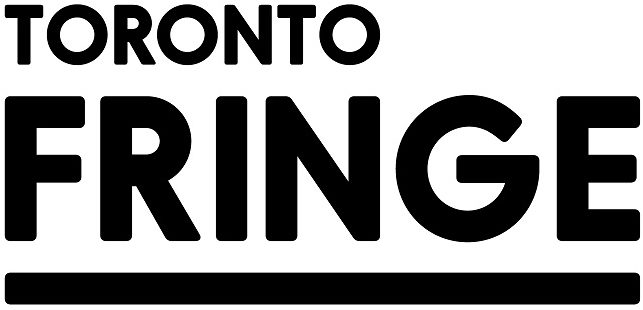

2016 Learning Network
Providing greater opportunities for artistic work to achieve its potential
From an exploration of cross-border resources, to a residency for Indigenous theatre artists, six new projects are being launched as part of our 2016 Learning Network.


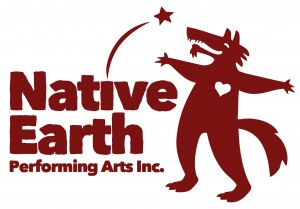



2015 Learning Network
New approaches to, or alternative sources of, revenue
From an online theatre arts magazine to a leadership training program for women, four new projects are being launched as part of our 2015 Learning Network.
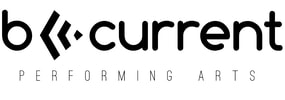
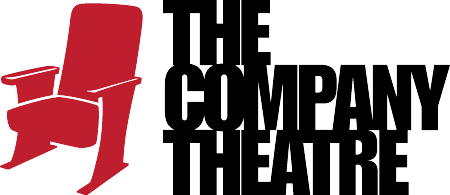


2014 Learning Network
Engaging audiences and building communities
From a summer music academy to an online hub for participatory arts practice, six new projects are being launched as part of our 2014 Learning Network.

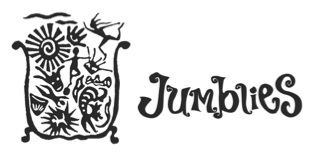
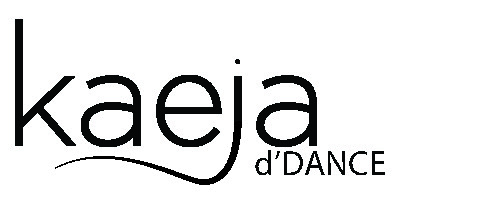
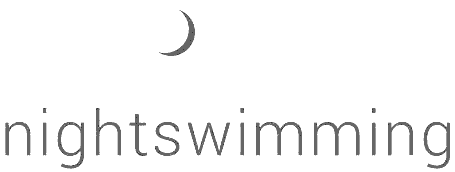
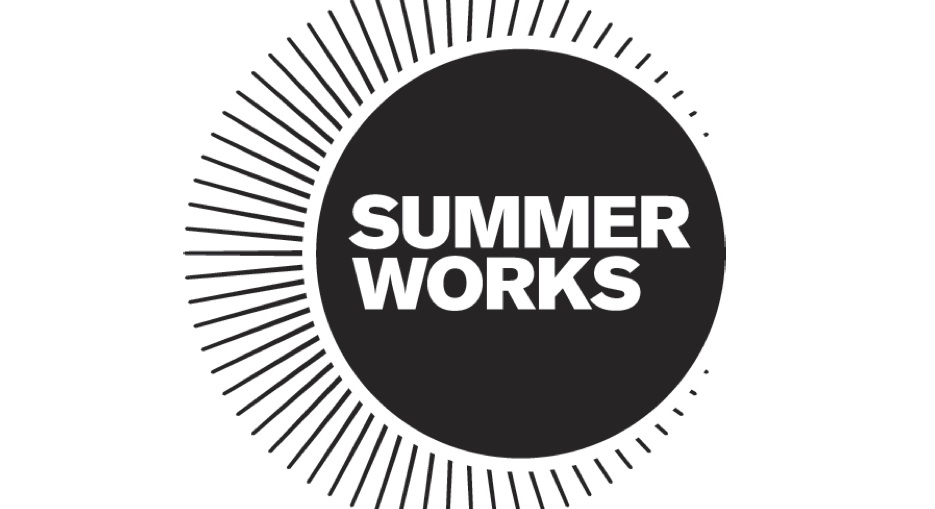

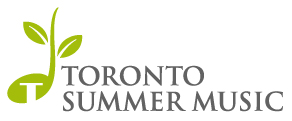
2013 Learning Network
New approaches to, or alternative sources of, revenue
Five projects were launched as part of our 2013 Learning Network:
- Acting Up Stage Company transformed their annual Koerner Hall concert series into a social enterprise and expanded it into a three-day event.
- Art of Time Ensemble built a robust online hub around their company’s archive of audio and digital recordings.
- Tafelmusik revamped their online presence, streamlining customer interactions through the introduction of a new online sales platform.
- TAPA partnered with ArtsBuild Ontario and WorkInCulture to launch SpaceFinder Toronto, a searchable online database of creative venues that acts as a revenue-generating opportunity for local production companies.
- The Toronto Fringe created a crowdfunding site to support independent theatrical productions participating in the Fringe, and launched a comprehensive app for festival attendees.
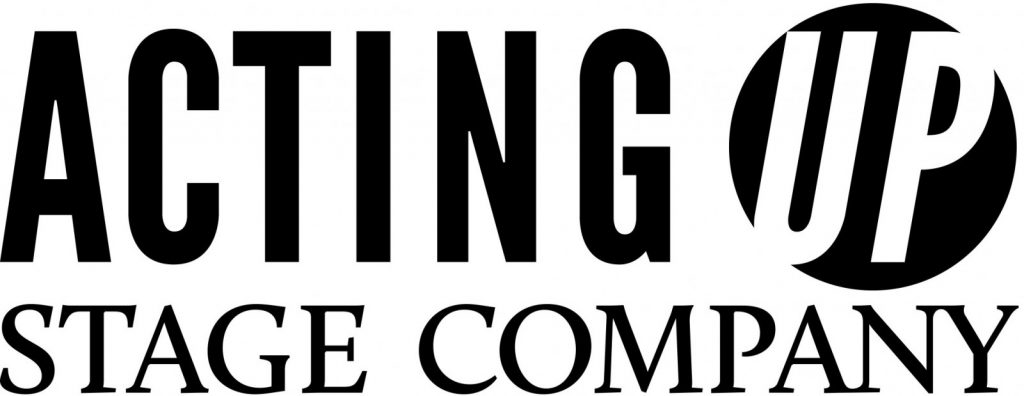

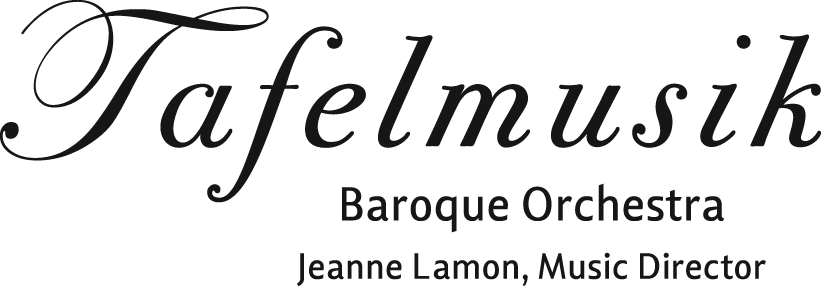



The rigor of getting to focus on a single strategic aspect of our organization over a three-year period resulted in tremendous learning, numerous successes, and a forever-changed organizational DNA. CrSI allowed us to dream big and turn those dreams into tangible outcomes.
Artistic & Managing Director, The Musical Stage Company

At the Toronto Fringe, we have been focusing on accessibility initiatives. The CrSI program has allowed us to learn each year by re-assessing what we are doing in order to make our project more effective. Connecting with other companies through CrSI has provided us with multiple learning opportunities. Even though they are focusing on different areas, they share similar obstacles and raise similar questions.
Executive Director, Toronto Fringe
Supported Initiative
Aluna Theatre develops, produces, and presents innovative and culturally diverse performance work with a focus on Latin Canadian and women artists. By uniting emerging and professionals, Aluna encourages new hybrids of theatre that evolve from a rich collaboration of experiences and performance traditions.
In recognition of the unique barriers, needs, and potential of the Latin Canadian community of artists and audiences, Aluna Theatre will develop three new artistic outreach ‘channels’ designed to engage its communities and grow its audience base in person, online, and on the radio.
Year One Reflections
In recognition of the unique barriers, needs and potential of the Latin Canadian community of artists and audiences, Aluna Theatre is developing three new artistic outreach ‘channels’ designed to engage Latin Canadian communities and grow our audience base: in person, on the radio, and online. Beyond-the-black-box initiatives include Radio Plays, a new website, written publications and new outreach activities that help to build capacity among newcomer communities from the Pan-American diaspora. We are working with artists and non-artists to carry out this initiative, creating content in both English and Spanish.
We want to build an audience from the Latin American Diaspora. We recognize that there are many barriers to cultural participation facing these communities: language barriers, economic barriers, educational barriers, and accessibility barriers. We are motivated to share the Latin Canadian experience through our work. In particular, we want to share what it means to be a newcomer in Canada, living far from your place of origin. We want to go where newcomers are. We want to reach them through channels that are easily available so we can be a lifeline for them as they navigate the Canadian system, including its diverse culture. We can listen and respond. We can be a vital link.
We have successfully recorded two plays from the Latin Canadian theatre canon in both English and Spanish, engaging bilingual actors who performed in both languages. While our initial intent was to create ‘Radio Plays’, we’ve come to understand that “Radio Plays” are an artistic discipline unto themselves. In fact, what we have created are readings of plays for radio. That distinction has been key to what we are doing. It has allowed us to ground our initiative in our live-theatre-based identity and experience as a company.
First, seek help from your peers! We learned a lot from speaking with colleagues in the Learning Network who were in a process of pursuing something they had never done before. It offered us perspective on our own specific approach to innovation.
Second, seek help from the communities you wish to serve. Test your assumptions and engage community participants along the way. Shape and reshape your vision in collaboration.
Finally, don’t lose who you are. Enhance your best work in order to expand into new directions. For us, this meant leveraging our theatre perspective, applied in new channels.
How do we define community? Who is “our” community? Does the concept of a cultural community create targeted opportunities or ghettoize ethnicity?
Supported Initiative
The Canadian Opera Company is the largest producer of opera in Canada and one of the foremost opera companies in North America.
The COC will focus on animating their currently underused space, located at 227 Front Street East. In addition to becoming the home of an expanded Academy, this new cultural hub will showcase activity beyond the COC’s mainstage and allow the COC to leverage its infrastructure to empower emerging artists and organizations and to connect with new audiences. Specific projects to be explored include expanding the COC’s company-in-residence program and delivering a more varied and robust calendar of events, culminating in an Opera Music Festival.
Year One Reflections
Our initiative is to establish a Culture Hub at our administrative home at 227 Front St. E. that showcases and supports COC activity (especially our COC Academy programs), responds to our community, and lifts up emerging artists and organizations to create meaningful change in how the COC interacts with our world and our art form.
We pursued this project because our city is changing. Over the last decade, Toronto’s St. Lawrence neighbourhood – where our administrative and rehearsal spaces are located at 227 Front St. E. – has undergone substantial population growth, welcomed younger and increasingly diverse demographics, and witnessed extensive multi-use real estate development. In this context, we saw an opportunity to better serve our evolving neighbourhood community by animating our building as a Culture Hub. We see this moment as an opportunity to transform our organizational behaviour by leveraging our physical infrastructure to support new avenues of artistic expression, extend our commitment to relationship-building in the community, and find cross-organizational benefits to the arts sector more broadly.
Over the course of our first year in CrSI we’ve experimented with an array of events and experiences at our Culture Hub. Our anchoring accomplishment is the delivery of an Opera for Young Audiences (OYA) program – a high-quality live opera production designed specifically for young people and their families. Exit surveys showed that 70% of the children attending the production were experiencing opera for the first time. This outcome aligned with our goal for the Culture Hub – “new audiences experiencing art at our transformed site”.
Our experience thus far has reinforced the need for our long-term commitment to building relationships in the local community. Investing in relationships that are reciprocal and active is essential. We need to involve stakeholders in programming at 227 Front Street East in a way that’s more than just an invitation and a hope for a moment of buy-in.
Thoughtful relationship-building takes time and requires a shift in organizational processes around program planning, development, and execution. This learning has already begun to reshape the way we staff administratively, the way we work with artists, and the way we interact with our communities.
- Test your assumptions!
- Listen deeply.
- Determine what success looks like.
- Systemically track relevant outcomes.
A key question that has emerged for us is: how can we navigate the territory between what we perceive to be our core product and the needs of our communities? We need to interrogate the essence of what it is that we do and how those mission-set boundaries – as elastic as they are – can embrace the needs and interests of our communities.
Supported Initiative
Established in 1967, Le Théâtre français de Toronto is a professional French-language theatre company that produces and presents classical and original plays to Toronto francophone and Francophile audiences.
The initiative focuses on meeting the needs of a younger and diversified new audience base and, in particular, ethnically diverse communities, new Canadians, and Francophiles of all generations.
Year One Reflections
In response to a new cosmopolitan reality specific to Toronto francophones — fed by a desire to deepen contacts with the GTA’s Francophiles — TfT is offering a new robust approach to deepening contacts through Theatre for Young Audience (TYA). Technologically savvy approaches to audience development help enrich theatrical experiences for young people and their allies. The initiative wishes to meet the needs of a younger and glowingly diversified new audience base and in particular ethnically diverse communities, new Canadians, and Francophiles of all generations.
Toronto’s fast changing and growing francophone community was underserved by TfT. Traditionally, the company has focused more on producing adult shows rather than offering theatre experiences designed specifically for children, teenagers and their families. Francophile schools, be they immersion or core French, were particularly not well-served. Contemporary cultural mediation strategies present elsewhere in the French speaking world were, until recently, absent at TfT.
We have succeeded in building contacts within new francophone and Francophile schools through an updated and almost exclusively technologically based communication strategy. We created an email database that is systematically updated each summer. We also created outreach tools, including a student programming brochure, workshops in the schools, and videos posted on our website.
There is a non-negligible presence of students practicing faiths other than Catholicism in Franco-Ontarian Catholic schools. Consequently, the rapport between teachers and parents in this system strikes us as a “perpetual work in progress” since, at times, learning objectives for students strike us as a moving target.
Understanding the complexities of Toronto and Ontario school systems is key to building long-term relationships with teachers and school administrators. You cannot hope to build lasting associations with each system unless you clearly understand their similarities and differences. This can include how school boards determine school demographics through the design of catchment areas for specific schools, all the way to varying pedagogical objectives specific to individual school boards.
Loyalty is a two-way street: which services and strategies best build enduring long-term relationships with schools and allow TfT to adapt to new realities specific to individual schools?
Supported Initiative
The Toronto Fringe produces two important festivals every year: the Toronto Fringe Festival and Next Stage Theatre Festival. Since 1989, the Toronto Fringe has grown into Ontario’s largest theatre festival, welcoming over 105,000 patrons and giving voice to over 1,200 artists annually.
Building on their work to provide better access for deaf and disabled artists, the festival will continue to explore ways to include people living with both visible and invisible disabilities. Their initiatives will include producing signed videos, large print program guides, Braille, access to scripts, and signed, audio described, and relaxed performances.
Year One Reflections
The Toronto Fringe is embarking on a three-year accessibility action plan to holistically produce an accessible and welcoming organization with two annual theatre festivals: the Fringe Festival and the Next Stage Theatre Festival. We are striving to live up to our core values: to be inclusive and accessible to all. We are systematically assessing and re-approaching all areas of our organization through a rigorous lens of accessibility: our knowledge, our participants’ opportunities, our audiences’ experiences, our festival venues, our staff and volunteers’ training, and our own infrastructure and operations. Our initiative with Metcalf focuses on accessibility as it relates to Fringe Festival audiences, participants, staff and volunteers. Accessibility is more than barrier-free physical access; it addresses the needs of those living with non-visible disabilities, including vision loss, hearing loss, neurological diversity, and mental health conditions.
Since first undergoing AODA (Accessibility for Ontarians with Disability Act, 2005) training, we have evolved our accessibility approach across all areas of our organization. We started with festival access for artists, creating an accessible lottery to encourage participation in the Fringe Festival by people living with disabilities. In the first year, we were able to support the artists that applied but we realized we had more to do to support all kinds of disabilities and to make our venues more accessible across the board. We also needed to start thinking about bringing a more diverse audience to the Festival and recognized that we weren’t offering accessible measures in a very big way, i.e. no ASL shows, relaxed performances etc. We started to have direct conversations with people in communities with access requirements, and we are continuing those in order to drive our work going forward.
Our initial goals were to:
- Foster a Fringe Festival with 100% physically accessible venues. Using accessible venues was the clearest way to communicate to all our stakeholders just how much of a priority accessibility is to us.
- To significantly increase the offering of adapted performances and performances with assisted measures such as Audio Described, ASL Interpreted, or Relaxed Performances.
Improving physical accessibility was no small feat and in our first year, we did not achieve a perfect record. In particular, the site-specific genre and its unique parameters was especially challenging to address.
Our greatest accomplishment was successfully supporting 46 individual assisted performances (ASL, AD, Relaxed) by 19 companies. By comparison, only one company offered assisted performances in the previous year. Initially over 60 companies expressed interest in offering adapted performances or increased assisted measures (Audio Described, ASL Interpreted, Relaxed) this year and we’re ready to help make more companies follow-through during the next Fringe.
Direct communication with the individuals and communities that we are aiming to serve is essential. The most impactful insights came from consulting with individuals who live with all varieties of disabilities. The insights are paramount to our evolving accessibility strategy. We’ve learned that putting independence and dignity at the core of each of our initiatives is key. We’ve also learned that it’s important to be clear and as specific as possible about accessible offerings so that potential audience members are empowered to make informed choices. It’s ok if we don’t have every accessible measure all at once but it’s vital to let people know what we do and don’t have. Accessibility is not a ‘one size fits all’ situation. We are working on finding clarity in our approach to working with artists, patrons and staff/volunteers with accessibility needs.
Despite passion and resolve, change is not accomplished all at once.
We recommend creating a detailed work plan. In addition, importantly, refer to it often. The plan is your road map, and it will keep you on track! We found ourselves sometimes straying away from the plan because we got so busy when we were in Festival mode. At the same time, unforeseen things come up and plans must be flexible, so scheduling regular check-ins are important so that the work plan can be changed if need be and so that everyone is aware. We need to have a more holistic approach and build in the time to react as and when situations arise, as we certainly do not know everything yet!
We also recommend beginning with plenty of lead-time and working with communities/community consultants in the initial stages. Tailoring marketing and sending out media messages in ways that are accessible to diverse audiences is important too. We believe this is how true inclusion is achieved.
What’s next?! We have cast our net wide and now we need to figure out where we want to go deeper. What do we need to develop? We intend to articulate our intentions in a manifesto that outlines what we have undertaken so far and where we want to go next. It will provide clarity for our stakeholders and for us.
Supported Initiative
The oldest professional theatre company in Toronto, Young People’s Theatre (YPT) has been a national producer and presenter of theatre for young audiences, often partnering with other Canadian and international arts organizations.
YPT’s initiative focuses on the research, design, and implementation of a program of community engagement with newcomers and Indigenous people, through a lens of cultural exchange and reconciliation.
Year One Reflections
Young Peoples’ Theatre (YPT) is interested in blending past learning about newcomer audiences with new learning about Indigenous culture and history. In other words, we want to apply a lens of Indigenous knowledge to our relationship-building work with newcomers.
We experienced truly transformative workshops in the Seven Grandfather Teachings of the Anishinabek organized for all of YPT’s staff. Each workshop included an Indigenous art form and an Elder to give us insight into the seven teachings of Respect, Bravery, Love, Humility, Honesty, Wisdom, and Truth. The final workshop in Truth generated a compelling “to do” list that was based on things we wanted to achieve as a result of these powerful workshops. An example is “take this learning to the Board members of YPT and to their organizations.”
There is no point at which one can say, “aha, now I know Indigenous culture” The learning, the encounter, the exchange, and the understanding are ongoing.
You are entering into work that will profoundly confront your knowledge of, and relationship to, colonization and its hold on Western culture and practices. An example is confronting how we tend to run all meetings with a “chair” and a sort of top-down structure. We are starting to hold staff meetings now in a circle with a rotating chair (not senior management) running the meeting. And we are trying to eliminate that colonialist possessive language/mindset where we refer to our audience, our community, or our staff.
How will we know our work with newcomers is being influenced by Indigeneity?
Supported Initiative
Art of Time Ensemble is a collective of Canadian-based classical, jazz, and pop musicians, founded in 1998 by pianist/artistic director Andrew Burashko. Art of Time presents an annual subscription season at Toronto’s Harbourfront Centre Theatre, and regularly appears as part of the Royal Conservatory of Music performance season at Koerner Hall.
Art of Time’s supported initiative will increase their artistic work’s potential by fostering new creation, enhancing existing works, providing resources according to the demands of the artistic idea, and leveraging works in original and adapted form to increase their number of performances and their touring capacity. The company will concurrently expand its human and financial resources to underwrite these activities in perpetuity.
Art of Time previously participated in the inaugural 2013 Creative Strategies Incubator.
Year One Reflections
With a solid base comprised of a decade of curatorial and performance excellence and a strong financial and organizational foundation, Art of Time Ensemble looks forward to furthering its artistic capacities in several key areas.
We will improve and extend the lives of our productions by: fostering the creation of new works; reviving and enhancing existing repertoire; expanding the scope and scale of our works according to the demands of the idea, rather than self-censoring due to resource limitations; and leveraging works in original and adapted forms to increase our national and international festival, touring and run-out activity. As the program progresses, we will concurrently expand our human and financial resource capacity to underwrite these activities in perpetuity.
Like other performing arts organizations, Art of Time Ensemble creates high quality offerings within the scope imposed by our means, but not necessarily our imagination. Unlike most other companies, our artistic development process has taken place entirely in the head of our Artistic Director, without pre-production exploration or development of any kind. An idea will be programmed in our season untested and unperformed, on three days’ rehearsal and without certainty as to its readiness. This means that some ideas worthy of pursuit will either fall short of their greatest artistic potential, or not be staged at all.
We also felt that the accessibility and high quality of our works should allow us to do more national and international work. We need to get connected internationally and export our work.
One significant outcome so far has been actually developing a new idea to see if it is programming ready. We held a four day in-theatre workshop of a concept Andrew had to set Scriabin’s 24 Preludes in an immersive colour-filled environment, to convey a sense of the synaesthesia that inspired Scriabin to assign a colour to each of the 24 movements. Kevin Lamotte, our lighting designer, Andrew and the house crew at the theatre played with the possibilities for four days, emerging with a solid understanding of their approach. We have since programmed the piece and it will be on stage in March 2018. For theatre people, this process sounds elementary, but for a music company, it is less common.
There is no single or best way to gain international exposure. We’ve met with dozens of players in the international scene, including presenters, agents and artists. Every person has given different advice; all of it was good, but it made our heads spin a little. One reason that the advice varied so much is that the work we do covers such a broad range. We operate in the classical, pop and theatre spheres and prescribing a single strategy that covers all three is near impossible.
On the artistic development front, I’d say a frank assessment of your approach is key. We realized that taking an idea straight to production is actually riskier than taking time to carefully develop a risky idea. On the market development front, relentlessness is critical. Don’t be disheartened by the opacity of the international scene. Each time we revisit it, for example through an international arts congress, we are that much more comfortable and familiar with it.
One question we are grappling with is the scalability of Art of Time Ensemble. As the opportunities for us grow in number, and as we drive to increase that number even further, how do we capitalize on them when our Artistic Director is the researcher, curator and a performer of all of our work?
Supported Initiative
The Musical Stage Company produces, develops, and promotes better understanding of contemporary musical theatre in Canada. In addition to their critically-acclaimed productions of contemporary musicals, the Musical Stage Company presents an annual musical concert at Koerner Hall and offers a variety of mentoring and training initiatives including workshops in Thorncliffe Park.
The Musical Stage Company’s supported initiative will unlock and access cross-border resources to support the often costly and complex musical theatre development process. The company will develop collaborative relationships with US regional theatres, explore US models for commercial enhancement within Canada, and capitalize on funding opportunities that are only available to American 501c3 charities.
Year One Reflections
We see an opportunity to bolster the very expensive development of new musicals because of our proximity to the US where musical theatre is very popular and relatively well-supported. We want to enable new Canadian musicals in development to better thrive, short and long-term, by unlocking and accessing cross-border resources that will support and nurture this costly and complex process. There are three parts to our strategy: establishing collaborative producing and developmental relationships with US regional theatres; exploring the model for commercial enhancement, that is frequently used in the US, within Canada; and capitalizing on funding opportunities for the development of musical theatre that are only available to American 501c3 charities by opening a U.S. charity account.
After working with writers for over five years to develop original Canadian musicals, we were struck by how long the process takes and how under resourced the sector is in Canada. Even with our commission funding and the promise of royalties from a production at our theatre, once that fee was divided amongst multiple collaborators, it was an unfair compensation for the immense amount of work.
By chance, we had forged a collaborative relationship with a US regional theatre in Washington to co-develop a musical. We were struck by how much better the resources were for the writers between two commissions and the built-in opportunity for multiple productions. Plus, the strain on our organization through each phase of development was lightened with a partner to share the costs. We saw this as a possible model for exploration within a larger market that is passionate about the musical theatre art form.
We secured commercial enhancement support for Life After. This is a very popular model of operating in the US where a commercial theatre company offers financial support to a new musical at a not-for-profit theatre, covering the costs of elements which have long-term impact. In our case, Yonge Street Theatricals covered the cost of orchestrations, arrangements, a longer rehearsal period because it was a new work and certain enhancements to the production and marketing budgets. The commercial producer does not participate in the box office for the show, but has the option to produce the piece commercially in the future.
Not only did this give us the ability to provide the work with the resources it needed, but it also provides a reasonable financial proposition for the show’s creator including an option payment from the commercial producer and a built-in commitment to pursue future production opportunities on a not-for-profit and commercial scale.
Personal relationships are key to any initiative. And building those personal relationships takes time.
Over the course of the year we have met with dozens of prospective co-producers based in the US. The meetings are all very useful, but initiatives are not formalized in a single meeting (even though there is promising interest). It will take time.
We also recognized that meetings in Toronto were more valuable than us attending meetings at the prospective regional theatres. The most fruitful conversations happened after someone saw our work first-hand.
Similarly, while we have secured our 501(c)3 US charitable status, we accept that strategizing an effective fundraising campaign south of the border may take longer than we had initially planned. We want to be thorough cultivating relationships with champions and supporters. Although this may delay the benefit of our US charitable status, we expect it will lead to greater and longer term success.
Be patient! There are many times when something seems highly promising and awfully exciting. Always though these arrangements seem to take longer than expected. But with patience, and conviction, you can see the right opportunities that are worth the wait.
Be a salesperson! At the core of each component of our strategy is a need to clearly communicate about our product. The ability to ‘sell your work’ directly impacts both fundraising and producing elements. Streamlining our pitch has been essential in engaging potential partners and supporters. We found, for example, that focusing our pitch to be about a single writer was hugely helpful in opening doors. Once these relationships exist, then we have more opportunity to consider the scope of all of our work.
The two most burning questions that have arisen in this first stage of our initiative are:
- What is the first actionable item to raise funds in a new market?
- What is the value proposition for someone in another country to want to fund Canadian musicals?
Supported Initiative
Native Earth Performing Arts is the oldest professional Indigenous theatre company in Canada. Currently in its 34th year, the company is dedicated to creating, developing and producing professional artistic expressions of the Indigenous experience in Canada.
Native Earth Performing Arts will launch the Mskomini Giizis Residency as their supported initiative. The residency is designed for emerging and mid-career Indigenous artists living across Canada who are developing original works, and will occur over four weeks in July of 2017, 2018, and 2019.
Year One Reflections
The Mskomini Giizis Residency supports the late stage development of Indigenous work. By providing space and resources to an Indigenous collective or an individual creator and their team, we will provide up to 10 artists with the opportunity to revise and polish works that have received under two years development, including workshop presentations, readings, or tours.
We aim to enable a meaningful creation process and learning opportunity not only for the key creators, but also for positions where we see significant deficit in Indigenous representation: designers, stage managers, directors and technicians.
We feel that in the current climate, Indigenous work is being rushed to the stage. Currently arts councils are addressing the systemic funding gaps for Indigenous artists. However the focus is on the creation of new work, so second productions are infrequent. There are calls for greater representation on mainstream stages, so work is being fast tracked to the stage by Artistic Directors eager to showcase their new-found desire to engage with Indigenous artists.
This is the context for Indigenous work now being a desirable commodity. We are excited by these new initiatives but feel the work and the development of Indigenous artists are frequently not being served. We wanted to give an Indigenous artist or company a chance to further develop their work after a first production.
We supported a senior Indigenous artist and his company in an extended process that would be impossible in the current funding and rehearsal model. Both company and artists benefited from the process.
We need to have comprehensive conversations up front so that we can understand and evaluate the resident organization’s needs, expectations, skills and experience at the outset. This can be delicate and takes time. We want to ensure from the very beginning that we can support the artists involved by offering guidance, advice and service that also leverages our in house expertise, community and audience relationships. The time needed to have these early, honest conversations is time well-spent.
- Clear and honest conversations about expectations at the outset are key.
- Build in opportunities for audiences to engage with the work along the way. Audience feedback at particular milestones should relate to a framework or set of goals offered by the artist.
- Find ways to engage external support such as peer to peer exchange.
- How do we balance the resident companies’ needs and desires with our perspective on the residency?
- How much are we prepared to mentor smaller organizations and how much of the learning is built into making their own mistakes?
- How do we fully utilize the mentorship element implicit in the program?
- How do we support artists with varying skills, needs and experience? How do we balance the needs of individual artists with the needs of the larger (Indigenous) artistic ecosystem?
Supported Initiative
Public Recordings Performance Projects is a collaborative operation, formed in 2003, that unites artistic research, performance creation, learning, and publications. While the company’s work originates in the form, tradition, and structures of dance, it also speaks to the adjacent disciplines of performance, theatre, and social- and object-oriented practice.
Public Recordings’ supported initiative will extend the conceptual and artistic bases of their work, drawing on its history and reputation to clarify the company’s public appearance, sustain its development momentum, and grow their partnerships and audiences.
Year One Reflections
Our initiative is called Presence and Partnerships.
We developed our initiative to harmonize Public Recordings’ local presence in Toronto with our organizational partnerships, most of which are further afield. We’re a collective that’s been making and touring experimental performance across Canada and internationally for more than a decade and we think we have a lot of resources to share–including experience, networks and strategies–as well as art. One way of putting it is that we’re developing and executing a communications strategy that’s both functional and coherent with the collective leadership and experimental ethos of the artworks we produce. Basically, we’re trying to share our story by investing time and resources into telling it in a variety of spheres.
Over the last five years, Public Recordings operations have changed significantly. The company has really expanded in terms of the number of collaborators, the volume and variety of the work produced, and the disciplines and backgrounds represented by the Public Recordings moniker. Making the artistic direction of the company into a collective operation was a long-term goal and we were really proud to achieve it. But it left us in the position of having outgrown the image many people in our community have of us. We want to address that. We want audiences and artists to know what we’re doing and feel empowered to come towards the company when they’re curious.
Last year was a huge season of production with the company. The work we made was very well-attended and that had a lot to do with the activities of this initiative. On our wall in the office there’s a question, “Why are you here?” We’ve learned how to ask that question and answer it better.
The biggest milestone probably came at the end of last season. With all of that activity–six big projects including a self-produced tour and a few premieres–our administrative capacity was, bluntly, over-extended. We had to take a hard look at what we’re capable of, what we have the time to undertake joyfully, where our priorities are and, especially, how we say “no.” So finishing the 2016-17 season and coming through the transformations that resulted–changing roles, re-allocating labour – feels like a huge accomplishment. Bringing new Associate Artists into leadership positions is certainly the milestone.
When you’re asking questions about the outside, you’re also asking questions about the inside. That means: if you’re trying to examine the associations you’ve made and the way you’re perceived by your community, you’re inevitably going to look at the inner workings of your own organization. In our case, at least, addressing the nature of our partnerships and our presence in the community revealed some of the contradictions present in the company itself. When you try to modify those outside perceptions you will inevitably modify the organization–the practical stuff like who does what, how it’s rewarded and when it’s required.
Following the last point, the advice would be: sustainability isn’t a master plan. Sustainability is having a bunch of tools that allow you to adjust to changing conditions. So make sure that, within the organization, you have ways to talk honestly about your motivations and your limits–both collectively and individually–and make sure to invest the time it takes to make sure everyone knows as much as possible about what everyone else does.
Also: be prepared for change, and accept that change is always difficult, however rewarding it is.
We think that this advice applies particularly to organizations that are trying to operate under a collective or non-hierarchical structure. That said, there’s always some form of collectivity at work in an organization, so maybe it works for everyone.
As members of an organization, what can we ask from each other? What are the practical implications of our ethos? Is there something that we all need from this work–and can it be named? Is it okay if that “something” is not the same for everyone?
Supported Initiative
Toronto Dance Theatre is a leading contemporary dance ensemble dedicated to the creation and performance of original Canadian choreography. The company maintains a regular presence from coast to coast in Canada, and has toured extensively in the USA, Europe, and Asia.
Toronto Dance Theatre’s supported initiative, Reimagining Repertoire, uses the company’s significant body of work as an opportunity for creative and organizational growth. Four projects will address their repertoire’s formal structure, its potential for adaptation and remixing, how its content relates to topicality, and how these past works can inform their ongoing performance practice.
Year One Reflections
Reimagining Repertoire is a multi-year initiative by Toronto Dance Theatre that examines the potential of repertoire as a resource for ongoing research and artistic development. Areas of focus include ways to distill and deepen original ideas; using repertoire as a site for adaptation, remixing or response by other artists; examining the notion of dated work and considering ways to refresh topical references or be in dialogue with representational issues that arise with changing social attitudes; and deepening performance practice as a way to unlock the potential of a work.
The initiative is framed by writing, blog posts and annual symposiums that bring together artists and audiences in dialogue around this topic.
We were already engaged with questions around the potential of repertoire but were limited in the resources that we were able to devote to our research. The opportunity to receive support from Metcalf in this area inspired us to articulate a series of proposals that brought our research into much deeper focus.
Our first project under Reimagining Repertoire was the new production of Chiasmata, a work that had been created in 2007. Through working with a trusted outside eye, readdressing the musical score, rethinking the concept of transition and feeding what we have learned about performance in the last ten years back into the original production, it was both the same work and radically different.
The understanding that the performers are absolutely key to this initiative; their agency within each work, and understanding of and commitment to the articulation of its overarching goals, is at the core of this exciting new approach to repertoire.
Pay attention to surprises.
Don’t be afraid to look at older work with fresh eyes.
Plunder from earlier works and go deeper with material and methods that capture your interest in new ways.
Who owns repertoire?
How can we get the audience excited about seeing older work?
How do we reconcile changing social attitudes with assumptions or blind spots imbedded in earlier works e.g. problematic representation, agency for performers, etc.?
Supported Initiative
Volcano Theatre is an international theatre company based in Toronto. Using innovations in global and intercultural performance practice, Volcano creates theatre that explores identity, politics, history, and the contemporary human condition. Volcano’s mission is to connect Canada to itself and to the world, and the company has previously performed in international festivals ranging from Edinburgh to Rwanda.
Volcano’s supported initiative will enable the company to re-enter the international touring arena, pursue global showcasing and networking opportunities, and rekindle relationships with venues. These activities are intended to extend the lives of their productions, strengthen the skills of the company’s general manager and production manager, and foster new conversations between Canadian and international audiences through the performing arts.
Year One Reflections
Through our Metcalf CrSI initiative, Volcano is rebooting our international touring efforts. For our productions to reach their artistic potential, and for us to fulfill a mission that involves crossing borders of all kinds, we seek opportunities for our work to tour, and for our artistic conversations to be deepened by moving into other territories. During our three-year initiative, we will widen our international networks and create strategic touring opportunities that will have a lasting impact both on the dissemination opportunities for Volcano, and the touring capacity of our organization into the future.
We used to tour more. We felt our work had been absent from international circuits for too long. This is a critical element of our work: bringing art made in Canada to audiences around the world, engaging in and learning from the cultural exchange that happens when we tour.
The contraction in tour funding under the federal Conservative government appeared to be coming to an end with the election of the federal Liberals. We wanted to position the company to have momentum by the time this funding came online. We sensed that this was good timing.
Visibility through international showcase events: We had an enormous success in pitching Treemonisha at the International Society for the Performing Arts (ISPA) meeting in New York City. This pitch put the project in front a powerful collection of international presenters, and secured us a co-commission from the Southbank Centre in the UK. This ISPA connection continues to pay off. We also had good success in showcasing Century Song at CINARS in Montreal – securing a link with the National Theatre of Scotland that has paid off in training and networking for us.
International connections are best made through work – through making one’s work visible. Making the work visible is key, and not always easy, and even once it IS visible – there are many ways for a tour to not come together.
Get your work out in more than one way – through showcases, festivals, and peer recommendations – and be ready to improvise when, inevitably, things do not go as planned. Ask for help in making connections.
How do we synthesize interest from a range of locations around the globe into a viable tour? How can we leverage the interest of a presenter in a geographic area to generate interest in others close-by to make a tour viable? How do we best leverage the funds from the CrSI program to reach our objective of increasing our touring? How do we position our work in a global market strategically while we have the support of Metcalf funding?
Supported Initiative
b inc. is a new social enterprise offering from b current that provides customized theatre-based training experiences to business of all sizes in the private and public sector.
Facilitated by a team of professional theatre practitioners working in the industry, b inc. aims to challenge and engage participants in a creative way around the importance of empathy, diversity and inclusivity in the workforce.
“Organizations must begin to assert their value by connecting their artistic work with opportunities to be encountered by the public outside of the performance hall.”
“With ‘entertainment’ so readily available across digital platforms, it is becoming more and more difficult to amass supporters for live performance art. At the same time, consumers are becoming weary of saturated media environments that provide little content of substance.”
“I am interested to learn how other organizations are addressing the issue of decreasing support in a time where we must constantly prove our capability to increase resources.”
Questions and Answers
Our goal as an organization is to have “controllable” income, in order to continue to train and develop the artists we work with and to produce the work that we do.
In conceiving this initiative, we recognized the need for a new revenue generating strategy that complemented our existing programming. With 25 years of experience supporting and producing culturally-rooted work, we felt that we were in a good position to offer something new and exciting to the world of professional workplace training. Not only did we see this as a new revenue generating strategy, but we also felt creating customized, theatre-based training fulfilled our community outreach mandate by engaging our organizations and artists-in-training as facilitators.
After facilitating two pilot workshops in the Spring/Summer, we thought it necessary to take a step back and rethink our approach to engaging potential clients and developing training modules. This led us to begin consulting work with Empathy—a company specializing in designing user experiences.
Since beginning this work, we have rebranded ourselves as a new social enterprise under the name of b inc., solidified what our key learning modules are, and opened conversations with potential clients. In addition to having a clearer idea about our learning modules, we were given the opportunity to present a sample of one of our modules at an entrepreneur conference for women called Success in the City in September 2016. This proved to be a wonderful opportunity in which we connected with business owners and other presenters. Our attendance there has led to a potential paying partnership.
In our initial proposal, we planned to target potential clients in the areas of law, finance and marketing. While this still remains true, we have learned that we made a lot of assumptions about what kinds of clients might be interested in our work.
Our market research has revealed that tech companies would be ideal clients to pursue due to their typically engaging and casual company culture. Law firms, by contrast, did not present the same reception to the opportunity due to the fact that their professional development offerings are highly regulated. Also, the two pilot workshops we facilitated in the Spring/Summer illuminated that organizations within the public sector would be interested in customized theatre-based training around empathy, diversity and inclusivity.
Find champions outside of your current networks to support your organization’s initiative, especially if it’s a new venture in which your organization has had little experience. For us, having champions in the fields of Diversity & Inclusion and Public Speaking really empowered us to develop our new offering as something of standing and merit.
The exercise of having to re-work budgets and self reflect raised the question: “will this initiative be sustainable and deliver the projected financial outcomes?” We had to look at the numbers realistically and assess how effective we’ve been in allocating time and resources to the development of this initiative, alongside running a small theatre company with seasoned programming.
Because b inc. is not only a new offering for our theatre company, but also a new offering in an unfamiliar field, we continue to learn by asking “how do we close the deal?”, “who are the people we need to know?” and “how do we keep these new partners and potential clients engaged when we do not yet have a “product?”
Supported Initiative
Intermission Magazine is an online magazine, launched in March 2016, designed to provide a singular online hub for fans of Toronto theatre. We’re devoted to telling the stories behind the stories on stage, both by providing a platform for Toronto’s theatre artists to write directly for their audiences, and by publishing fresh and inquisitive arts journalism. www.intermissionmagazine.ca
Questions and Answers
We felt that the range of content about theatre and theatre artists in Canada was too narrow. It mainly consisted of reviews and standard preview articles and even these were diminishing as the budgets of mainstream media were tightening. We saw an opportunity to provide the community with a platform to communicate with potential audiences that, at the same time, would also provide value to our company.
Launching the online magazine into the world was a much more satisfying accomplishment than I had expected. The feedback we’ve been getting from the theatre community and others has been amazing. We spent about seven months working on the site before it went live and during that time it was easy to forget about the personal response people were going to have to the content.
One of our first articles was a personal essay by Christine Horne about her perceived “success”. The article was shared extensively as it resonated deeply with many people. It’s still our most read piece.
I’m not sure I can think of one insight that stands out. It’s certainly been a learning process. It’s very different from what we’re used to doing, and so there was a lot of research that was needed before we could create and launch the magazine.
Perhaps the insight was the realization that approaching something new created a greater willingness to approach things with fresh eyes. It reminded me to do this with other things I was working on that I had more experience with. There’s always a different way to approach things and it can be easy to forget that.
Now that the site is live, there are many questions about how best to spread the word about the magazine and how best to build upon our strategy for it to generate revenue. This initiative only works if we can get readership up to a certain level. So the most important question to answer is: How to we attract and maintain the readership we need?
Supported Initiative
The Creativity Gym is a comprehensive corporate training program, inspiring leadership and innovation in business through the arts. Through this initiative, we want to expose the business world to the artistic process, allowing individuals to step outside of their comfort zone and awaken their imagination to abstract and new possibilities.
Innovation, creativity, cognitive flexibility – the ability to discover and create new connections and ideas is critical to success in today’s economy. The good news is that creativity, like any muscle, can be trained and developed. The Creativity Gym is a unique opportunity for leaders to exercise their creativity, improve their ability to generate interesting ideas, and make those ideas perform. After all, isn’t great theatre all about making great ideas perform in great ways?
In a safe and supportive environment, Nightwood Theatre will engage in a range of theatrical exercises in order to improve various aspects of individual and/or group learning. As a women’s theatre company, Nightwood Theatre believes it is important to offer training in both one-on-one as well as group settings for women to help improve their communication and presentation techniques in high-stress situations and to assist in building communications skills. By working in various theatrical techniques, groups will learn how to strategize, communicate, prioritize, and work together in innovative ways in order to accomplish a common goal.
“The Creative Strategies Incubator asks us to devise a business plan, to approach our ideas methodically. As a playwright will often spew out the myriad ideas of their first draft, it is in their second draft, their rewrite, that they develop critical thinking towards their idea, their artistic voice.
I want to apply these ideas, and gain the tools to truly explore viability and profitability, articulate and analyze potential customers, understand competition in the marketplace, and how to define ourselves as a unique brand.”
“We are fortunate to have many networks available to us where we can promote our offerings, and finding the most effective and powerful message will be our goal.”
Questions and Answers
Seven years ago, Nightwood theatre launched its inaugural Lawyer Show—a fundraising event where over 30 lawyers take to the stage mounting a production and raising funds for Nightwood Theatre. Having witnessed the positive impact The Lawyer Show has had on the lawyers themselves, coupled with their testimonials of how participating in the show benefitted both their careers and lives, we felt confident in pursuing this venture.
The success of the Lawyer Show has allowed us to secure a stable stream of projected revenues year after year. Between the Lawyer Show and guaranteed government funding, we can ensure a portion of our revenues are achievable every year. Now we’re ready to implement a corporate education wing to further stabilize annual revenues and end our reliance on unstable box office projections.
As Canada’s national women’s theatre, we possess a unique brand with which to intersect the worlds of the arts and business, and to promote women’s leadership by giving them the tools to succeed through creative innovation. We see The Creativity Gym as an initiative, which will eventually function as an autonomous wing within the organization to support growth and sustainability in Nightwood’s artistic programming.
Nightwood has a history of conducting masterclasses for the Legal community, attracting many participants that eventually audition and participate in the Lawyer Show. Significantly, many female lawyers over the last couple of years have expressed a desire for Nightwood to do workshops specifically aimed for women, around presentation, voice and body. We believe The Creativity Gym may finally serve this need.
Our biggest accomplishment/milestone was the market research we did to further explore our idea of venturing into Corporate Education. We spoke with several members of the legal and finance communities on the various challenges that they face in their jobs, the value of the current training they receive, and their thoughts on our plans to enter this rather congested market place.
This research brought to light a lot of new information, and assisted us in forming our marketing techniques and curriculum. It also gave us a better idea of what our competition was, and what was unique about our offering. We also interviewed organizations that ran classes similar to what we wanted to do (from a theatrical background) and received valuable information regarding contracting and how to build relationships with corporations. We also learned what pitfalls to watch out for when building those relationships and the importance of communication.
We were aware from the beginning that we would have to legitimize our work, and possibly align with an individual or corporation that had already developed a name in the Corporate Education world. What was new to us, however, was legitimizing our work through accreditation. There are several ways to legitimize the work to ensure that the courses that we offer are of educational benefit to the employees and that the classes can be seen as beneficial to the employers. The legal community must complete a specific number of professional development hours so we will ensure our classes align with the criteria needed to fulfill those professional development hours.
It takes time. It takes more time than we had anticipated, and we had already built a relationship with several individuals in the legal community and felt we knew exactly what our curriculum would consist of. This is why the market research was such a big element for us. We realized that we were not as far ahead as we had thought.
We would also advise companies not to expect to turn around a huge profit quickly. We spent one year on market research and implementing that information, then building the curriculum into various segments to allow us to offer classes that could be flexible not only in content, but also in time. Each organization is looking for something different and unique and this is the challenge that we faced when creating our curriculum.
What are we doing and how are we doing it? These are fundamental questions, but the options and varieties of ways that courses can be offered makes these questions essential. The more flexible we are in our offerings the more success we will have in selling our classes to the corporate world. In asking these questions we also have had to answer “How do we set ourselves apart from everyone else in this congested marketplace?” Also, “How do we communicate the value of theatre to a corporately-minded clientele who may not have been exposed to theatre?” “How do we get metrics that prove that what we are doing is of benefit to the corporate world?” It is difficult to track qualitative benefits, making it difficult to figure out what part of our programming is of greater benefit than others.
Supported Initiative
In an effort to reach broader audiences across Ontario, Soundstreams has begun a comprehensive market development strategy to cultivate awareness, taste, and ongoing interest in contemporary music amongst a small group of programming directors at multi-disciplinary theatres in Ontario. We will adapt a focused model designed to package and sell Soundstreams’ most popular offerings, developing conditions for sustained activity based on forging long-term relations with presenting partners. We will do this by educating our customers (in this case, regional presenters) about our work, lowering their risk, and leveraging the value of each production (our core artistic assets).
Concurrent activity streams:
- Identifying presenter prospects.
- Engaging in reciprocal outreach/professional development with presenters.
- Selecting Soundstreams productions that are suitable for regional markets and meet the needs of the presenters.
- Delivering regional programming based on sound financial models and market research.
Cultivation of an identified group of regional programming directors will, over time, build a group of tastemakers in the presenter community with ongoing interest in Soundstreams’ productions.
“The Learning Network is an excellent opportunity for skill sharing. In particular, I look forward to discovering how other companies are handling the institutional repositioning required to pursue the goals of their CSI initiative, discussing planning for our post-Metcalf period, and sharing evaluation tools”
Questions and Answers
Soundstreams was looking for a way to grow that leveraged our existing core strengths and investments, and stayed tight to our mandate.
Our main stage concert series is our largest public-facing program, and it’s where much of the company’s resources are concentrated. We identified an opportunity to scale the series by offering repeat presentations of new and highly popular productions in markets outside of Toronto, building on our touring activity to create a sustained regional presence.
Our production “The Music of James MacMillan” toured to Kingston, Kitchener-Waterloo, and London. The production was adapted to fit the particular opportunity in each city, demonstrating a key principle in our scaling strategy.
A robust combination of activity occurred, including everything from a direct transposition of our full production for string orchestra and chamber choir at the Isabel Centre for the Performing Arts in Kingston, to James MacMillan serving as a visiting guest lecturer at Western University in London. Consistent brand guidelines were applied throughout, and the project generated significant revenue.
Never underestimate the concerted effort required to warm up a new market that is unfamiliar with your product. Soundstream’s expertise lies in B2C (business to customer) marketing, whereas this project required B2B (business to business) marketing to presentation partners. This realization has led to a shift in approach towards developing sales acumen, and articulating value of our product from the perspective of the new set of customers.
Conduct as much primary market research as possible before beginning your project. We completed some, but without resources to devote did not gather an ideal amount of intelligence before the project began.
What exactly makes Soundstreams’ productions different from other offerings?
What are the qualitative and quantitative measures that we can weave into a sales pitch that articulates clear value to our potential presentation partners?
Supported Initiative
“In exploring the 2014 focus issue, we will study the experiences and effects of participatory performance practices on our audience and chart this process over a three-year time span.
While the Irvine Foundation’s study Getting in on the Act examined what different arts groups were doing through various processes of engagement, we will investigate how our audience experiences and interprets these levels of participatory structures in our work; how these practices can be used to build lasting connections between our artists, audiences, and supporters; and how our activities can help expand cultural literacy in the participatory arts overall.
Through this initiative, we seek to enhance our organizational capacity by getting to know our audience and the kinds of experiences they have at a deeper level. It is an initiative that uses participatory collaboration and a new “Audience in Residence” approach as a form of relationship-building through direct intimacy, artistic creation, and sustained dialogue with our audience.”
Questions and Answers
Strengthening and diversifying the kinds of relationships we have with our audiences, both in a performance context where we are working with a multiplicity of relationships/spaces/collaborations as well as in our research and development process where we have engaged participants through our Audience In Residence (AiR) program.
Through this initiative we have been able to explore the different elements of the work and experiences we create and how they offer meaning in different ways. The AiR initiative has allowed us to have a greater understanding of how much meaning/s the works hold and the different ways that meaning is being communicated and experienced from multiple perspectives. Major milestones working with the AiR participants have been the creation and development processes of two new company works, Seismology (2014) and Weather (2015), the initial stages of a Augmented Reality application for Weather (2015) and a commission from the Dance Made in Canada Festival to create a participatory choreography with company artists and members of our Audience In Residence as well as any interested festival participants called Walking Spaces (2015).
To trust your audiences and communities as much as you trust your processes/work.
Engaging audiences and communities in development and creation process means working with them as artistic collaborators.
The key question is about sustainability and this becomes the most important question to unpack. How do we keep evolving and remaining vital in a way that is sustainable, accessible and supportive? How do we work together to remain adaptable, collaborative, resilient and responsive to our constantly shifting circumstances? How do we evolve this dialogue and continued questioning around sustainable structures for collaboration and activation of artistic culture that respond with scale and scope, that creates larger circles of inclusion through a multiplicity of world views and many layers of engagement and discourse.
An interest in tightening a particular kind of conversation and feedback loop around the kinds of artistic practices Anandam engages with and the experiences they offer. A curiosity of moving outside the binary of traditional Q and A forums and into a processes of dialogue that examine unsettling the architecture of theatre spaces and most practiced modes of watching, explorations of collaborative considerations in how we create and dialogue about performance and an urgent need to understand movements of contemporary dance/performance stemming from non-Western forms and aesthetics.
Supported Initiative
“Our project will explore, document, and promote approaches to building audiences and engaging communities through the notion of “mainstreaming” community arts: connecting community-engaged and professional arts practice. Jumblies will partner with at least four established Toronto performing arts companies, exploring and chronicling with each a different approach to this question.”
Questions and Answers
One of the biggest accomplishments so far has been the relationships and longer-term collaborative adventures that have been sparked with several contemporary music organizations – the Canadian Music Centre, Soundstreams, and Continuum.
From our original research and planning we learned that when seeking and forming new, less-familiar, and exciting partnerships, it pays off to be bold, initiate conversations, gracefully accept lack of interest, and respond enthusiastically to unexpected enthusiasm.
I would advise other organizations trying to form collaborations and partnerships across differing types of arts practice to reach out with a message of interest, allow plenty of time, be flexible, understand that we all operate under different pressures and realities, keep listening and talking, admit challenges and dead ends, and be ready and able to put resources behind exploring promising paths.
Given the difference between a community-engaged organization, which is funded for our process-based art work, even though we value the related products – and other professional performing arts organizations, which – however much they value their related processes – focus on artistic products that need to bring in earned revenue – is a whole-hearted and mutually beneficial coming-together actually possible, and, if so, what might it look like?
We were motivated by a curiosity and desire to more intentionally play with, learn from, and share approaches and perspectives with arts organizations outside of the realm of “community arts.” As a company mandated to blur and dismantle boundaries and combine disparate elements, this is an irresistible exploration, which we believe can be of benefit to our own work and to a larger arts world.
Supported Initiative
“The Creative Strategies Incubator will help us investigate and propel a new Public Space Animation Initiative (title TBC) and online hub for the purposes of research, experimentation, and study of participatory arts practice, specifically in the horseshoe of Toronto’s inner suburbs. We wish to find a way to work with the artists, residents, and community organizers in those neighbourhoods to devise new ways of creating audience-inclusive participatory works, to animate public spaces, and to document the experience, resulting in case studies and examples to inspire our sector.
Our aim is to activate public spaces with creative projects for community benefit, blurring the line between art and the public, and going beyond simply exposing new audiences to dance by involving the public (of all ages and abilities) as performers to make for a more dynamic and vibrant city, while building people’s curiosity and trust in an experiential and meaningful way, to be engaged with the arts. We envision parks, courtyards, alleys and vacant sites – awaiting redevelopment, underused, or otherwise – utilized for temporary, creative, people-centered performances.
The project will serve as a living laboratory for participatory arts practice and will help build new audiences for both the company and the sector in general.”
Questions and Answers
Through our work thus far, we have been able to develop key strategies for encouraging and nurturing community engagement – what we like to refer to as “the invitation.” This has involved carefully constructing everything from the call for participants (posters, flyers, videos, social media postings, emails, etc.), to the engagement process (communication, registration, orientation, online instructional tools, rehearsals, special events for participants), to the actual performance (cultivating a sense of ownership of the project/performance, anticipating any potential barriers to participation). Another key accomplishment has been the number and quality of community partnerships we have been able to establish in a relatively short period of time.
We have learned that participation and engagement can take on different forms and that not all participants will want to engage with the art/artists in the same way. Therefore, the importance of creating multiple entry points and opportunities for people to engage at their own comfort level is paramount to creating a positive experience and making space for meaningful engagement to occur.
The advice we would give to another organization is this: you do not need to reinvent the wheel. Building relationships with key organizations when entering a new community allows you to leverage existing resources and relationships, as well as better understand the community you are engaging with. Another key lesson is that one size does not fit all. A community engagement initiative that worked really well in one community may not work as well in another. This takes us back to the importance of building relationships with the organizations that are already doing work in the community, and using these relationships to best understand and listen to the needs and interests of that community.
Community engagement work is both time and labour intensive. One of the key issues we have encountered is developing a model of engagement that is affordable to both Kaeja and future community partners, while at the same time providing opportunities for meaningful engagement. Our experience has been that truly meaningful engagement requires time, care and resources. Can we nurture the same level of engagement in a more time/cost effective way?
From an artistic standpoint, another key issue that has arisen is the question of how to share our model of engagement and encourage its replication in a way that strengthens and builds the Kaeja profile, and grows our main stage audiences.
Although we have been doing community engagement work for a while now, we wanted to experiment and further investigate new approaches of working with audiences in the creation of dance art. We are interested in finding new ways of transitioning the audience member from observer (passerby/passive witness) to active audience participant (such as in our flock landings) to active co-creator – bringing their own stories and improvised movement to the work – with the assistance of professional artists acting as mediators, facilitators and guides.
We were particularly interested in embarking on a learning opportunity that allowed us to dream big, experiment, and fail. Through this trial and error work we are learning from our failures, as much as our successes.
Supported Initiative
“In response to an evolving Canadian theatre ecology and our new role in it, Nightswimming is developing online, dramaturgy-focused “nuclei” for each of our projects. These custom-designed dramaturgy resources will be designed as destinations for audience, potential audience, and community members to experience the inner artistic life of each Nightswimming project. Aside from taking the participant on an insightful journey through each work, they will also function as audience development and education tools. The sites would facilitate a direct connection with audience members across Canada.
In 2014/15, for the first time in the history of the company, we will have three projects on stage, touring Canada simultaneously. This situation provides an ideal testing ground for this type of audience development tool. More importantly, the sites will allow us to explore the best strategies to enrich, enhance, and deepen the audience experience of our work. In the long run, we can build a larger community of audiences from which to then draw financial support.”
In March 2015, one of our website curators, Emma Mackenzie Hillier, wrote an article for www.fisheyestrilogy.com of a very personal nature, talking about some of her experiences with sexual harassment/unwanted sexual advances in a professional setting, and connecting those experiences with a particular scene from The Fish Eyes Trilogy. We had nearly 500 visits to www.fisheyestrilogy.com in one day – and they were all from people eager to read Emma’s article. This is an example of what we set out to do in the first place – engage new and existing audiences online, with topics and themes that are connected to our artistic work.
As we worked on the initial websites that form the core of this initiative, we realized that although they each serve a role in audience engagement, they must also be conceived as artistic projects. When we added that context to the process, our visions for audience engagement and artistic practice merged and began to support one another in new and satisfying ways.
To be truly effective, websites for specific projects need to be led by an artist, designed concurrently as part of the creation of the show (rather than afterward), and remember that the social media engagement that is necessary to support such a site is very labour intensive and must be designed as part of the artistic process.
How to quantify the ‘new audiences’ that are drawn to Nightswimming’s online activities is difficult, time consuming, yet very important in order to assess and refine the process.
As a developmental theatre company, we were not historically in the business of building audiences around our work. Our audiences belonged to the producing companies that premiered the plays we commissioned and developed. As a result, we’ve had donors, supporters and fans, but never a traditional audience. In recent years, Nightswimming has experienced increased interest in our work from presenters and festivals. As a result, we have found ourselves not just ushering our projects through all the stages of development, but in some situations producing, marketing and touring the shows. As a result, we have made audience engagement and development a priority and this web project is a central part of that strategy.
Supported Initiative
“We are proposing an audience engagement platform that crosses between digital and physical spheres. The key component for our proposal, and the new approach for both SummerWorks and the sector, is to engage in outreach processes that integrate physical and virtual spaces through the use of a cutting-edge technology known as Beacons. A Beacon is an emerging technology based on a Bluetooth system, allowing contextualized information to be sent to mobile devices within its 72-metre range. This technology will be partnered with active outreach strategies to engage audiences in physical space, encouraging them to develop a virtual community in which conversations begun in physical space are continued.
Imagine being welcomed to your Festival event via a personalized message and reminded that the artist will be giving a talk after the performance, but, if you’re unable to stay for it, you can stream it live on your phone on the way home and participate in the conversation via the app. This is just one possibility for building more meaningful relationships with our audiences in real-time through technology, and we strongly believe that this initiative will bring our audiences together physically and intellectually in exciting and original ways.”
Questions and Answers
This project has created space to ask new questions about audience engagement and development through a data lens. Who comes to SummerWorks? How do they hear about the Festival? How do they engage with it? How can we deepen their experience? We hope that the questions we have asked and the data we have gathered will lead to more people seeing more shows in 2016 and beyond.
While an app can be extremely exciting, it doesn’t always mean people will use it. Having audiences adopt it as a tool is challenging, with many organizations seeing low download rates. Making the app an essential tool, not just an added frill, is the key to seeing higher participation. For most festivals, that means the key offering is a dynamic schedule.
Spend as much time on the identifying the problem, working through the need, and defining your questions before getting to any answers.
With the project being so large, which is the better strategy: careful planning in advance of the launch; or learning by doing, releasing an early version of a solution, and iterate/adapt from that launch.
SummerWorks presents 66 productions with 388 performances over 11 days, it’s very hard for audiences to decide what to see or how to engage with the festival. Developing an app that deepens the festival experience, serving as a dynamic and interactive program guide, while also offering unexpected and artful engagements in the spirit of SummerWorks, was something we thought would assist in audience development.
Supported Initiative
“The Theatre Centre proposes to leverage the resource of its new facility to build community around our work by:
- investing in people and groups with innovative ideas about social issues that will complement and enrich the dialogue around the art that we create. We will seek partners who are working with ideas about city building, civic engagement, the environment, food, and other social issues that our community is invested in.
- creating an open and welcoming physical space for social innovators and the local community to come together, share a meal, and share ideas.
By engaging partners and people around shared interests, we hope to create a community around our work that will extend beyond the relationship of a broadcaster and consumer of art, and into one of meaningful engagement and collaboration.”
Questions and Answers
How much the space feels like a hub. It feels right for us – we are realizing the main goals of this project, and this feeling is reinforced on a consistent basis by the number of people in the community – who don’t already know the language we’re using – to congratulate us on this “hub” we’ve created. And our gluten-free quinoa brownies are amazing.
This initiative, the Social Discourse Incubator (SDI), could be our full time activity.
Think of ways to track and evaluate your project before you start. Build in a healthy budget for this evaluation.
Building a community is not about bums in seats, but true relationships. “Audience development” benefits the institution. Community engagement benefits the community. Your audience, your community will affect the work you’re making, and the way it’s made. The way you interact with that community will have a profound effect on the way they receive that work.
Our new facility, and the question “how can a theatre become more like a town square?”
Supported Initiative
“In an innovative effort to engage our audience, we propose initiating a Toronto Summer Music Community Academy, in which adult amateur musicians (our audience members) would spend a week studying with professional performing classical musicians from the TSM Festival, culminating with a side-by-side performance on stage. This project is based on research that participation leads to higher engagement and attendance and is modeled on the Baltimore Symphony’s Amateur Academy program.”
Questions and Answers
Our biggest accomplishment is that we have truly created a program that resonates and engages with our audience public in our first year. 100% of the participants last summer told us that they want to attend again this summer!
There is strength in being small! It’s about the depth of the level of engagement with your audience and not the breadth of engagement. Immediately before the program last summer, we were able to reach out one-on-one with each of the 44 participants and ask them what their top two expectations from the program might be. Overwhelmingly, they wanted to have the opportunity to play with other advanced amateurs and to socialize with like-minded people. We were able to adjust our program to include more time for “sight-reading parties,” and to socialize and provide a significantly more engaging program.
Plan ahead and learn as much about your participants in advance of the program itself. The more work you do up-front, the better prepared you will be for the program itself!
How can we adapt our program to allow amateur musicians of varying skill levels to participate, while still maintaining a high-level environment for those that are eager for it?
Toronto Summer Music is a relatively young organization (only 10 years old) and relies heavily on private sector support and individual giving (only 10% of our funding comes from government granting agencies). One of our strengths has been the sense of community we have developed over the past ten years. A few years ago we added a question to our annual audience survey and discovered that a very high percentage of our audience members still play an instrument or sing in a choir. We wanted to allow our audience to do more than sit in the dark concert hall – to actively participate in the Festival, and to grow closer to our Festival family (and hopefully buying more tickets and diversifying our donor base) while we simultaneously created a new revenue stream of Academy tuition.
Supported Initiative
For over ten years, Acting Up Stage Company has brought together acclaimed performers from Broadway, London’s West End, Stratford, Shaw and Mirvish to reimagine the music of legendary songwriters for the company’s Uncovered concert at Koerner Hall.
Through extensive market research, Acting Up found a viable business model to re-examine their annual concert as a social enterprise, adding performances and positioning it as a unique client and staff hosting opportunity for small and mid-sized corporations.
Over the course of four concerts (2013 through 2016), the company sought to gradually grow a single night into a three-night event and, subsequently, increase net revenue from $10,000 to $50,000. In the final two years of their participation in the Creative Strategies Incubator (2015 and 2016), Acting Up also aimed to capitalize on their relationships with new corporations and examine the possibility of converting them into program sponsors for other activities — leading to an additional $30,000 in revenue. The support from Metcalf covered the cost of building the infrastructure for this new initiative before the profits from the concert allowed the company to self-sustain.
“We took an activity that we were offering at Acting Up Stage Company that was revenue neutral, and looked into a way to make it into a revenue generating event.”
Questions and Answers
It is still early days, but I am very proud of our promotional video. We worked closely with contacts from the corporate sector to create something that showed what we do in the best light artistically, while also addressing the concerns and needs of the target market we are soliciting. I think that the final product is a dynamic, concise and highly effective 3-minute sales pitch.
We are always concerned about revenue. While we have enjoyed healthy attendance records, the economics of musical theatre are pretty challenging with over $150,000 to fundraise outside of ticket sales revenue for each production before factoring in administration and overhead. We have exhausted public and private support and so we felt that we needed to find several new streams of earned revenue to strengthen our portfolio. As a company that has undertaken several new capacity building initiatives in the last five years, I felt strongly that we needed to find something within our core activity, rather than introduce a new endeavor as a separate social enterprise that would put tremendous strain on administrative resources. So we simply looked at the budgets for each program. Our concert was the one that was most revenue positive without a reliance on private or public support, and so we started investigating possible avenues to make it even more profitable. After talking to industry experts and surveying the corporate community, it seemed like we might have a way to package the event in a particular way for a particular niche that is underserved by the arts.
There is an appetite for client hosting opportunities. While the budgets for corporate sponsorships continue to be challenging to access, corporations have large budgets set aside for client hosting. For the most part, this funding is not going to the arts. Companies are looking for unique experiences, opportunities that will leave clients satisfied, opportunities that mix entertainment with socialization, and experiences that cost between $100-200.
Entertainment and overall experience needs to be valued more highly than artistry. Unfortunately most clients who attend events don’t have any context of what they are attending in advance (many show up and say “what am I at?”. The corporate host wants their guests to have an amazing time and they invite a diverse group of people with differing artistic sensibilities. As such, one has to carefully examine what performance is being offered. Will it have mass appeal?
How do you break through to people in the age of constant information? Part of the appeal of this initiative is that it is targeted. Rather than trying to reach the masses, we make a connection with a key decision maker who in turn makes a purchase for hundreds of people. However, even with a more focused list of prospects and a great sales team, it is very difficult to get people to pay attention – to actually show up to a sample event, to watch a video, to return a call. Once we get someone ‘hooked’ they are very interested to learn more, but getting them to give it serious consideration is challenging.
“We’ve had to find ways to make this exciting and comfortable for group attendees, and not operate under the assumption that the show, while it is at the centre of the experience, is the driving factor in that purchase choice.”
“It’s been wonderful to see how a different approach can lead to a profound result on our budget.”
Download a copy of our presentation slides.
Supported Initiative
In devising their funded initiative, the Art of Time Ensemble took inspiration from the Grateful Dead’s pioneering “freemium” concept, which created concert revenues in the hundreds of millions of dollars by giving away their recorded music, and by Arts and Crafts records, who drive sales of their core product – recorded music – through the “memento-ization” of the fan experience.
The ensemble sought to create a fully-curated web destination or “culture hub” that was built around their large archive of audio and digital recordings and new content created under a partnership with The Banff Centre. The intention was to use this content to leverage concert revenue.
Art of Time’s new website would offer free audio and video content, premium audio for purchase, a merchandise line, and the opportunity to purchase discounted tickets packaged with meet-the-artist events, free recordings, and complimentary merchandise.
“The strategy for developing revenue for Art of Time arose from realizing that we had these of vast stores of digital archives, but we also had the parallel challenge of not being able to communicate feasibly what Art of Time did.”
“The Grateful Dead pioneered the concept of freemium content, essentially the inversion of the relationship between merchandise and performance revenue. We decided to use the material that we already had to draw people into the theatre, as opposed to trying to merchandise a $10 of $15 CD online, which for the effort involved, was not going to generate significant revenue.”
Questions and Answers
We felt that we had a product that was worthy of wider appeal, and were frustrated with lack of tangible results that the no-man’s land between traditional (read: outdated) marketing approaches and the new frontier of online marketing was giving us. We have also experienced frustration in trying to communicate exactly what we do at Art of Time Ensemble, and given that we have an abundance of recorded material, and continue to make audio and video recordings of every performance, we decided that we’d try to show rather than tell our potential audiences what we do.
We also wanted a soft-sell approach, wherein the art does the talking. Permission-based marketing is important to us, as well as moving towards data-driven decision making. Our “culture hub” approach facilitates both of these ideals.
Landing on the firm that will create the culture hub we are seeking. The Young Astronauts, who had been doing our video recordings, are also web developers (unbeknownst to us) and have been working on the websites for some of the biggest names in the recording industry. They have jumped on board with great ideas on how to develop user-curated audio and video experiences; they made us dream about our very own Rdio or Songza. Because they create websites for so many artists and management companies, they have developed a back end that is their own, and is customizable very easily. Therefore, we can stay within budget, and spend most of our money making the site interesting and beautiful.
That preparation, research, and allowing enough time for ideas to develop into realistic and achievable plans is essential to success.
Don’t let the immensity of the undertaking dissuade you from trying. Once you jump in, the realization that it is possible – however difficult the process and scarce the resources – will provide the motivation to see it through.
The first question was certainly “Did we make the right choice with this approach?” As each day passes, I become more convinced that the answer is yes. Another question that has been hanging over my head is the effectiveness of our plan to attract visitors to our site when it launches in the spring. Building the field of dreams alone will not alone be enough. “Marketing the marketing” will likely prove to be our biggest challenge.
“Deciding what content goes on our site is a combination of planning and listening. We recognized that it wasn’t ‘if you build it, they will come,’ and that’s part of why I’m a part of the organization. Making sure that there are continual efforts to bring people to the site and show them what we’ve got going on.”
“The epiphany I had when we launched the site was looking at the photo page and the video page and saying, ‘that’s what I see when I go to an Art of Time show!”
Download a copy of our presentation slides.
Supported Initiative
Tafelmusik’s strategy to generate revenue was multi-pronged and interdependent:
- Researching and implementing strategies to create an integrated online sales platform that allowed for cross-promotion and suggestive selling for concerts and recordings, so that added products would be purchased in the original customer transaction.
- Building a flexible and user-friendly mobile platform that allowed smartphone or tablet users to access Tafelmusik quickly and easily.
- Building the capability for online distribution and sales of digital recordings through tafelmusik.org using search engine optimization.
- Creating ticket and recording purchase opportunities through social media, and using Facebook’s music integration strategy to produce an exponentially increased number of music recommendations.
The company also sought to investigate crowdfunding through platforms such as Kickstarter and Indiegogo for up-front funding of innovative projects, so that customer sales would represent a net income contribution.
“We tend to think that we have to start from scratch, but they are many options that are ready-made [for digital initiatives]. Resources are out there, and data is out there, for all these solutions. The sooner you wet your feet and test things out, the sooner you’ll be able to make informed decisions from a place of knowledge, rather than one of assumption.”
“It wasn’t one strategy [that boosted sales by 20%]. It was a series of strategies that all together create a big impact.”
Questions and Answers
First, it was the need for revenue and audience development that motivated us to get working on this project. Our changing financial landscape includes costs that are increasing, but ticket sales, donations, and grants that are leveling off. We have a great subscription base, but have a challenge getting new people in. In addition, ticket prices at Tafelmusik are as high as they can go. We need to develop alternate streams of revenue to sustain our artistic growth. On the positive side, the launch of our own recording label in January 2012 has opened up a revenue opportunity for us to retain more of the profits from recording than we ever could in the past.
Our audience development priorities also mean that our practices need to match the buying habits of a younger demographic. We know that Tafelmusik will be left behind in our digital world if we don’t adopt modern web practices including a website adaptable to all devices; easy online sales of recordings and downloads; and a streamlined checkout for ticketing and donations. These things are not a “nice to have” any longer – the consumer expects them. Our current system for ticketing and online donations is patchy, inconsistent, and not easy to use. We have no system for digital download at present, and online sales of physical CDs is extremely “clunky.” Of course, on the positive side, we are ripe for expansion on the internet given our international model: not only do we have a Toronto season, but we tour internationally and have many recordings available around the world.
We have done significant research into ticketing systems that will allow us more optimal sales, social media audits, search engine optimization, and record distribution with a wide range of experts. As we were doing our research, we also needed to refine our priorities and determine what needs ot come first. We really started to move forward after we met with Daniel Bernhard (one of the project “sherpas” or mentors), who helped us clarify our direction.
In a world of tablets and “super” phones, our current purchase mechanism does not keep up with the buying patterns of the next generation. It is not friendly to online sales or donations: the system cannot process online donations the way we want, nor can it sell physical product CDs or downloads. It also cannot effectively sell subscriptions online. Our ticketing system is a major roadblock.
Two members of the Tafelmusik team went to the major North American ticket conference –INTIX – in January to look at what systems are out there that might help us with all our online sales needs in one shopping cart. We realized that we were going to have to move forward with the project in the context of eventually changing our entire ticketing system.
We are now going to look at a new ticketing system for 2015 or 2016 so that we can offer a seamless purchasing experience for tickets, donations, subscriptions, physical CDs, and digital downloads. In the meantime, however, we know we need to move ahead immediately to make our website more responsive to all devices, to offer digital music downloads through our current website, and to maximize the suggestive selling capabilities of our current system so as to increase the average revenue per person.
At the INTIX conference the need for mobile-friendly sales channels was driven home. Some arts organizations are seeing up to 80% of their sales online, and almost every conversation was about mobile devices and how they are used. Our customers are expecting to be able to do it all by phone or tablet as well as by desktop/laptop. In addition, the audience development is a key growth area for Tafelmusik – if we want to attract a younger demographic, we need to have sales channels that match their buying patterns.
First, do the research. Information is key: talk to the experts and your colleagues. Getting more information changed our outlook on the project. Ask the right questions. “Why would you do that?” “What does the customer want?” “How does your customer experience your sales channels?”
Secondly, always connect the project to your overall strategic goals. This has helped us focus on key priorities: selling tickets and music.
There are a few questions that have come up:
Where do we need to focus our attention in order to make the largest revenue gains?
Will people download music from tafelmusik.org rather than iTunes or another established retailer?
Who is our market for recording sales? Our current patrons? Or other audiences? How much will they buy?
Do we have the right tools for tracking success online? (Right now we cannot track conversion to sales through our online ticketing system.)
What can our current ticketing system do for us in the next 2 years? What tools are offered that we are not actually using? (We found out that we can do some suggestive selling and that we can have interactive seat maps in our current system.)
What are our key performance indicators? What do we need to measure to make sure our strategies are achieving results?
“The initiative has changed the way that I think in terms of revenue generation in the sense that I’m constantly searching for new opportunities, where before we were acting under a set model. I urge everyone who runs an arts organization to start thinking about what they’re doing with their content, and how they can monetize it.”
Download a copy of our presentation slides.
Supported Initiative
TAPA, ArtsBuild Ontario, and WorkInCulture joined forces to create new revenue opportunities not for themselves, but for the broader performing arts community.
TAPA and ArtsBuild Ontario negotiated with Fractured Atlas, an American arts service organization, to bring their acclaimed online venue rental system to Canada. SpaceFinder is a database and a marketplace that builds invaluable information about arts organizations and allows those with available spaces to connect with prospective renters. Meanwhile, WorkInCulture sought to create appropriate professional development resources to help the arts community maximize their facility rental revenue.
“All three of us we were responding to a need. This wasn’t about us thinking about what the sector wanted, they were verbally expressing the need for something like this.”
Questions and Answers
We were motivated to respond to a need for increased self-sufficiency that has been identified in our arts community. We wanted to provide a service that we believe can have a positive impact and outcome in terms of earning revenue for our community.
The main accomplishment to date has the been the process in and of itself and our day-long workshop in November with Fractured Atlas.
Take your time. Do the groundwork. Understand the importance of critical mass for a database system.
Be bold! The collaboration among our three orgs – TAPA, ArtsBuild, and WorkInCulture – on this<b><i> </i></b>project has been very fruitful and integral to the process. Work at collaborating by understanding:
- clearly defined roles,
- transparent and continuous communications, and
- honouring the “people factor.”
What is the best way to attract stakeholders, and how do we engage new partners? How do we execute/achieve sophisticated marketing on a limited budget?
“In an economic climate where resources are ever more strained, I think providing organizations with the ability to generate earned revenue form something that already exists directly added to our curriculum rosters and provided a terrific service to the community.”
Click here to download a copy of our presentation slides.
Supported Initiative
The Toronto Fringe’s initiative was Fund What You Can, a crowdfunding platform geared toward independent performing artists.
Under their model, anyone with a project would be able to create a campaign, platform fees would be set among the lowest on the market, and 100% of funds generated by the Fringe would be reinvested into their own company to support Toronto’s independent theatre community. The Fringe would also offer hands‑on support, accessible resources, and free crowdfunding workshops to Fund What You Can participants.
“With our application [to the Creative Strategies Incubator], we were looking at reaching our audiences and patrons in an online world, and with the devices that they’re currently using.”
“The strategy for us was: what works for us works for our artists. We know our artists have fundraising needs, and we know they have projects they want to mount. That’s where the crowdfunding model started to make perfect sense. It is sustainable right now, we’re making a tiny bit of revenue, and if we can help out artists become better fundraisers they can use it throughout their career.”
Questions and Answers
Metcalf’s proposal through the Creative Strategies Incubator program provoked some “out-of-the-box” thinking for us at the Fringe Festival. We asked ourselves – “What do we already do really well?”, “What could we do that would be of value to us as an organization and to our community of independent artists?”, and “Can we make it sustainable?”
Our process of developing the crowdfunding site has transpired ahead of schedule and we’ve officially launched the site – Fund What You Can. This is a huge milestone for us. With 30 companies already registered, it feels right – like we’ve responded to a real need, and that our decision to pursue the creation of the platform is being met with enthusiasm by producing indie artists.
We’ve certainly learned a lot about technology, especially in the process of developing the new app. For example, I now know the difference between a native app (an app that stores data within the application itself) and a web-based app (an app that requires data to be accessed through an internet connection). The difference has a big impact on functionality and user experience. It only takes 3 seconds of wait time before a user will bail on the engagement. How impatient we’ve become!
In developing these tools, we’ve really aimed to look at them from every possible angle, through the eyes of every stakeholder – to make sure we’ve really applied the necessary scrutiny before investing time and effort. It’s easy to fall in love with ideas, but it’s much harder to be wiling to let them go if they really don’t work or don’t make sense after all.
As our initiative progresses, the hardest question we have to ask is, “Is it sustainable?” Undertaking new activities makes us busier, puts pressure on the organization, and adds scope to our overall operation. A bigger investment of time and money is required up front to promote the tools and ensure a real need is being met in the community. But in the longer term, will this added staff time, or need for additional resources really level off in the longer term? And if it’s not everything we hoped, are we prepared to pull the plug?
“We have young demographic, they use their phones for everything. They actually want to interact with the festival, and that was our big learning curve. We had our highest selling Fringe festival this past year, and for us the big thing was when you’re done the show, if you’re having a good time, you can quickly look on your phone and see where else you can go, how else you can extend your experience.”
Download a copy of our presentation slides.


